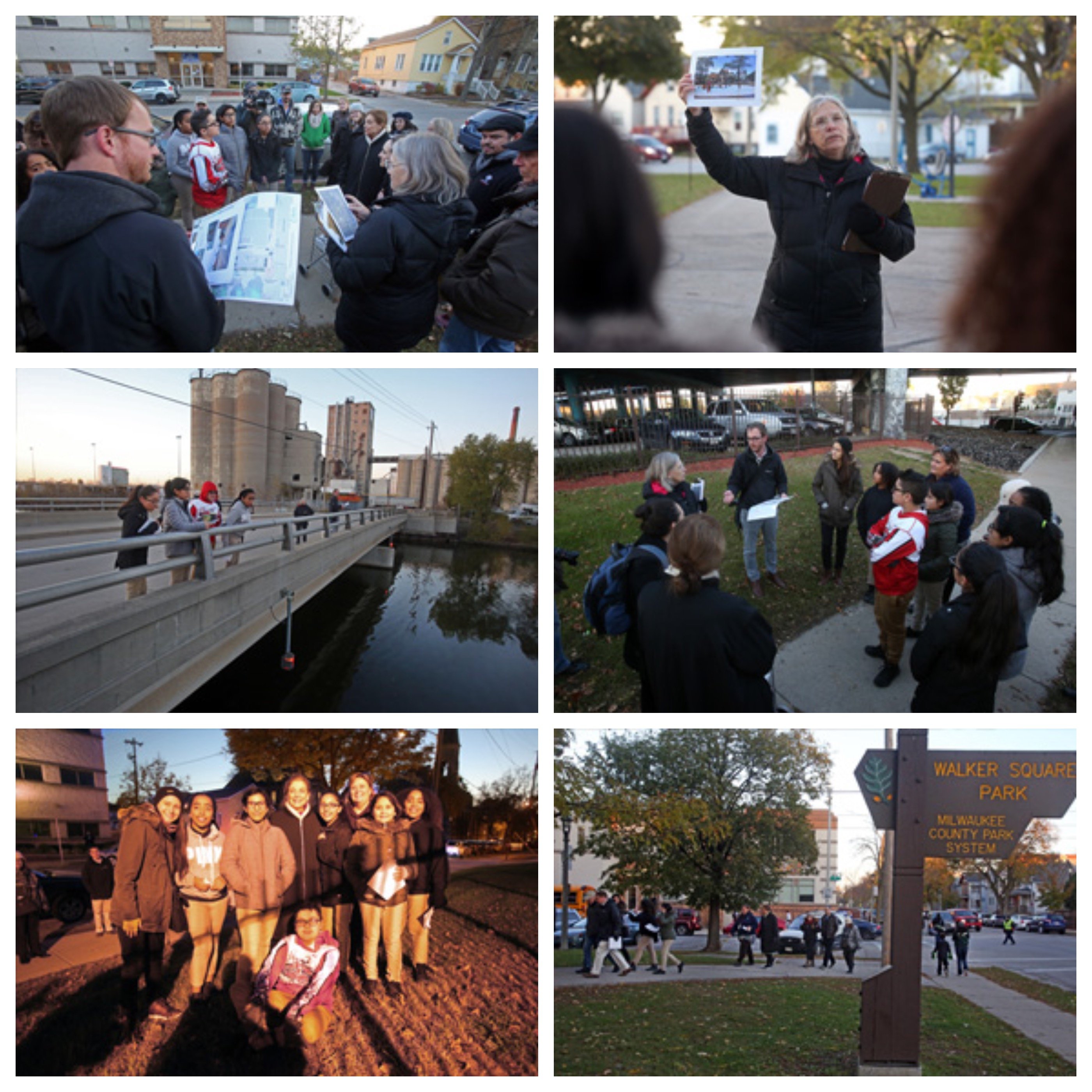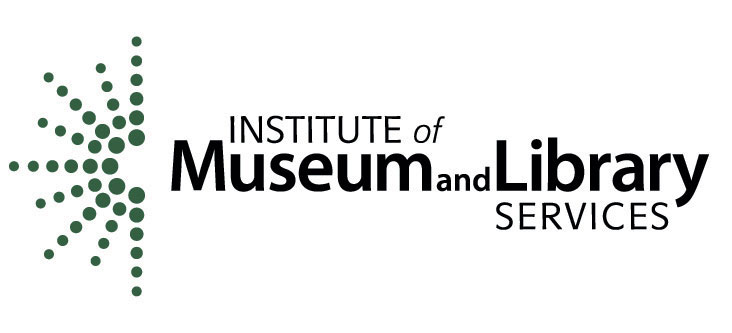After co-leading the June 9, 2018 WaterMarks walk with Nancy Frank, artist Mollie Oblinger decided to present a proposal for a public art installation during the KKRNIA and SKKRNIAummer Picnic. The proposals from all three artists were so popular that many community members wanted to see all three realized. The Sixteenth Street Community Health Centers subsequently applied for and received funding through a Milwaukee Arts Board grant to support Mollie’s Bird, Bat, and Owl Houses.
Mollie started by making early pencil drawings after talking to the community about the project.
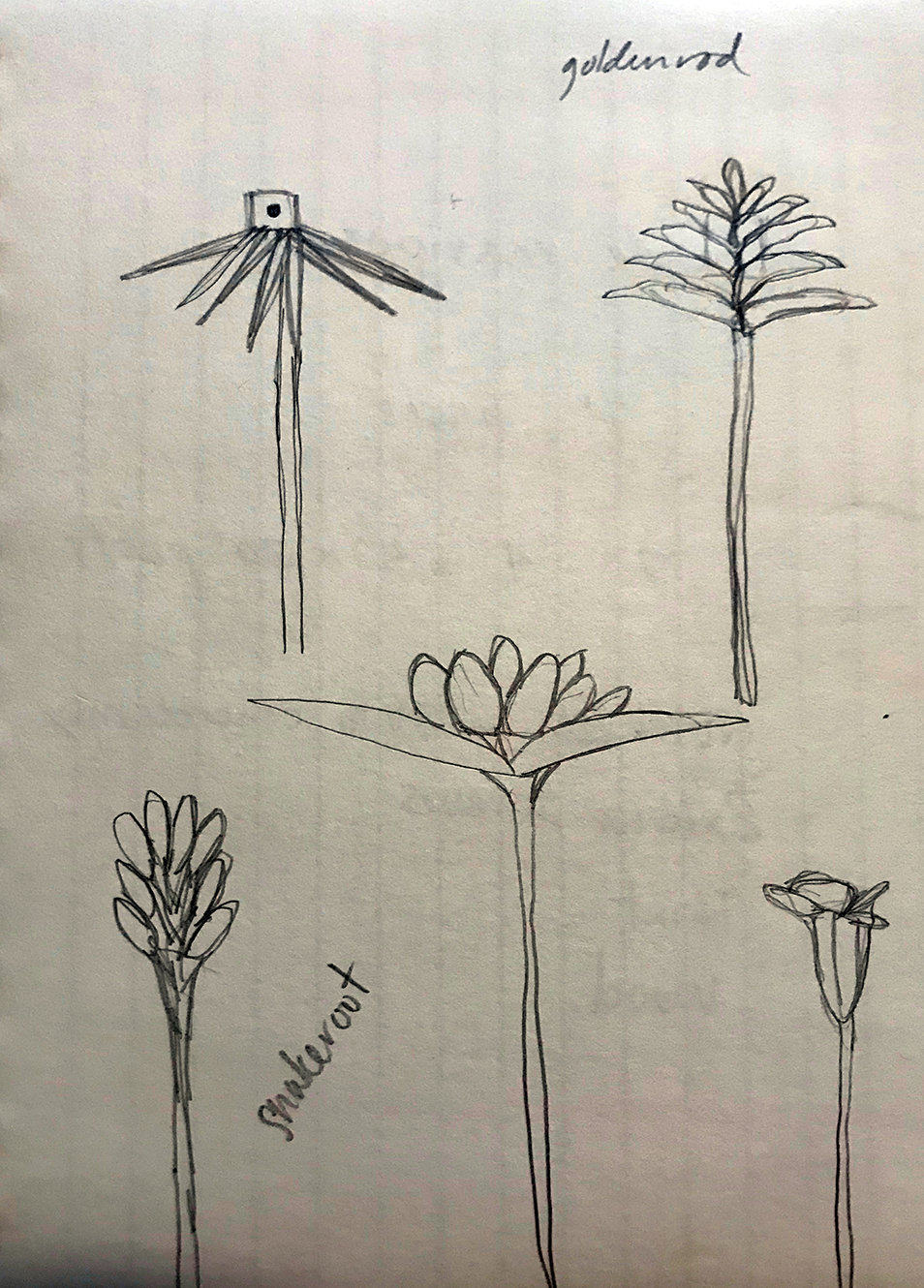
While working on the proposal, Mollie went on bird walks like the June 9 walk to learn, to meet people, and to observe.
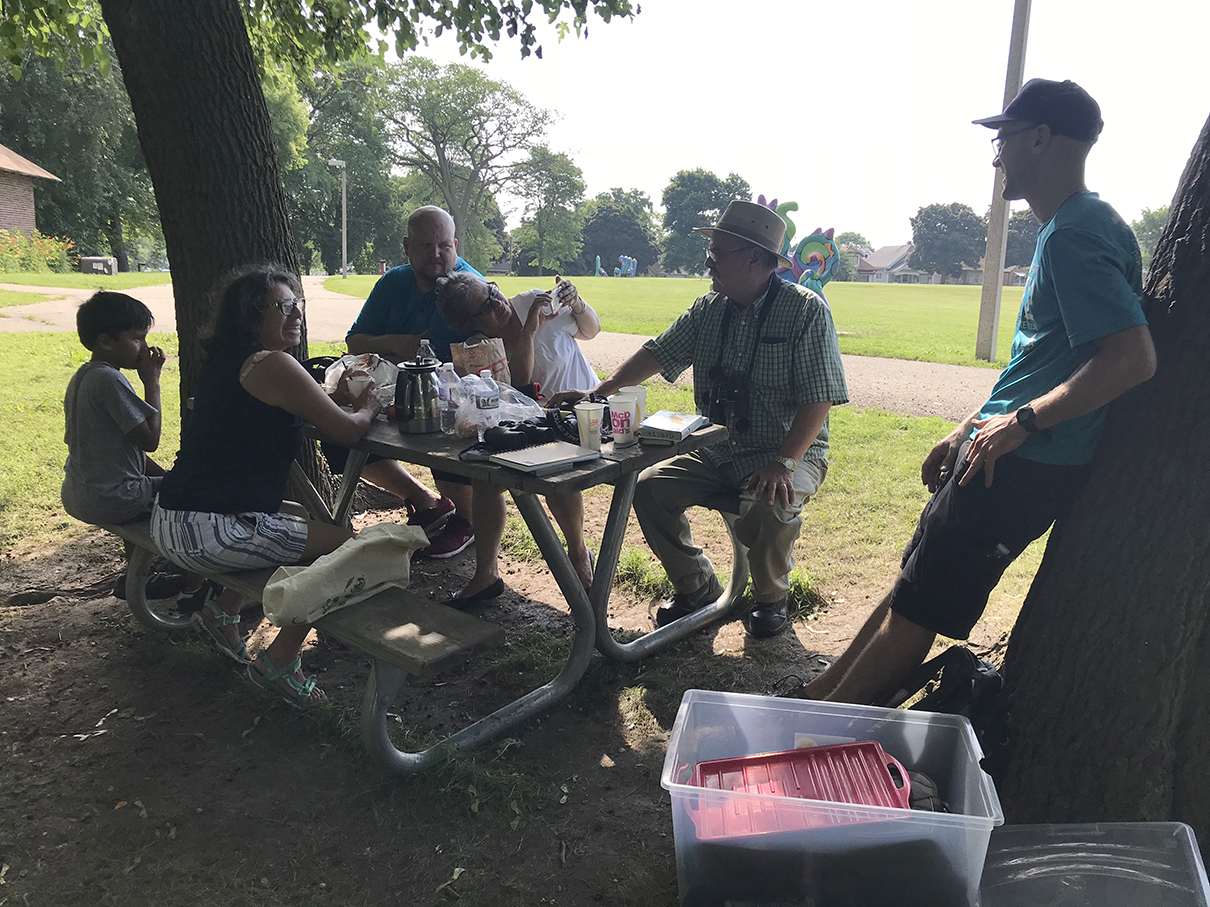
The next step for Mollie was to create digital drawings of the bird, bat, and owl houses.
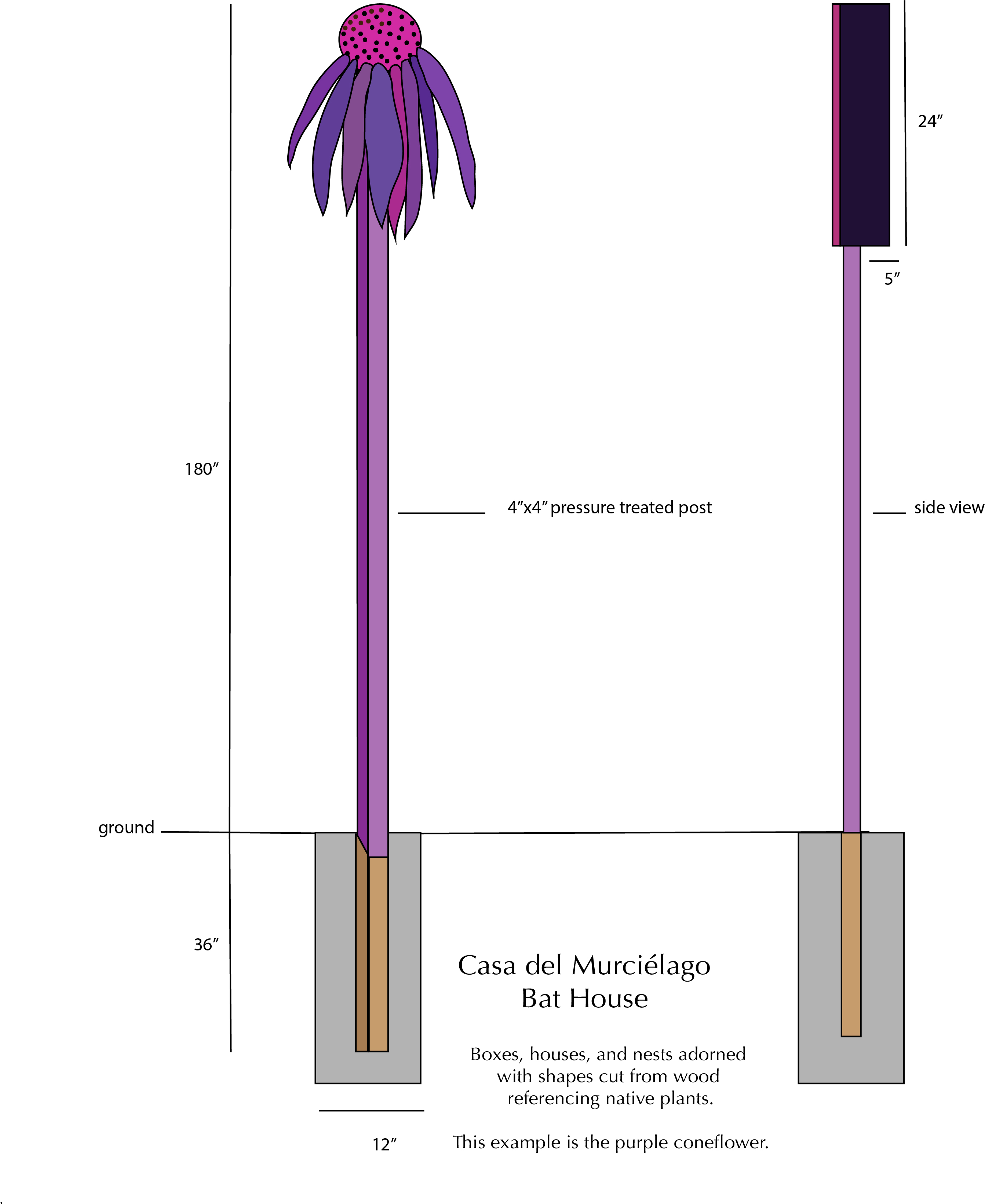
Mollie then focused on the construction of the Bird, Bat, and Owl Houses, using plans from the Cornell Lab of Ornithology website. Most components were constructed from cedar; however, the posts and bat house were made from exterior grade wood as recommended in the Cornell plans.
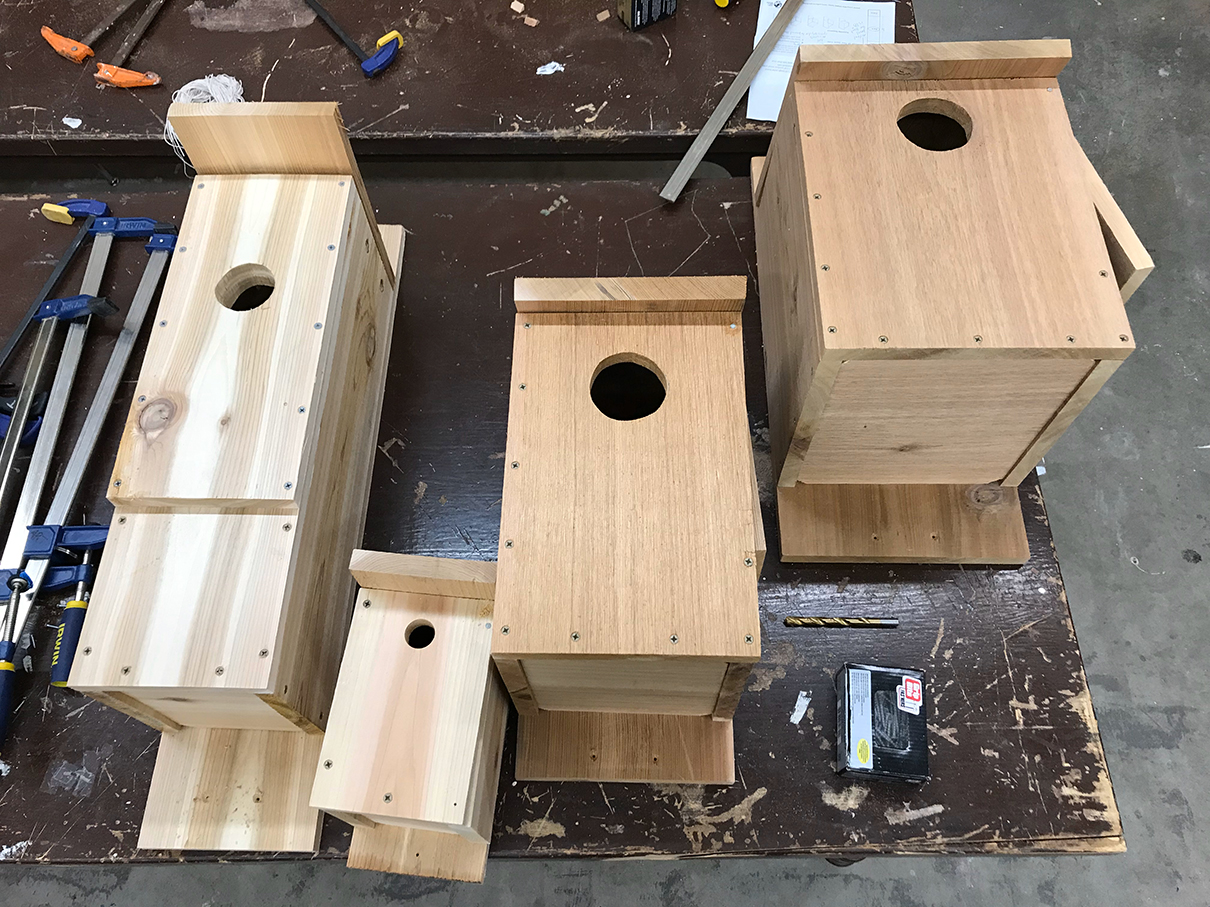
Along the way, Mollie realized that she should invest in better dust collection! But, as she said, “at least cedar smells good.”
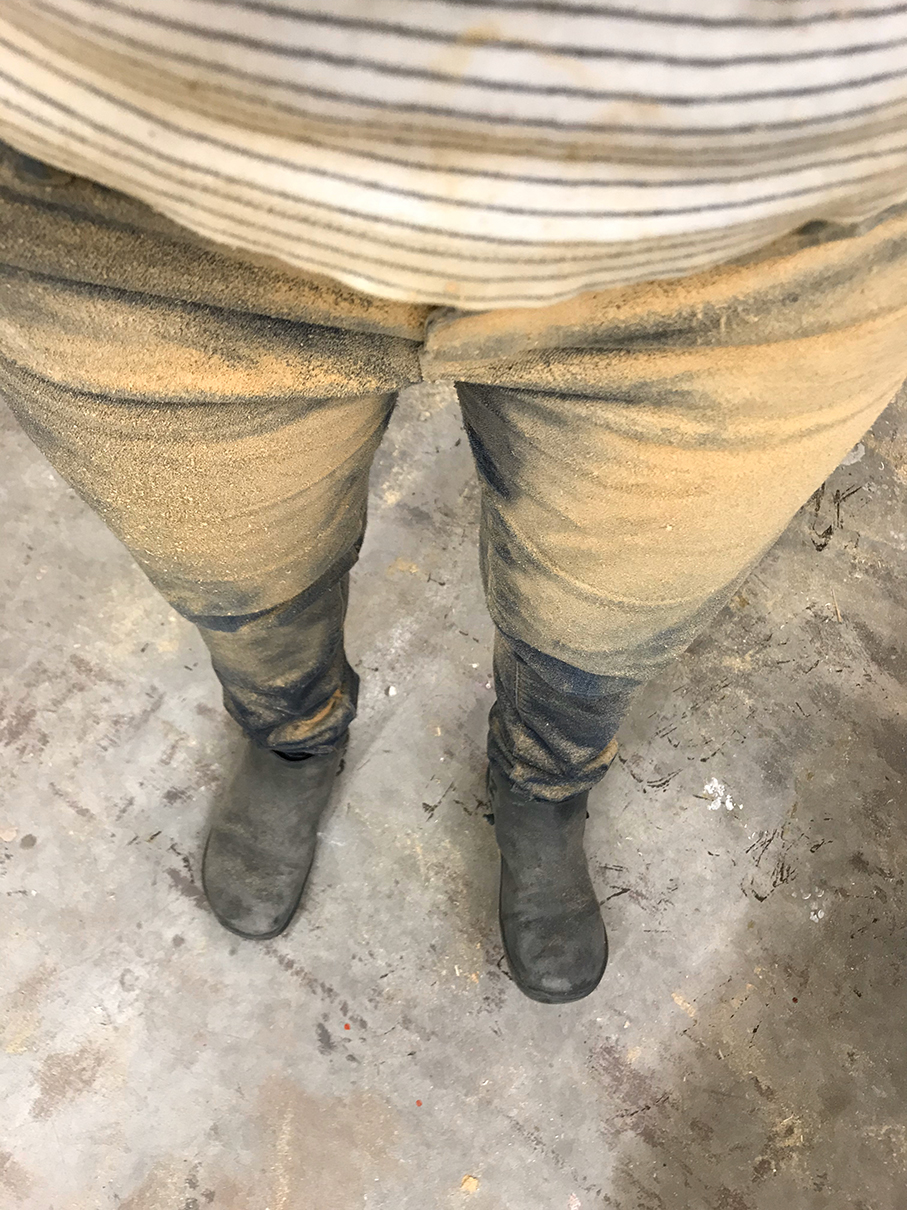
The next step was to apply a primer. Mollie only applied primer to the exterior of the boxes. While people like bright colors, birds are pretty happy with natural wood. One exception is bats, who need a black box to help keep them warm during Wisconsin’s cold winters. That is also the reason that Mollie’s bat house faces south.
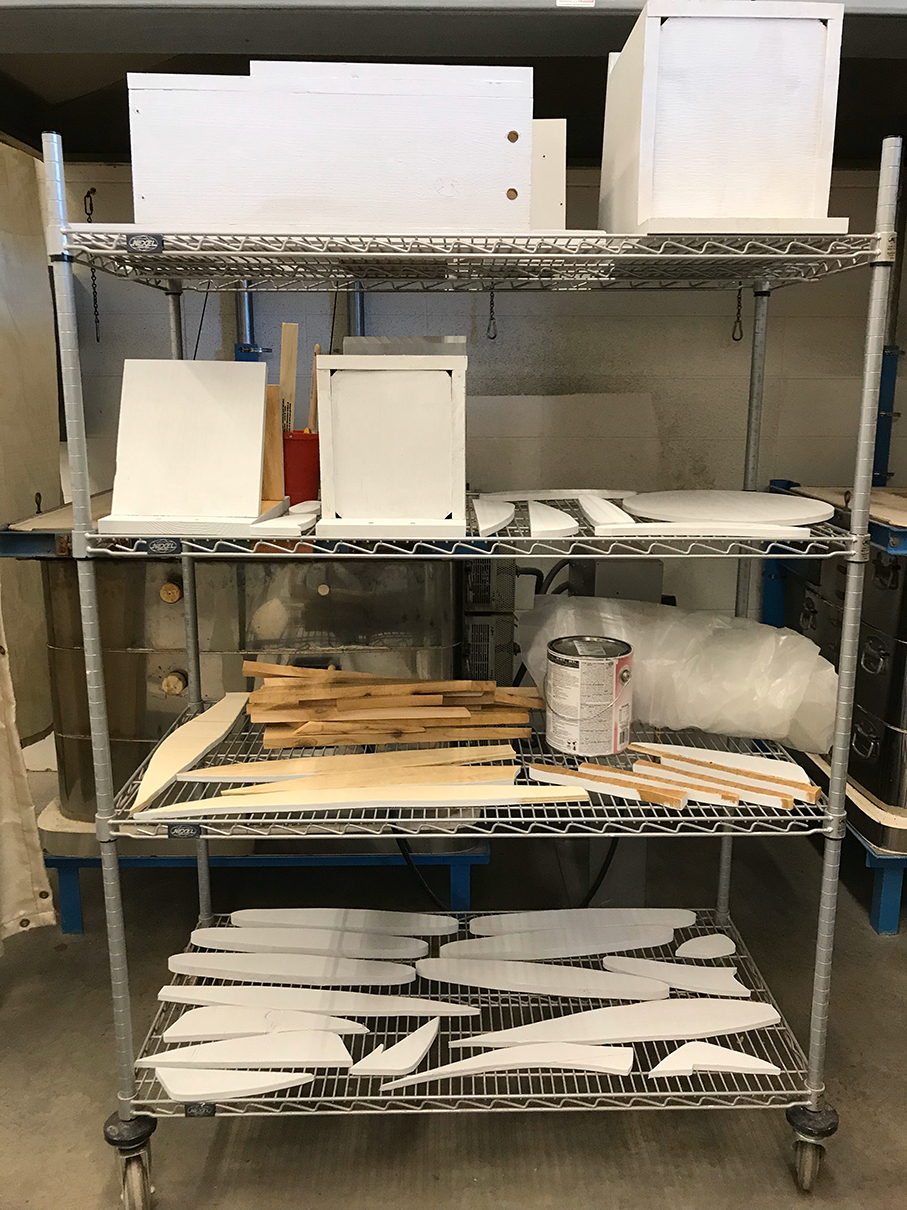
It was a cold, wet spring in 2019! But Mollie had to keep working in order to be ready for the scheduled May installation. She used a farmer’s shed and a portable heater to work on the posts. Since there weren’t any lights in the shed, Mollie wore a headlamp on cloudy days.
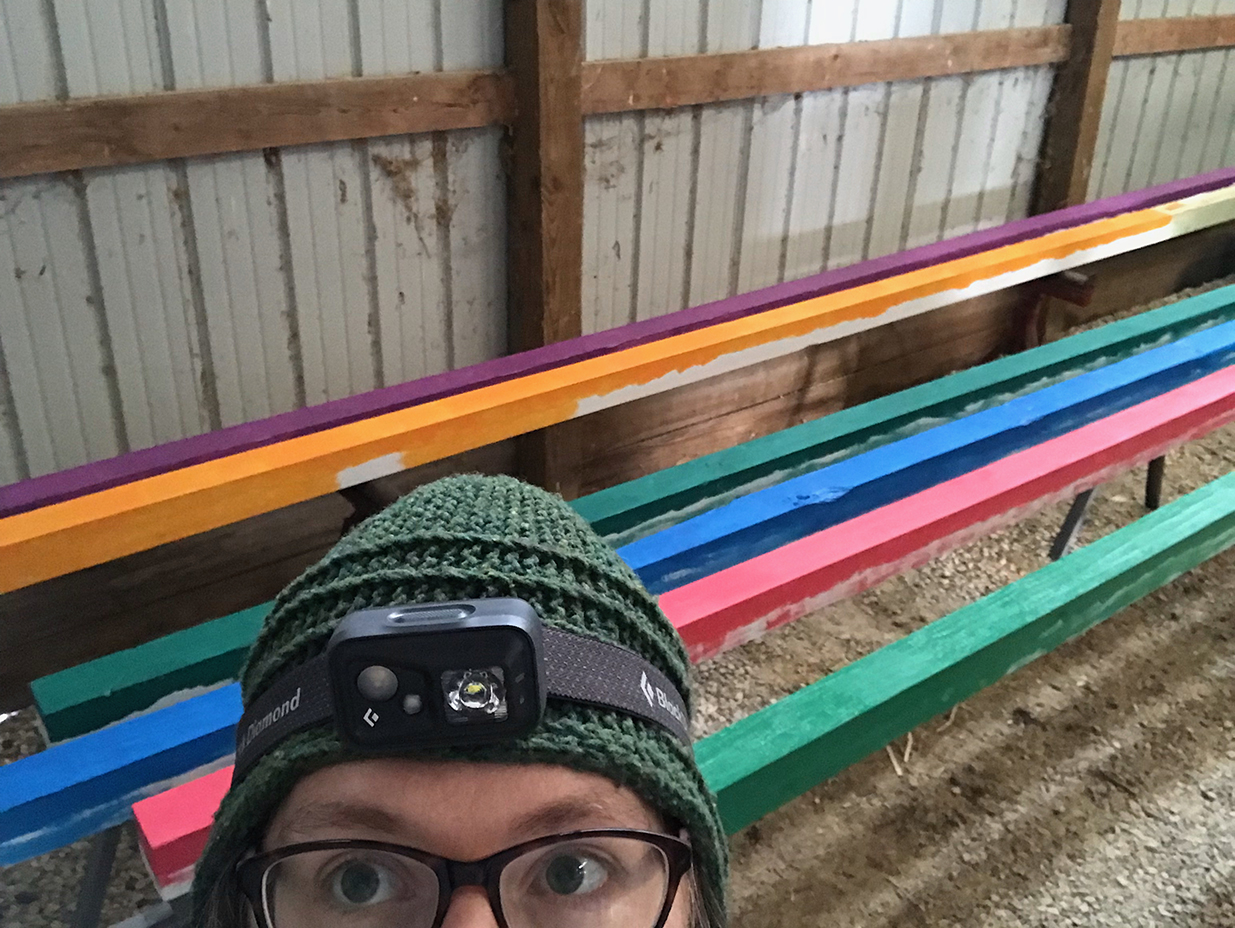
Indoors, painting the smaller parts was easier.
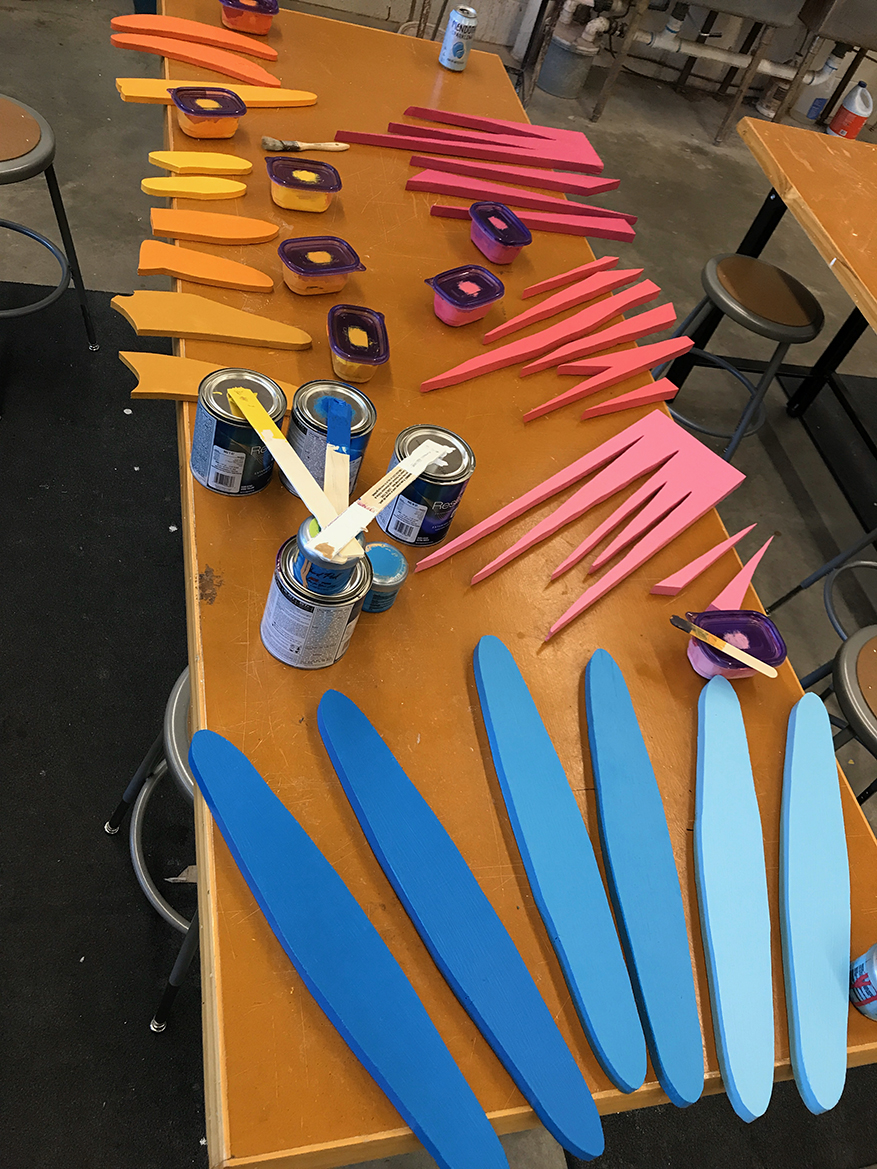
Mollie took over all of the tables in the studios at Ripon College during the 2019 spring break.
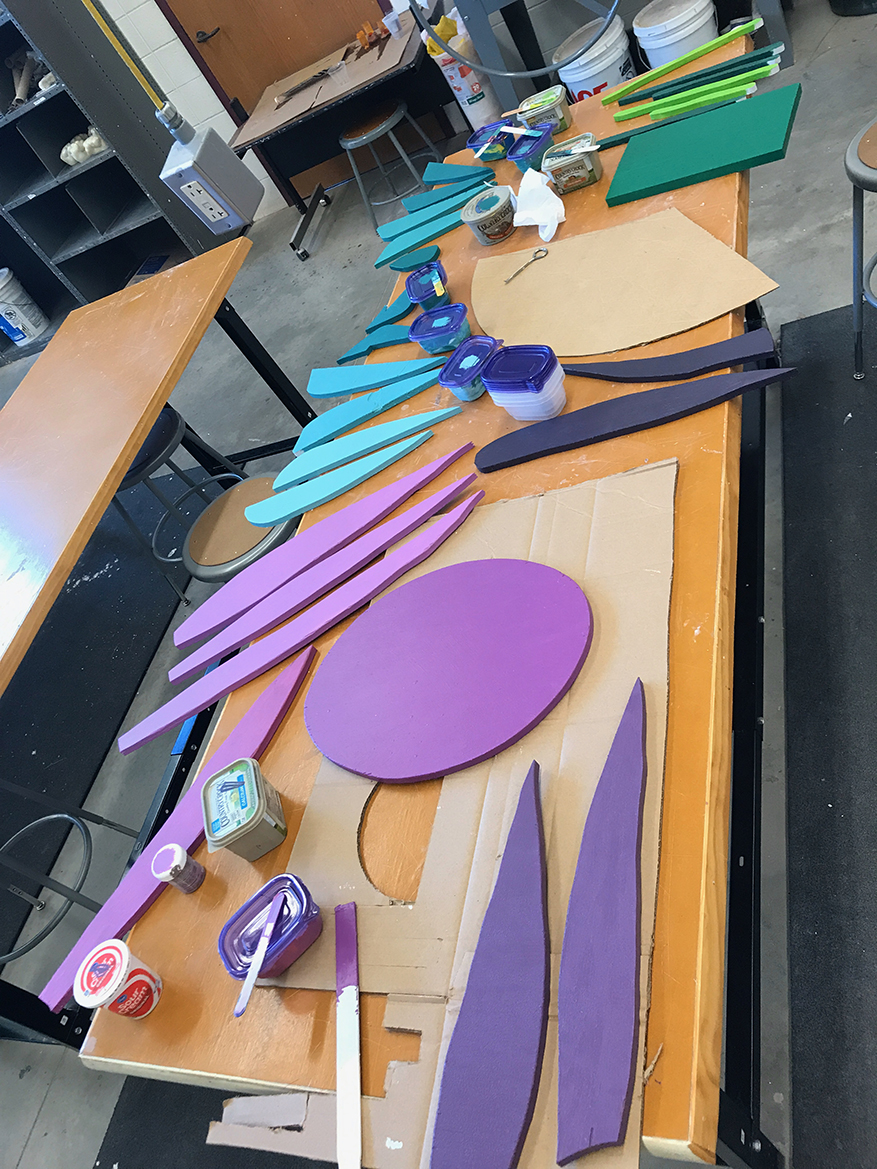
When the houses were ready to install, community members came off their porches to help! It was a great day, and the support and hard work from everyone was so heartwarming.
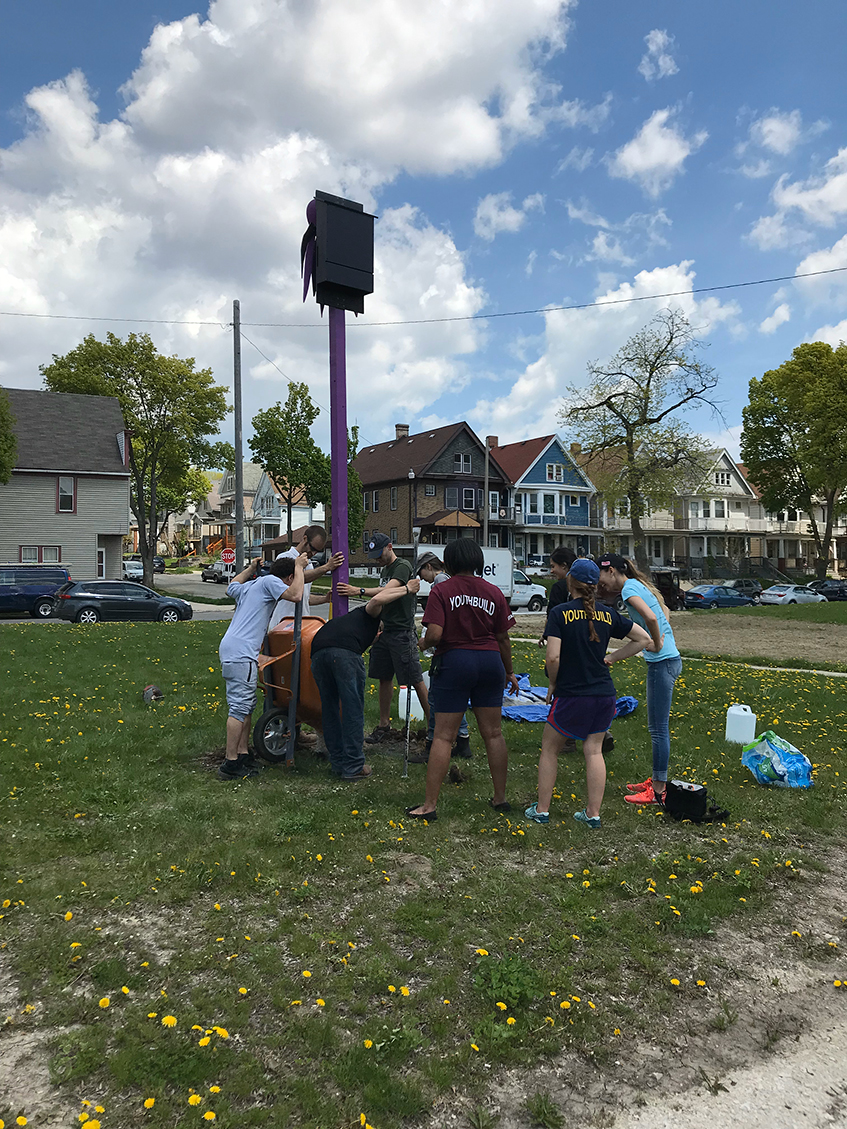
The many people involved that day represented the Haggerty Museum of Art, Sixteenth Street Community Health Centers, YouthBuild, YouthBuild River Neighbors in Action.
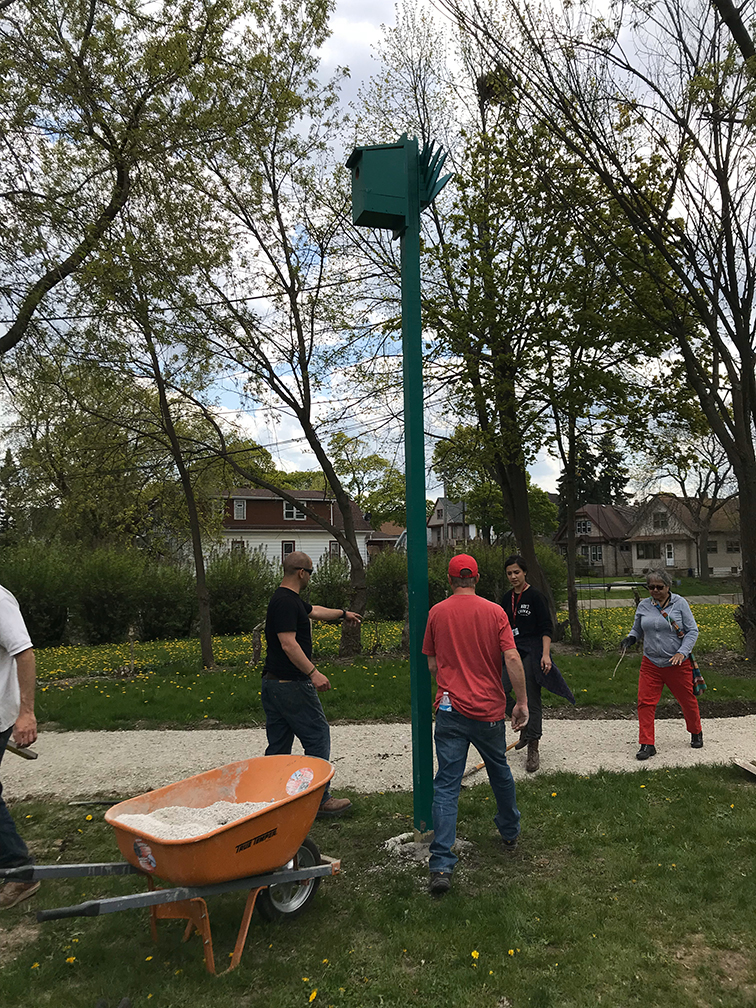
Esperanza (a local neighbor) brought everyone lunch. Travis (from KKRNIA) workKKRNIAhard, and Stephanie (from SSCHC) was amazing!
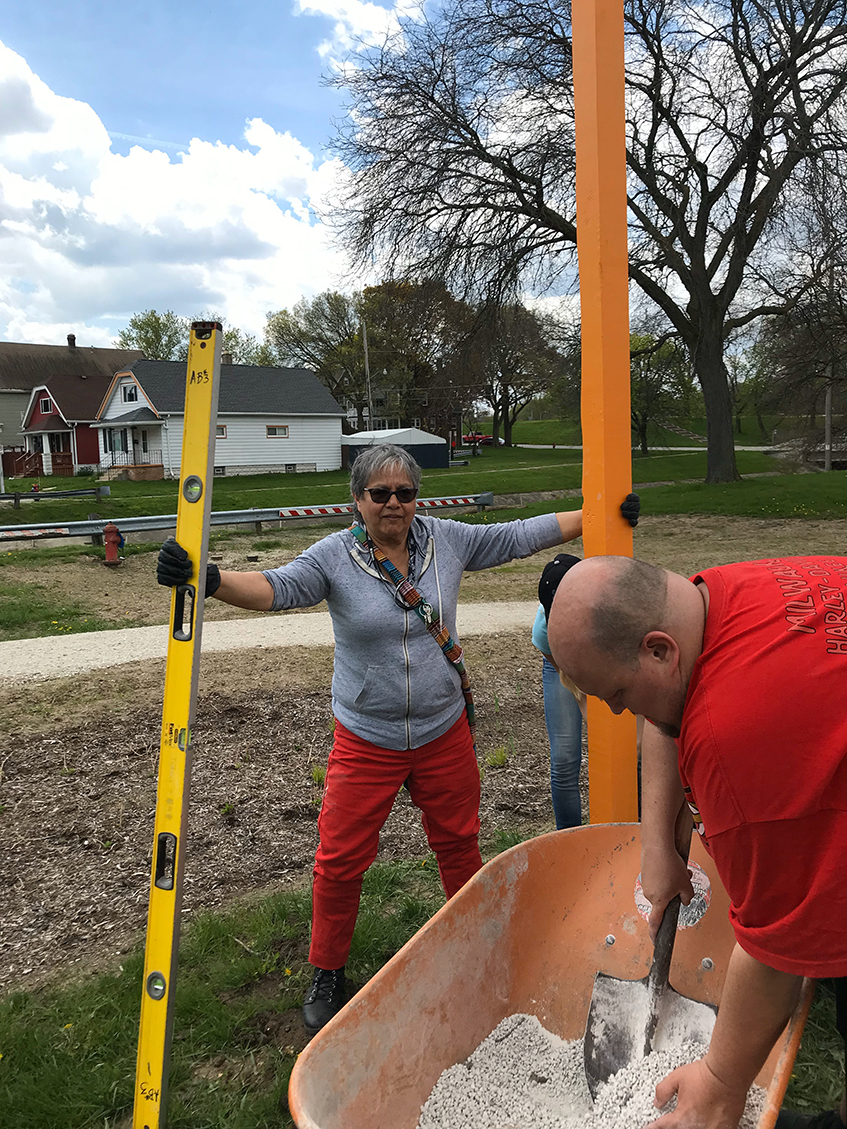
On May 25, 2019 we celebrated the sculptures during a Garden Day at Pulaski Park. This annual event serves as the opening day of the community garden. Once again, the community really came together and pitched in. This time, they formed a mulch brigade to get the garden ready for planting! Signage was installed on each of the bird and bat house posts, and then Mollie led a tour explaining the unique design of each house.
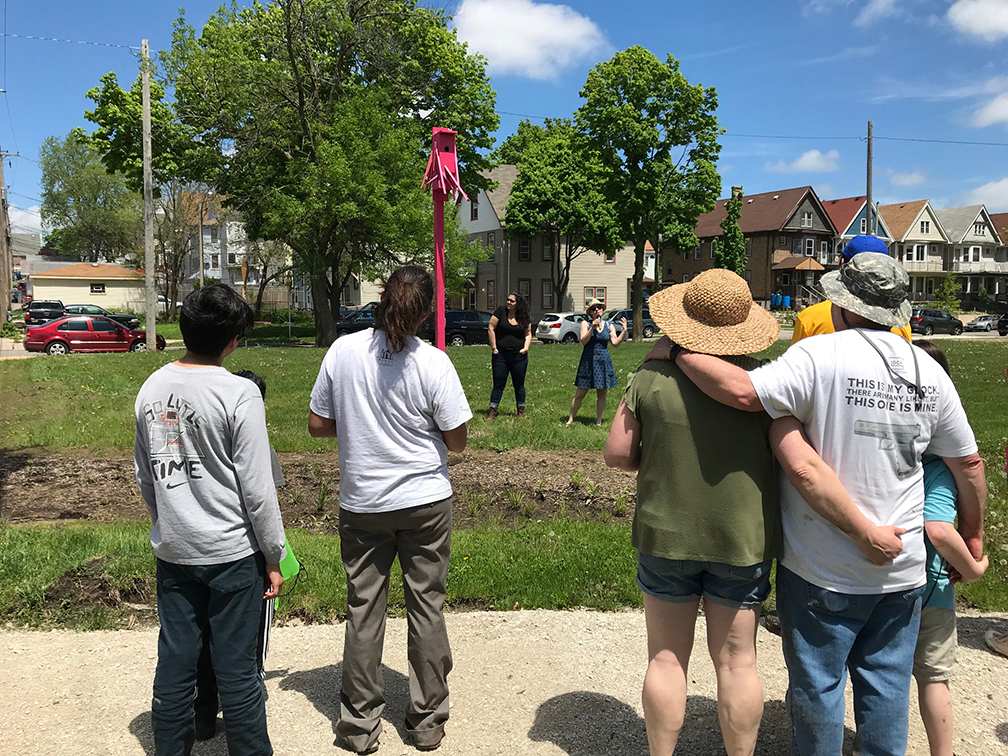
At the end of the tour, DanceCircus' Betty Salamun led Salamunup in a special water-inspired dance.
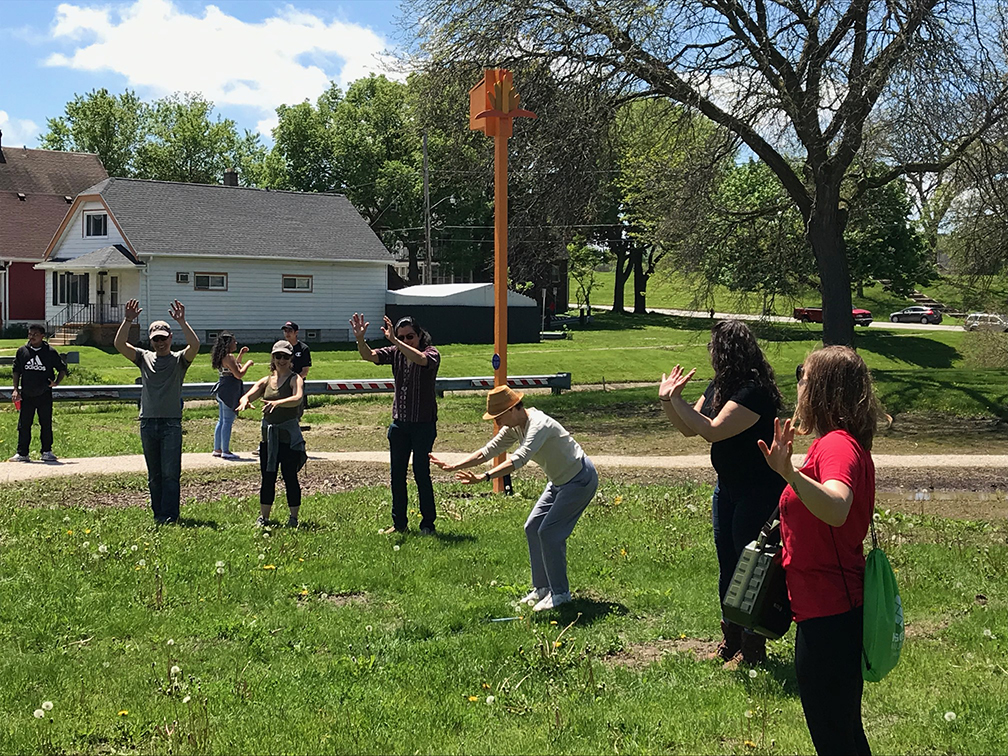
Mollie Oblinger, Bird, Bat, and Owl Houses, 2019. Six sculptures, wood and acrylic latex paint mounted on wooden posts. Dimensions variable, Installed along the Kinnickinnic River Trail.
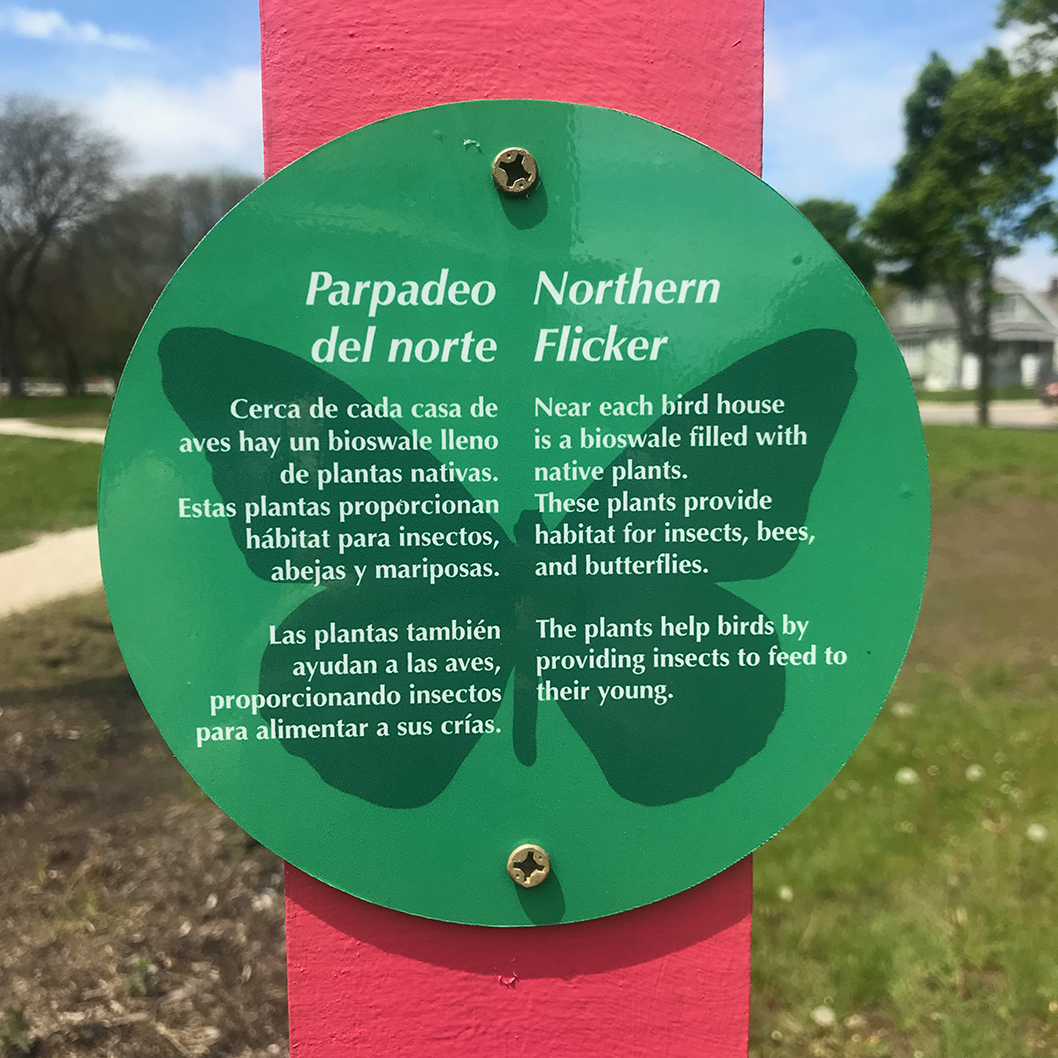
Staff from the Haggerty Museum of Art and, Sixteenth Street Community Health Centers were instrumental in making this project possible, as was funding from the Milwaukee Arts Board. Travis, Esperanza, and all of the KK River Neighbors in Action are the heart and soul of this project. Without their enthusiasm, sweat, and support it would not have been possible!


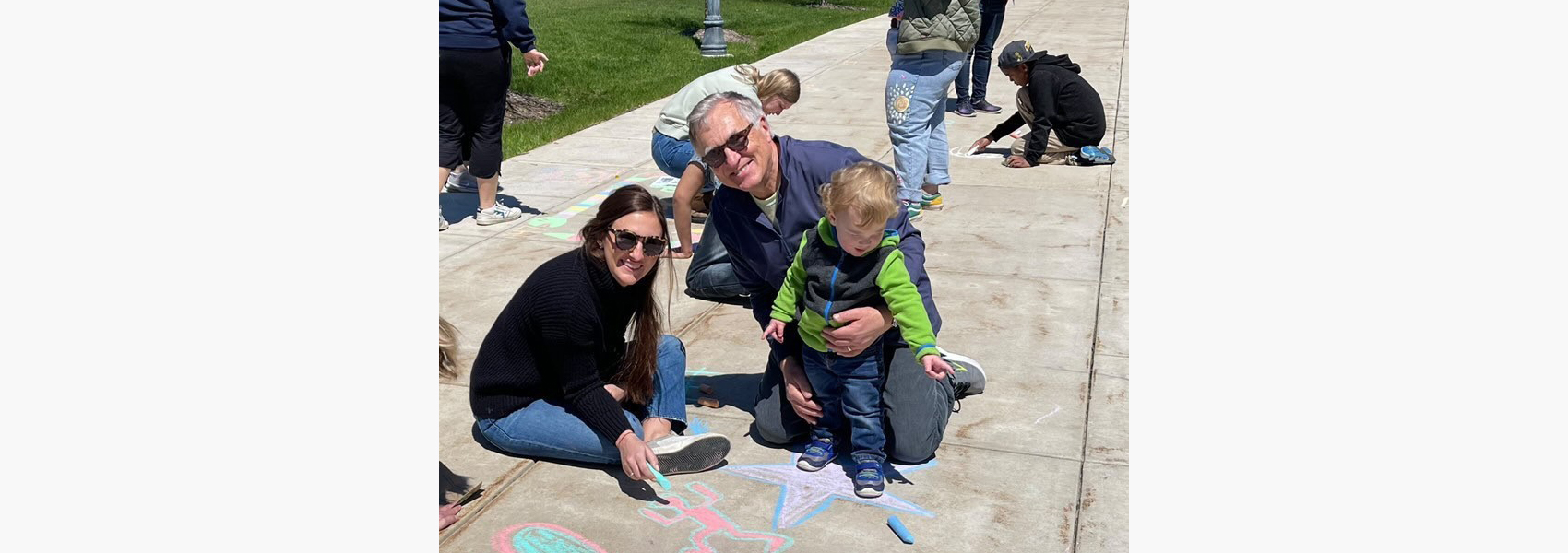
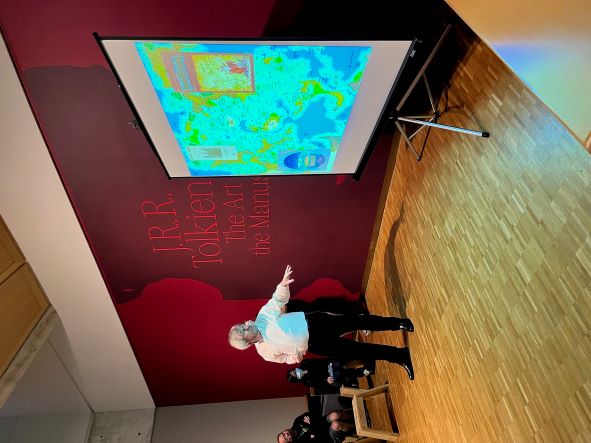
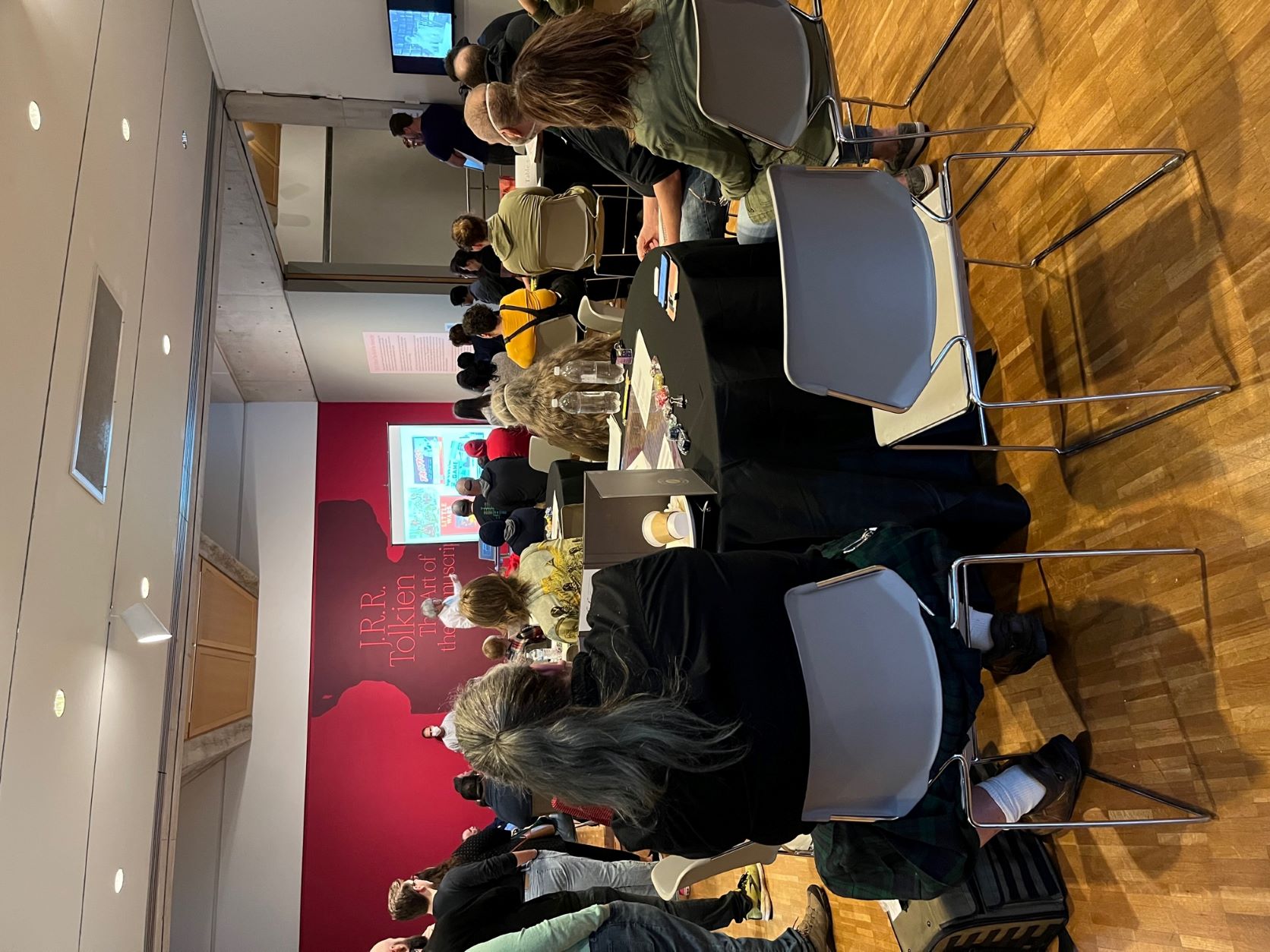
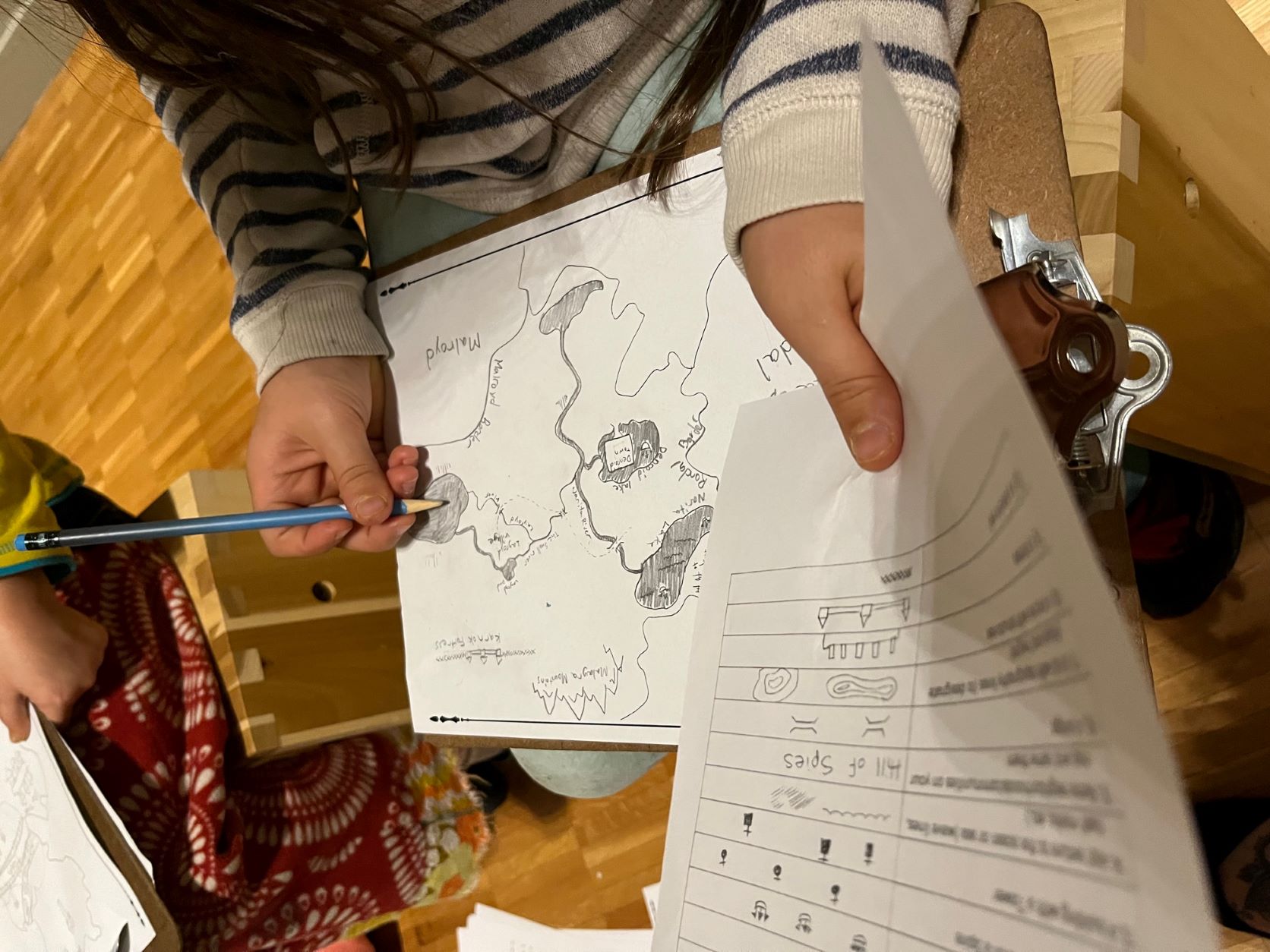
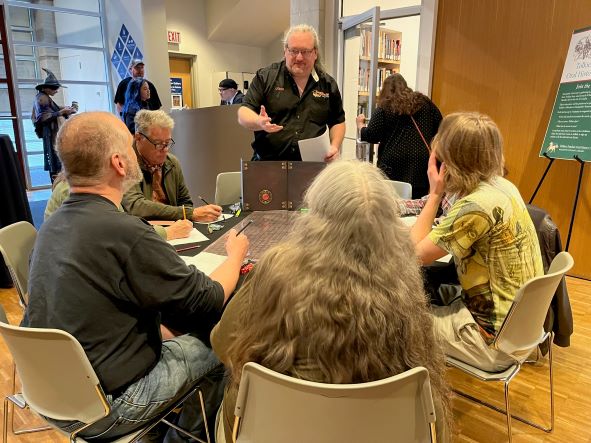
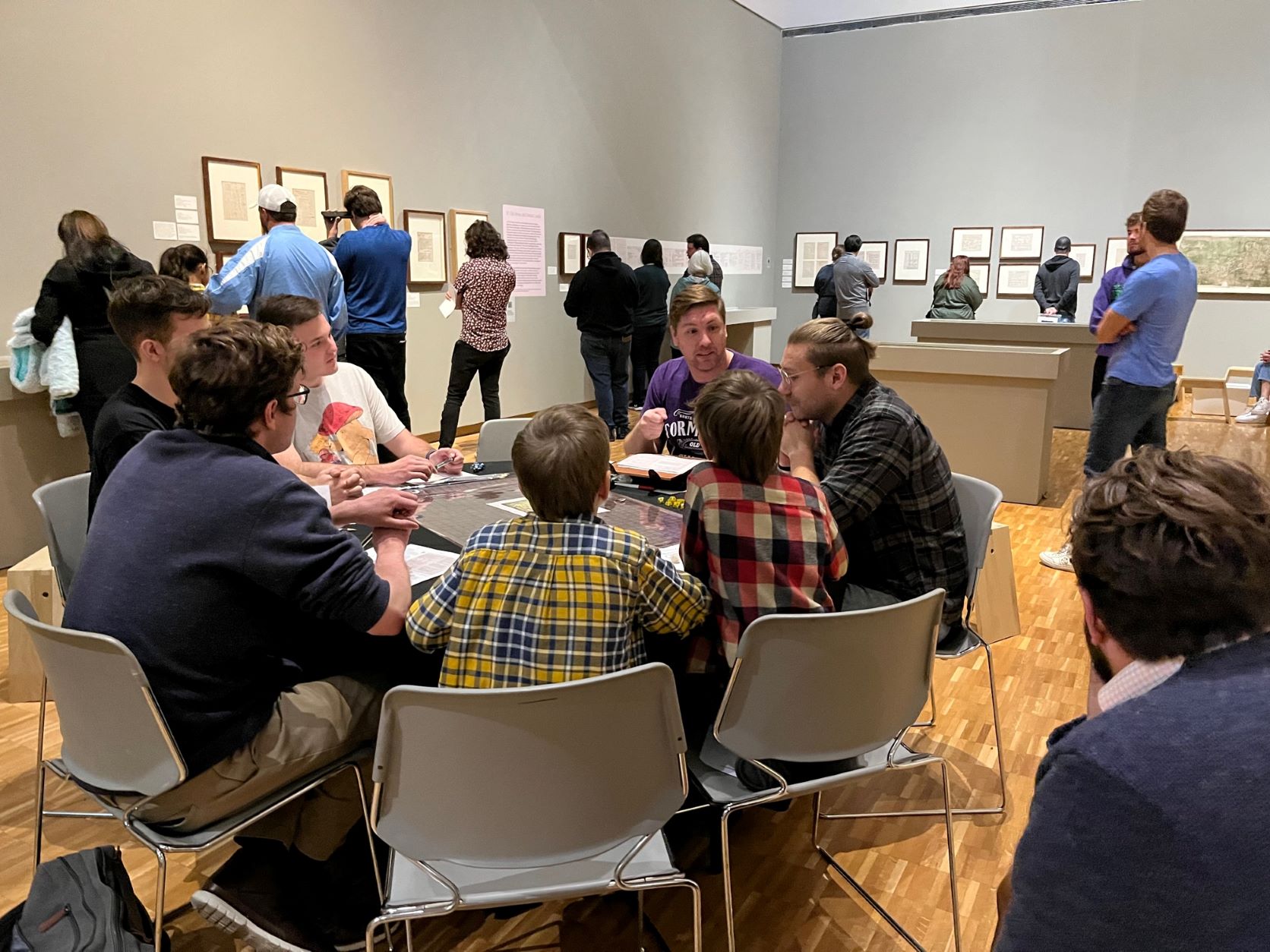
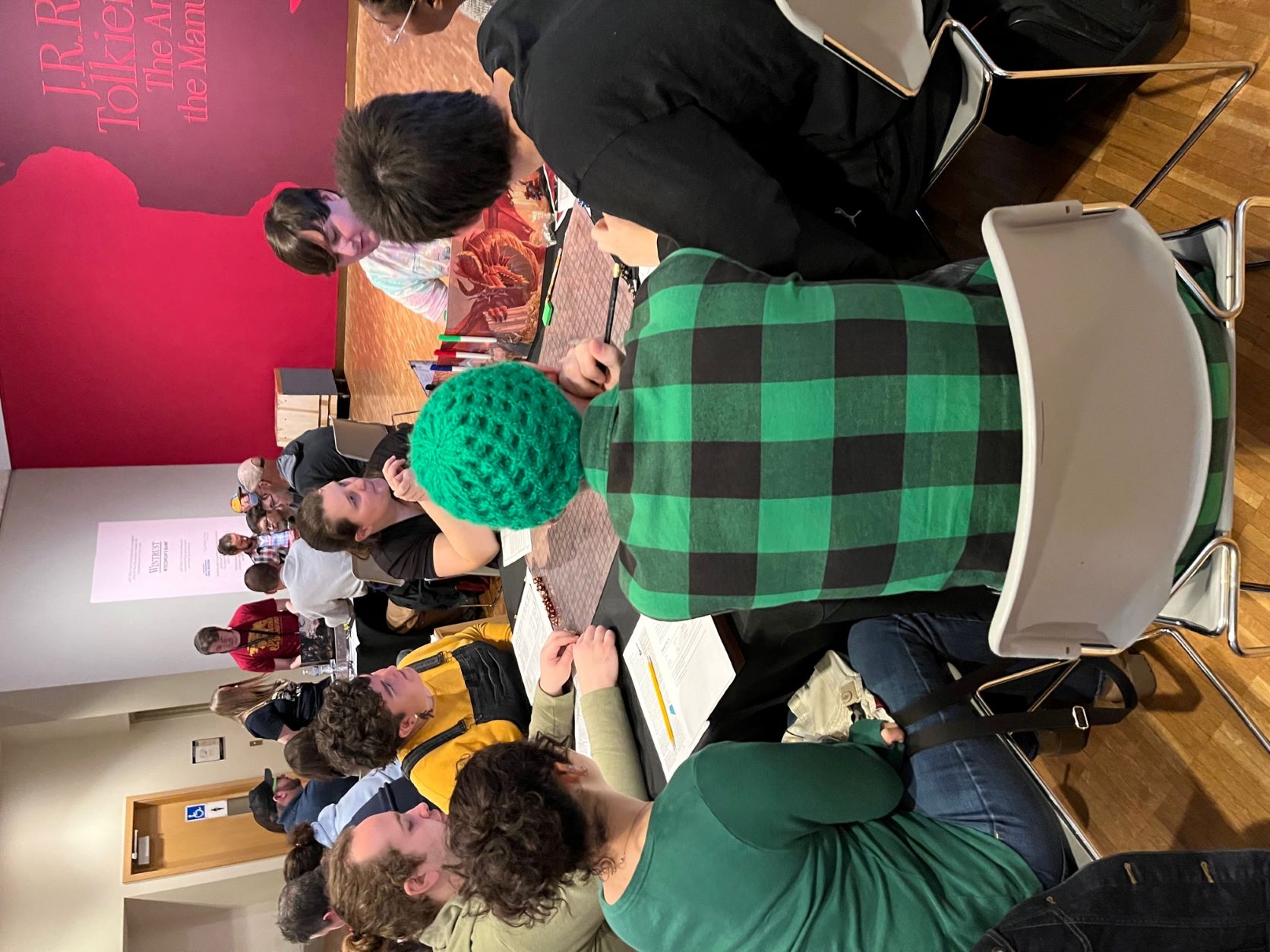
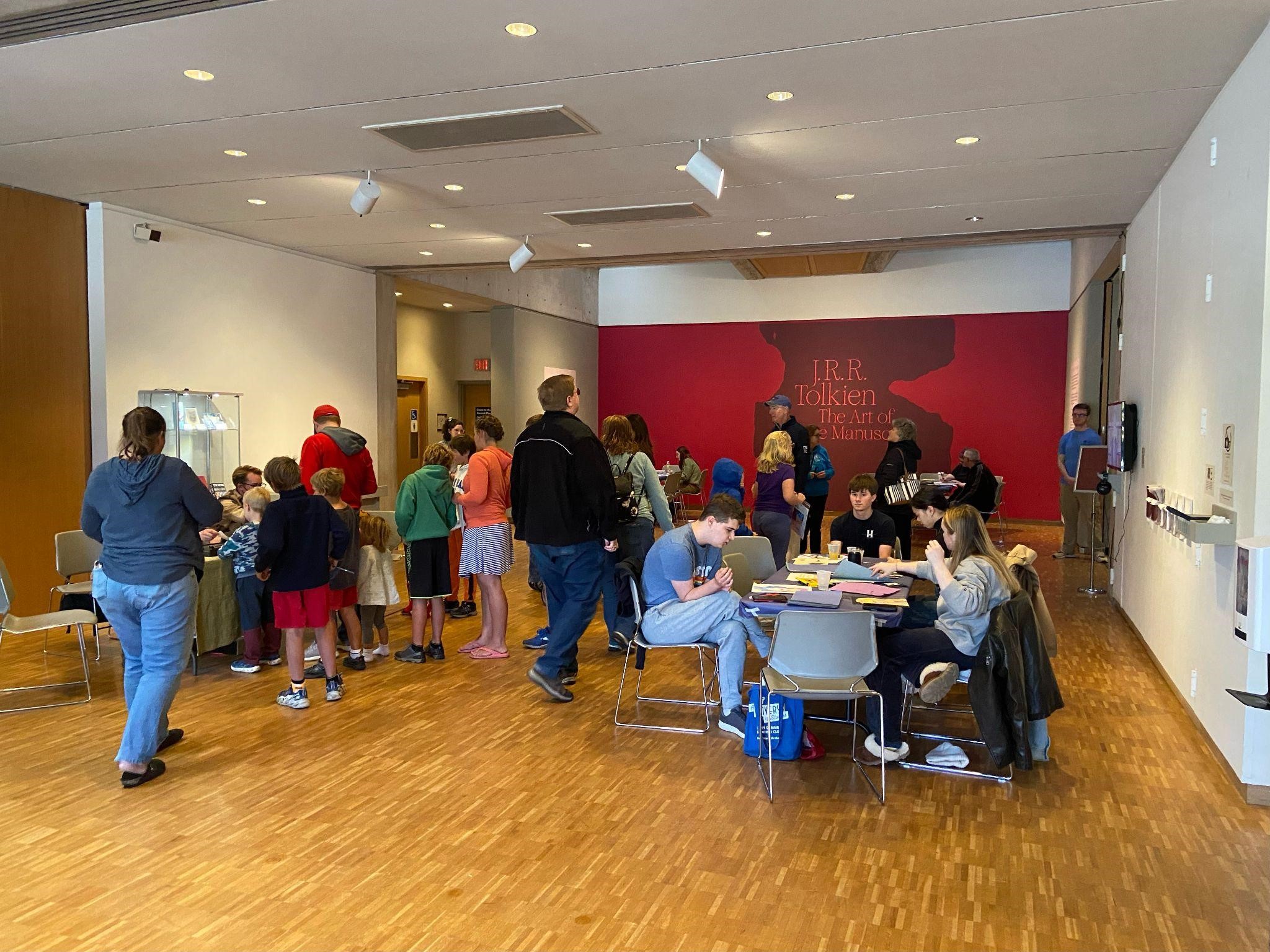
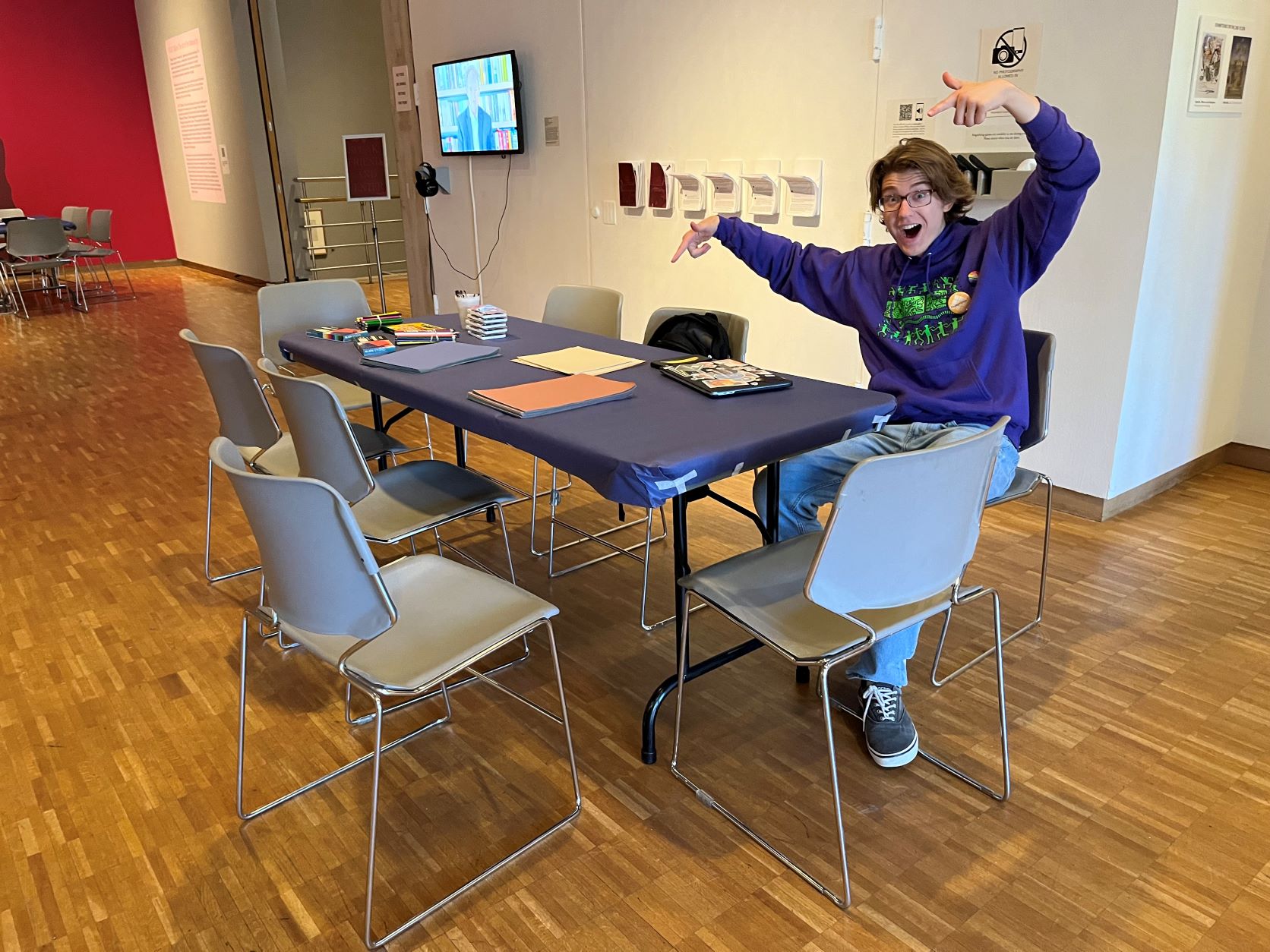
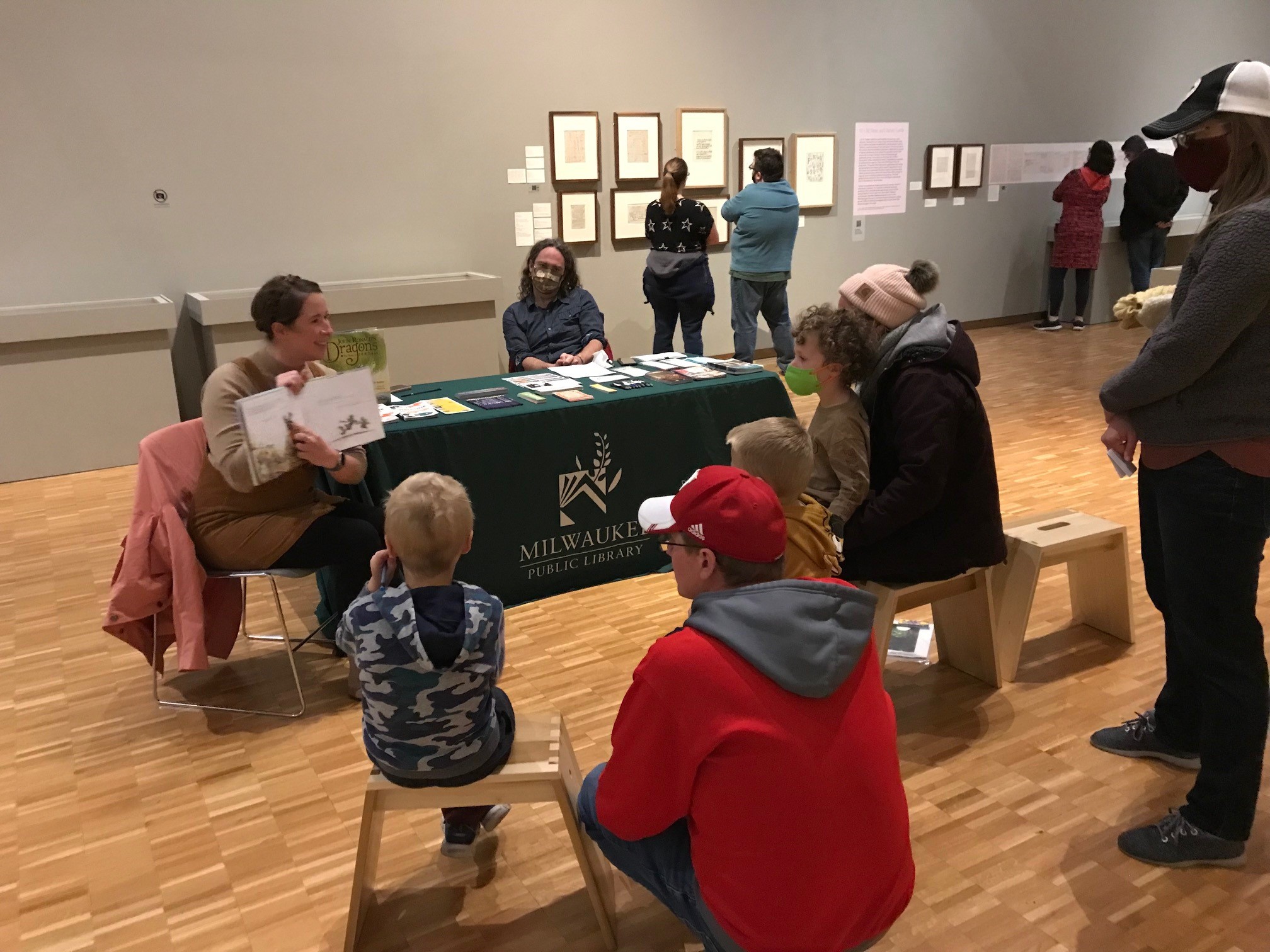
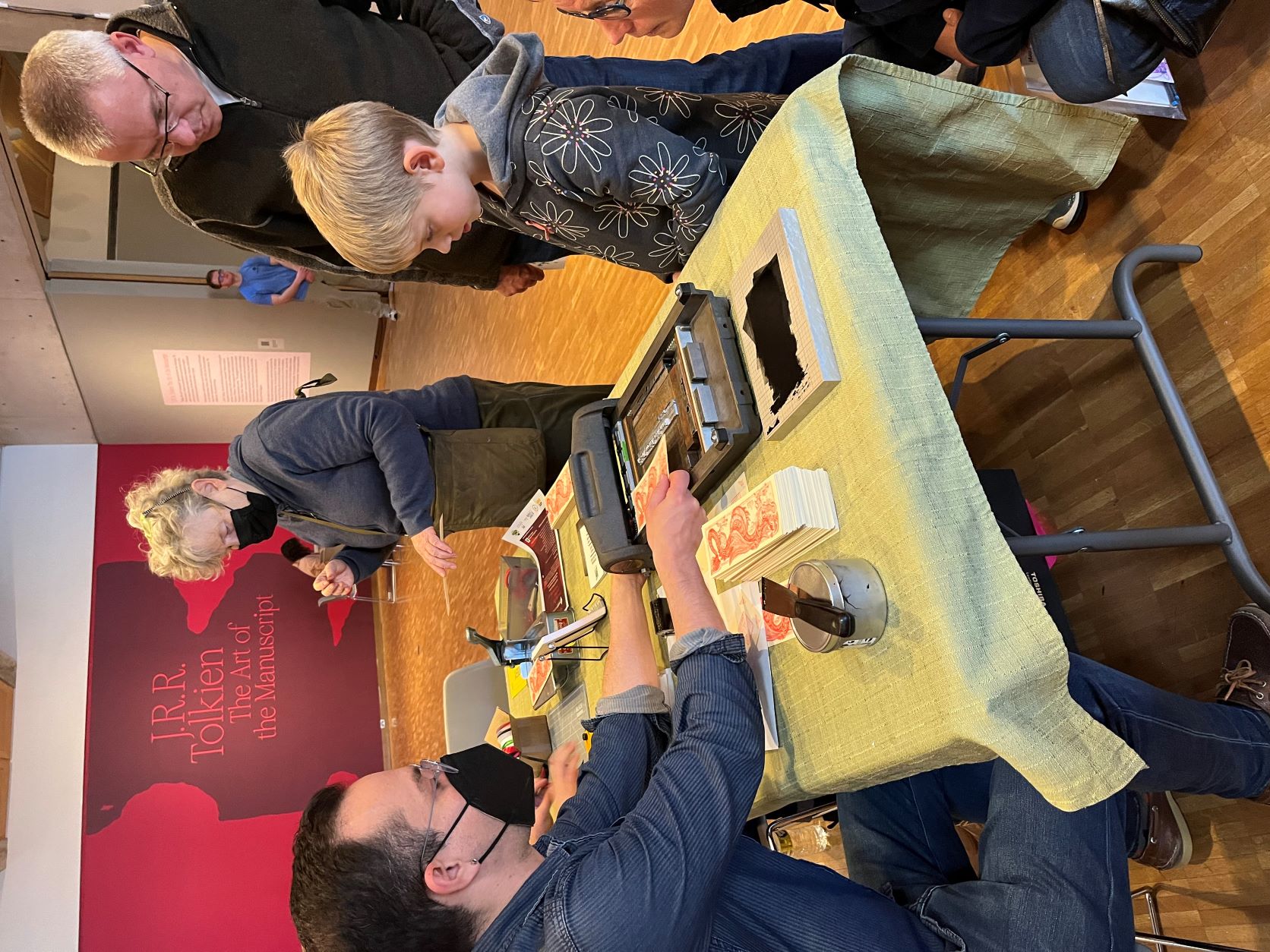
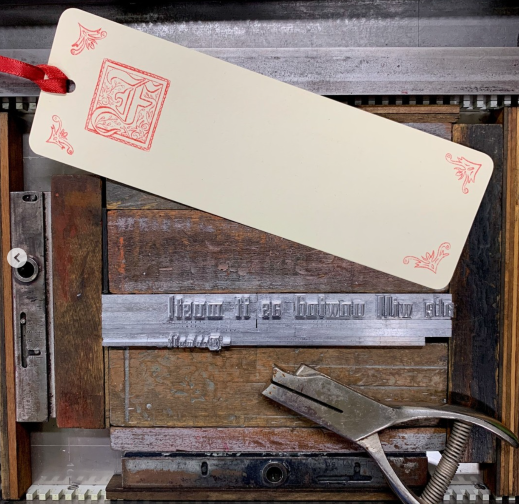
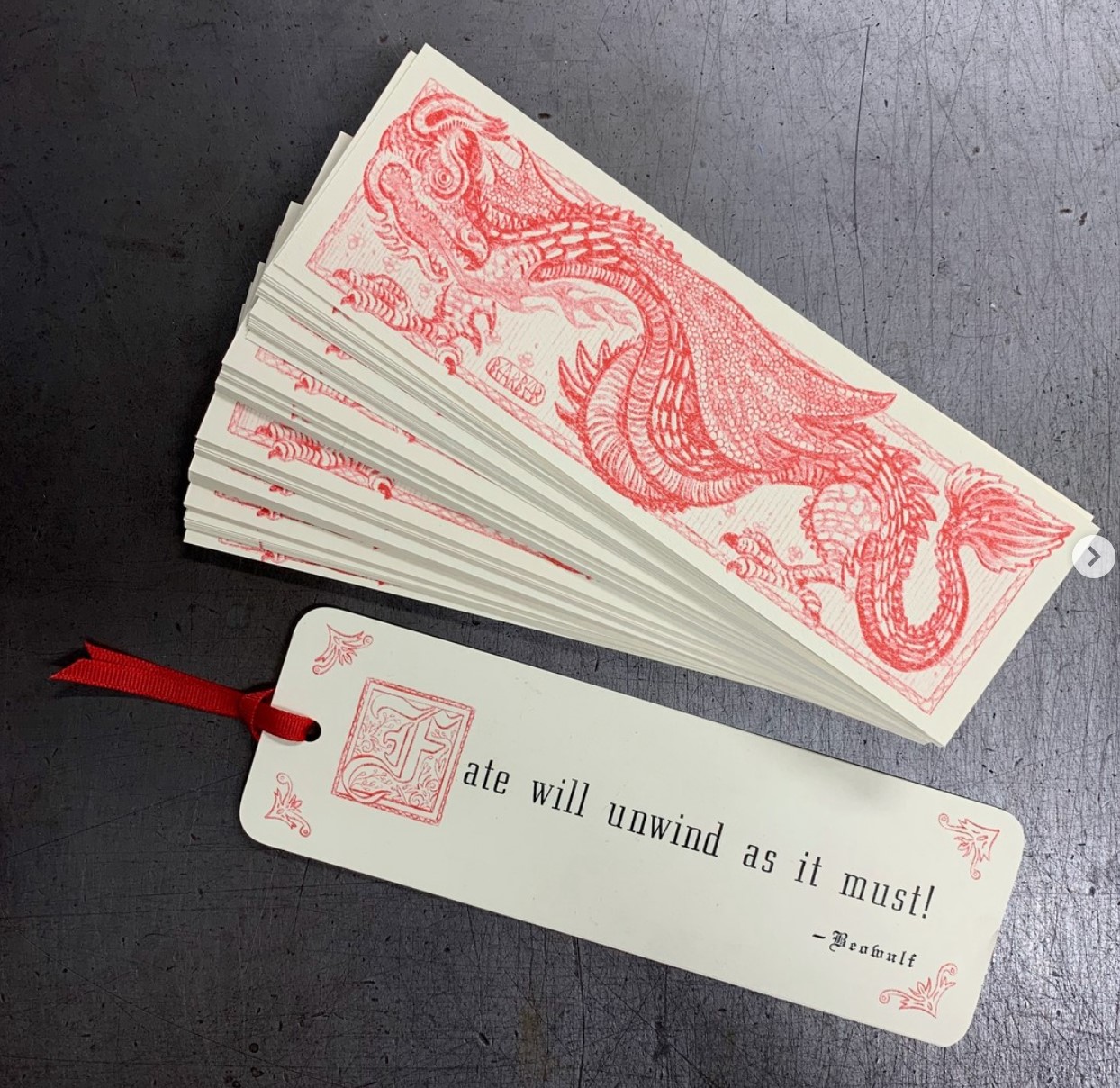
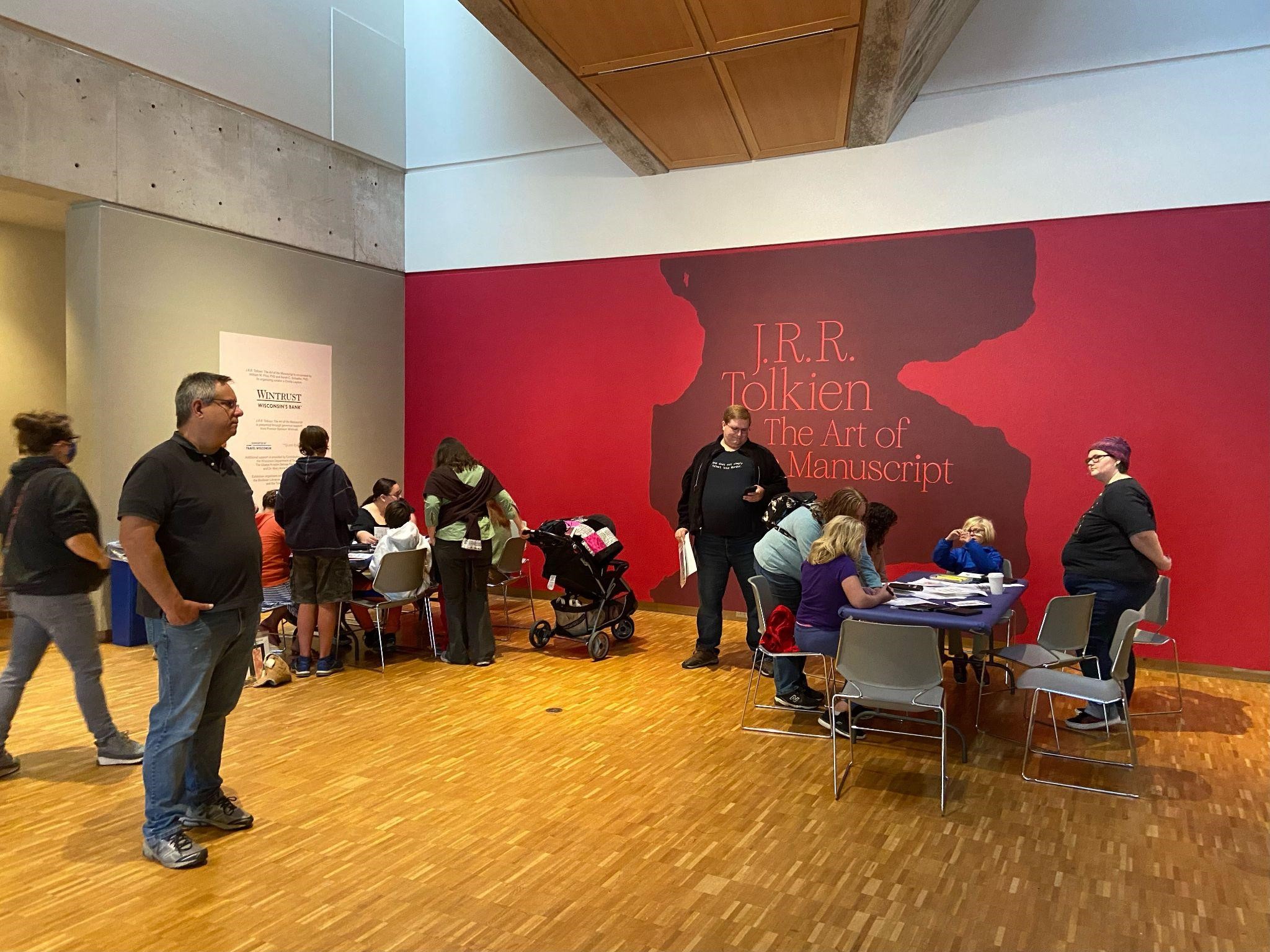
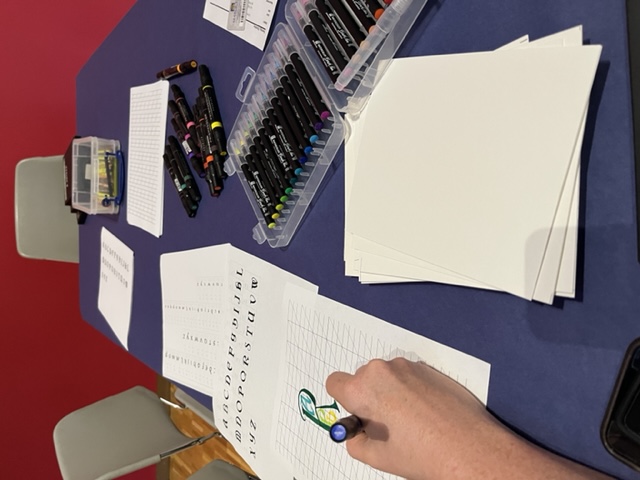
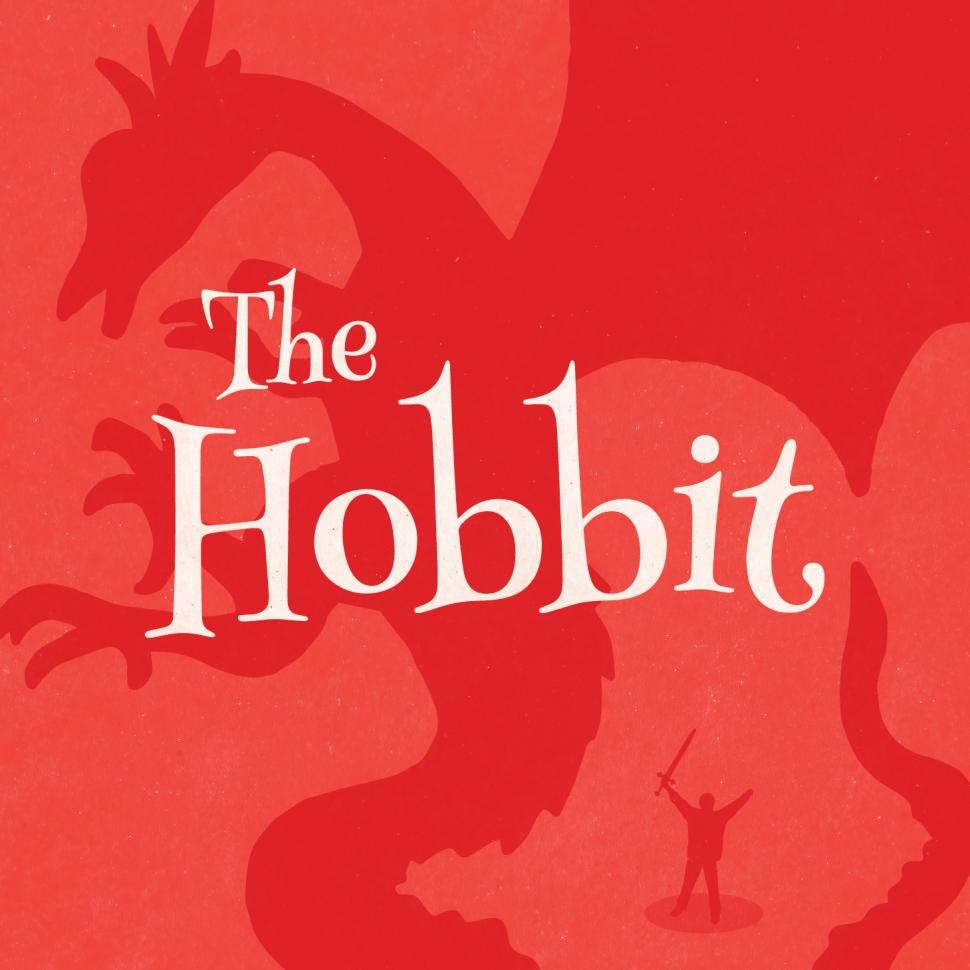
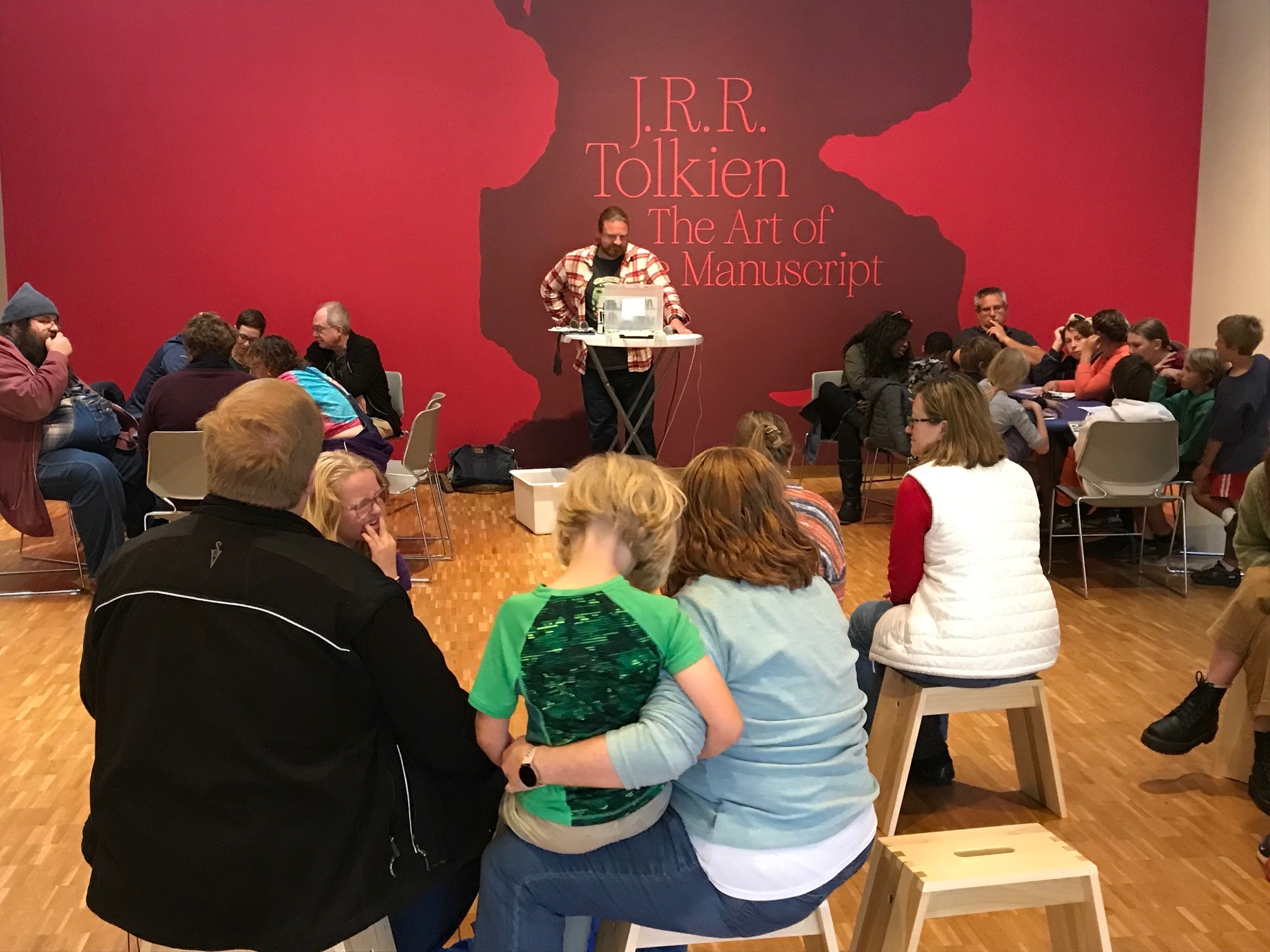
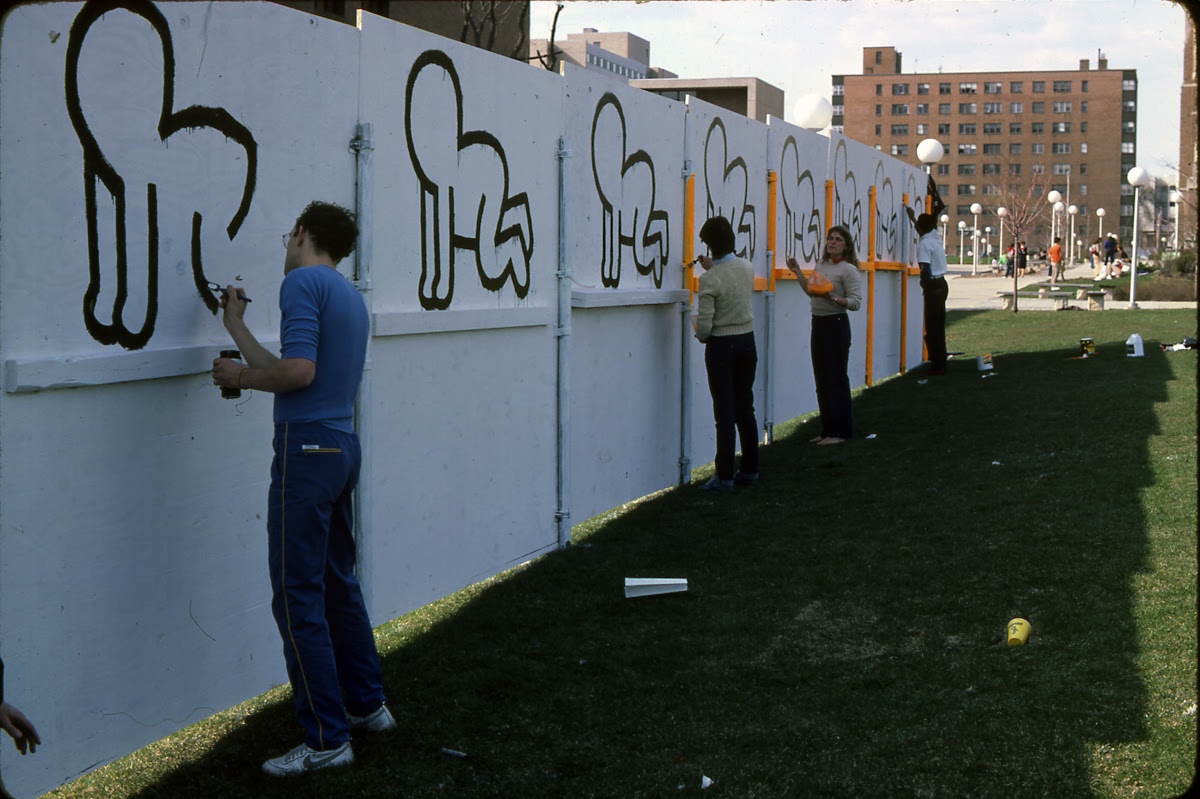
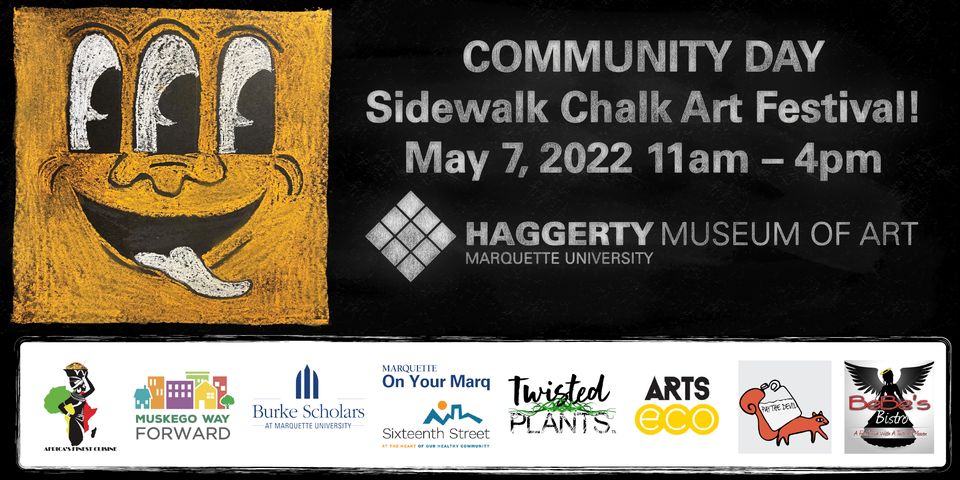
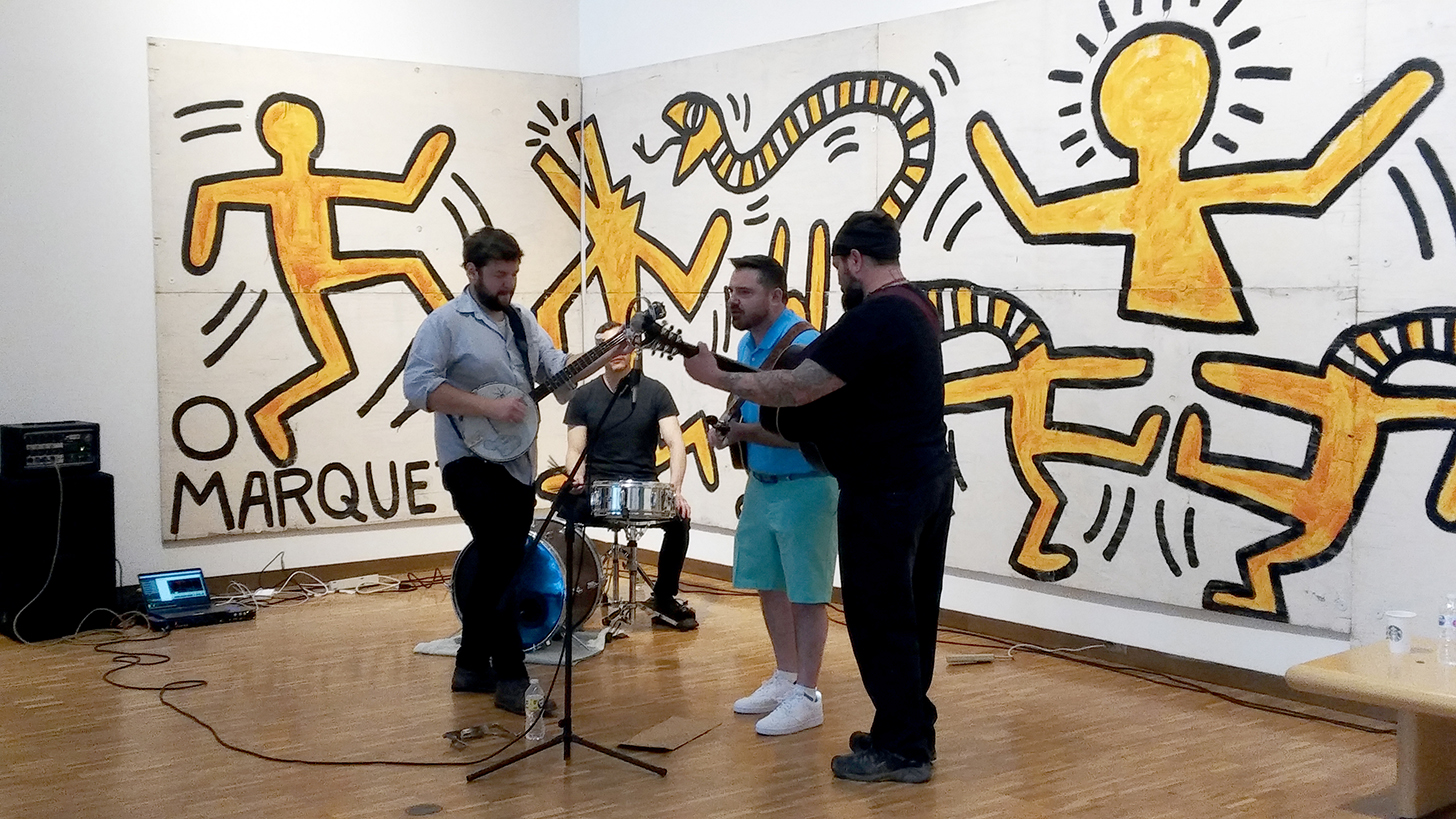
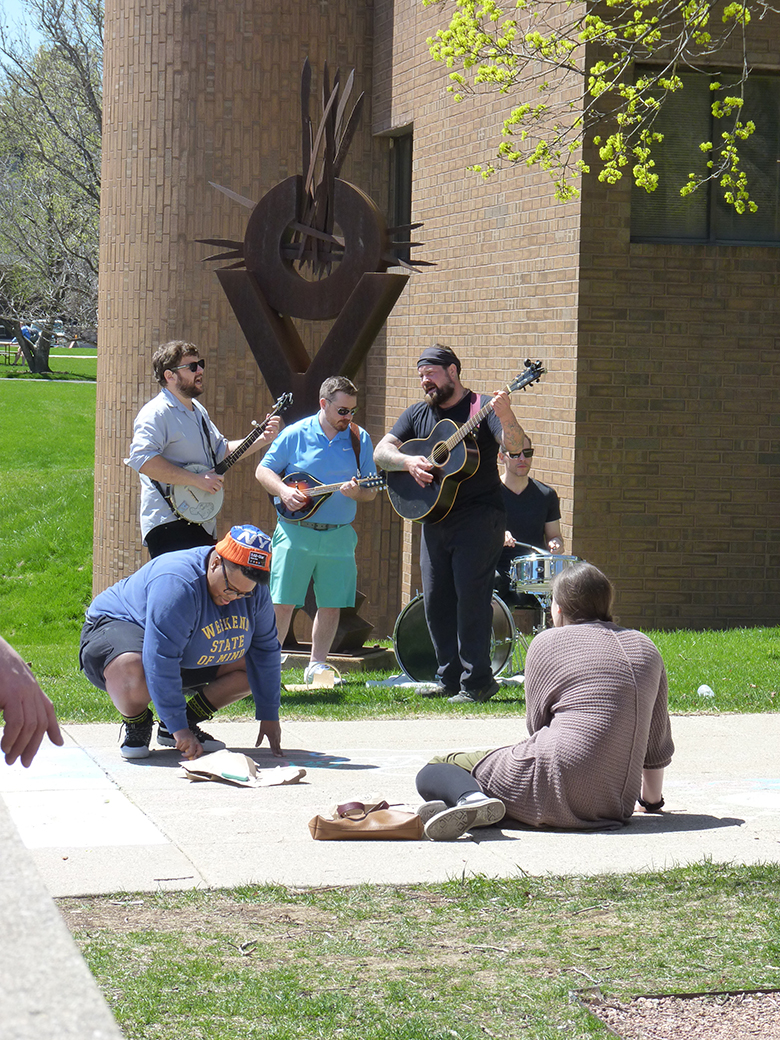
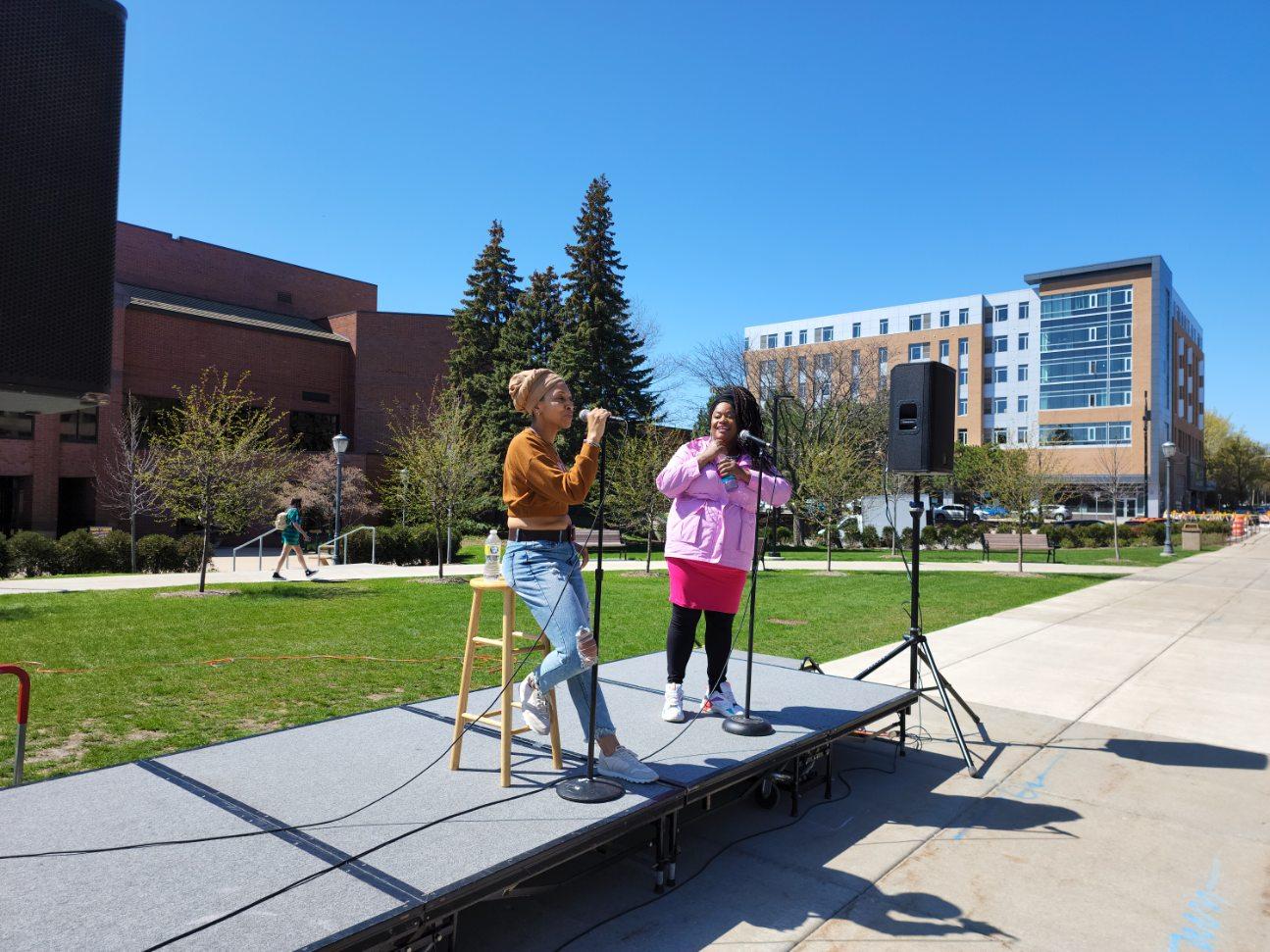
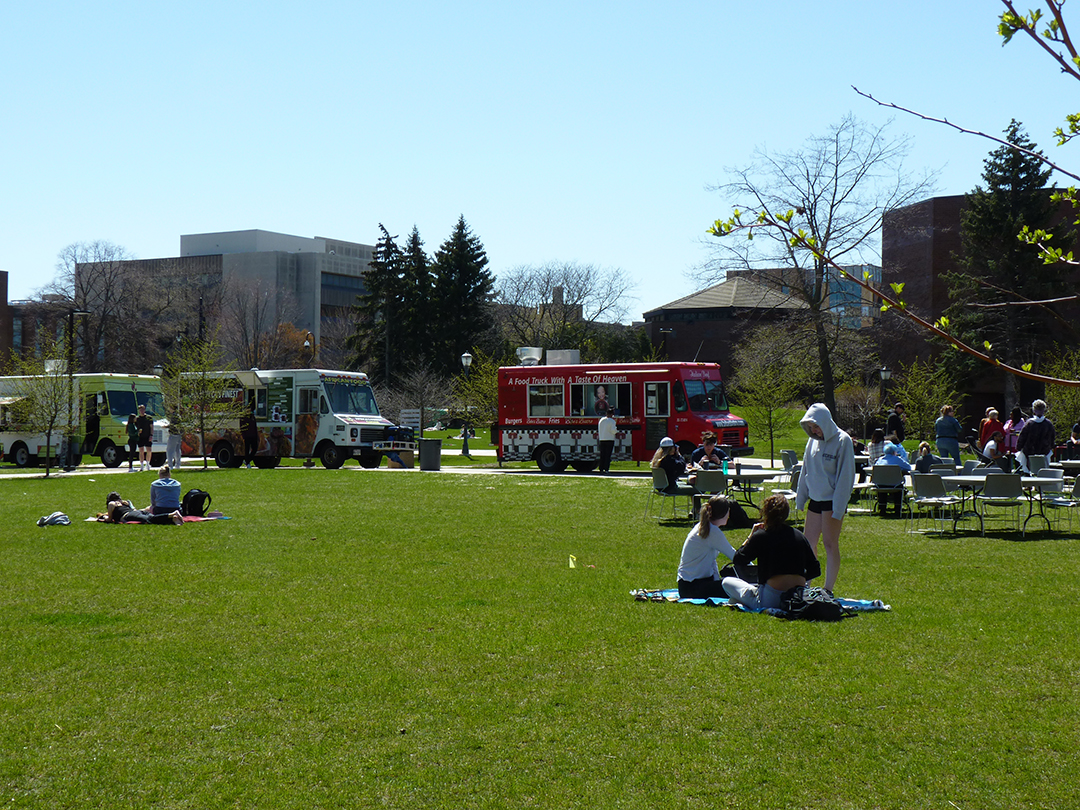
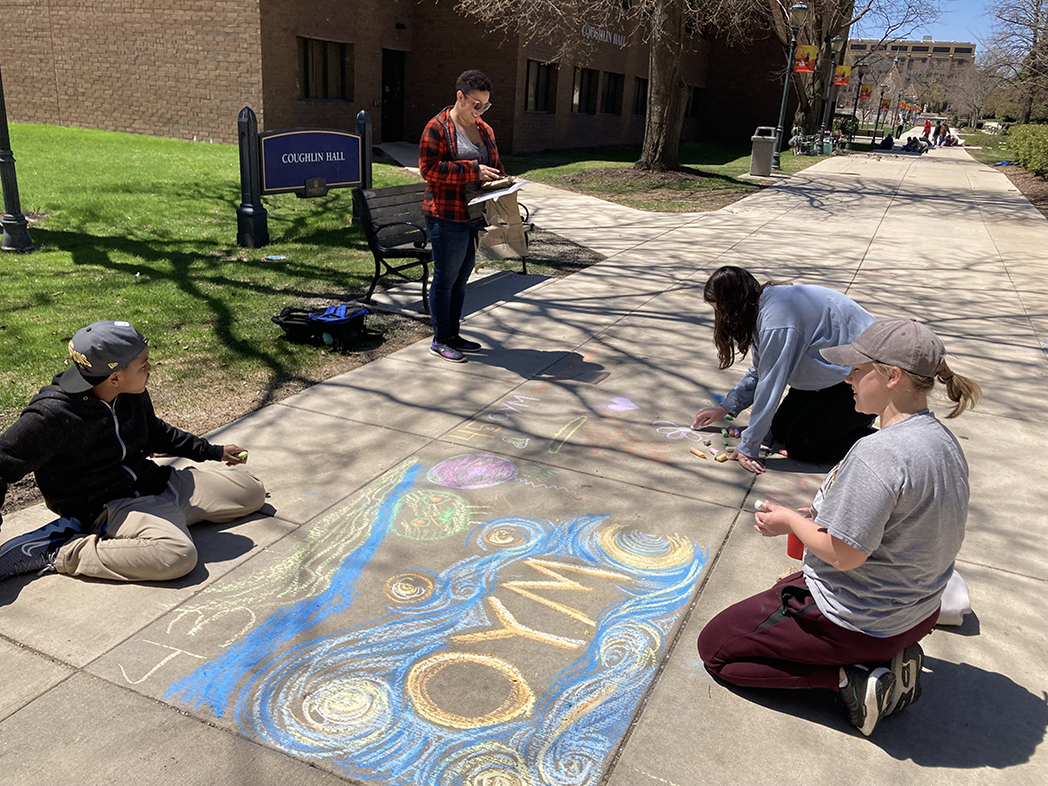
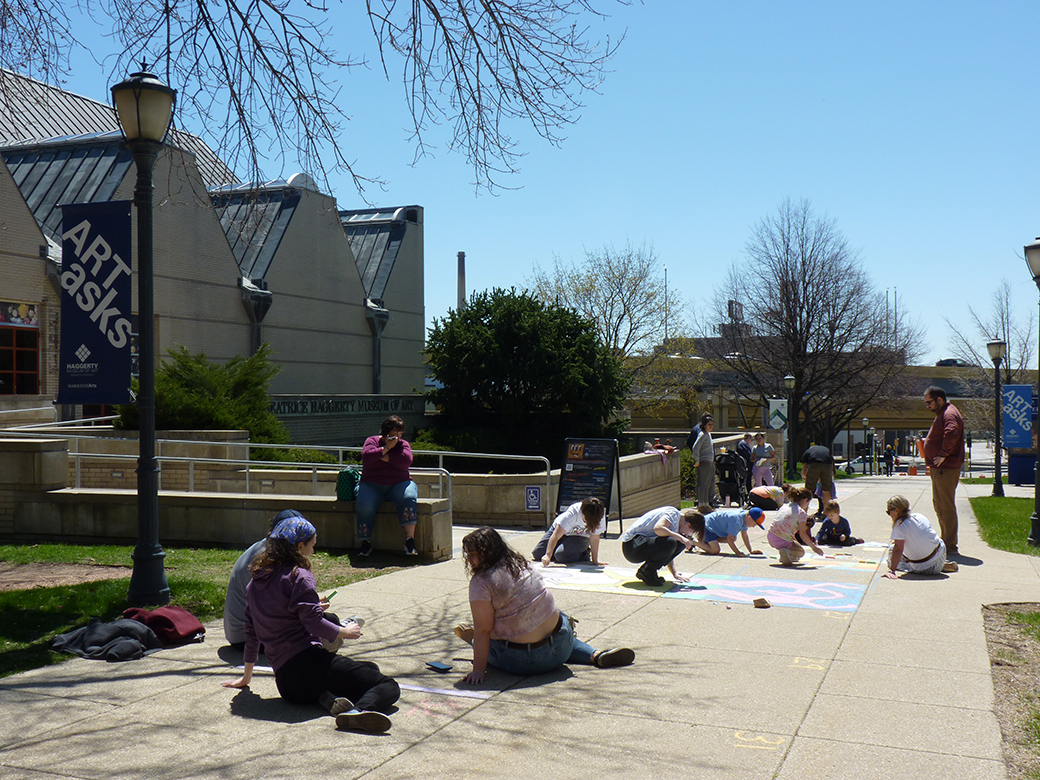
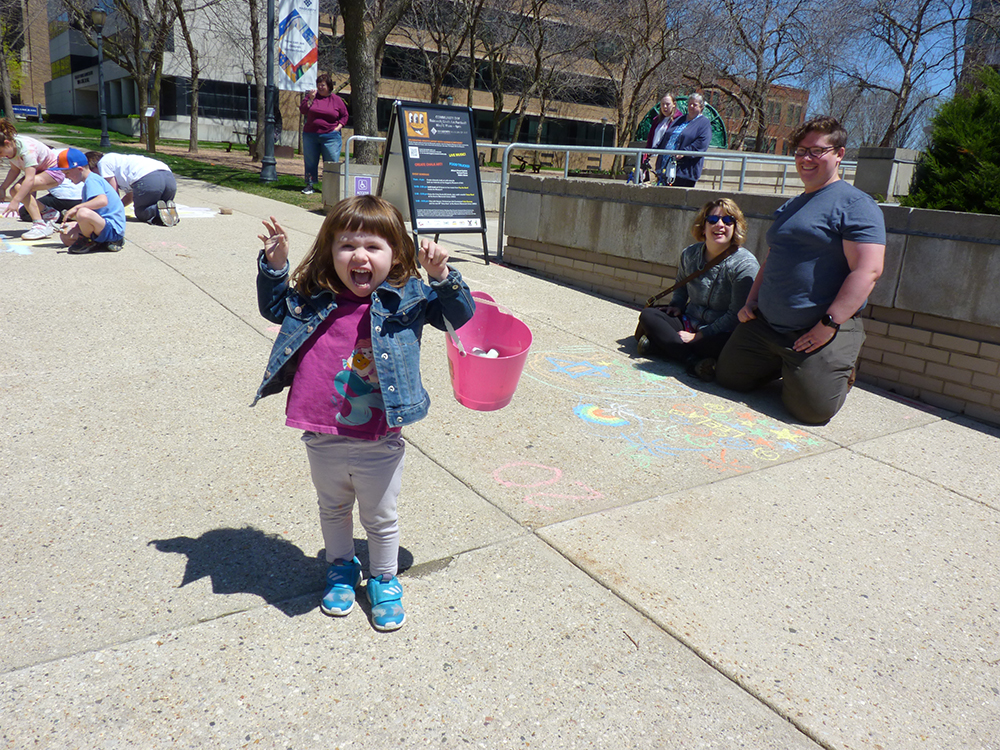
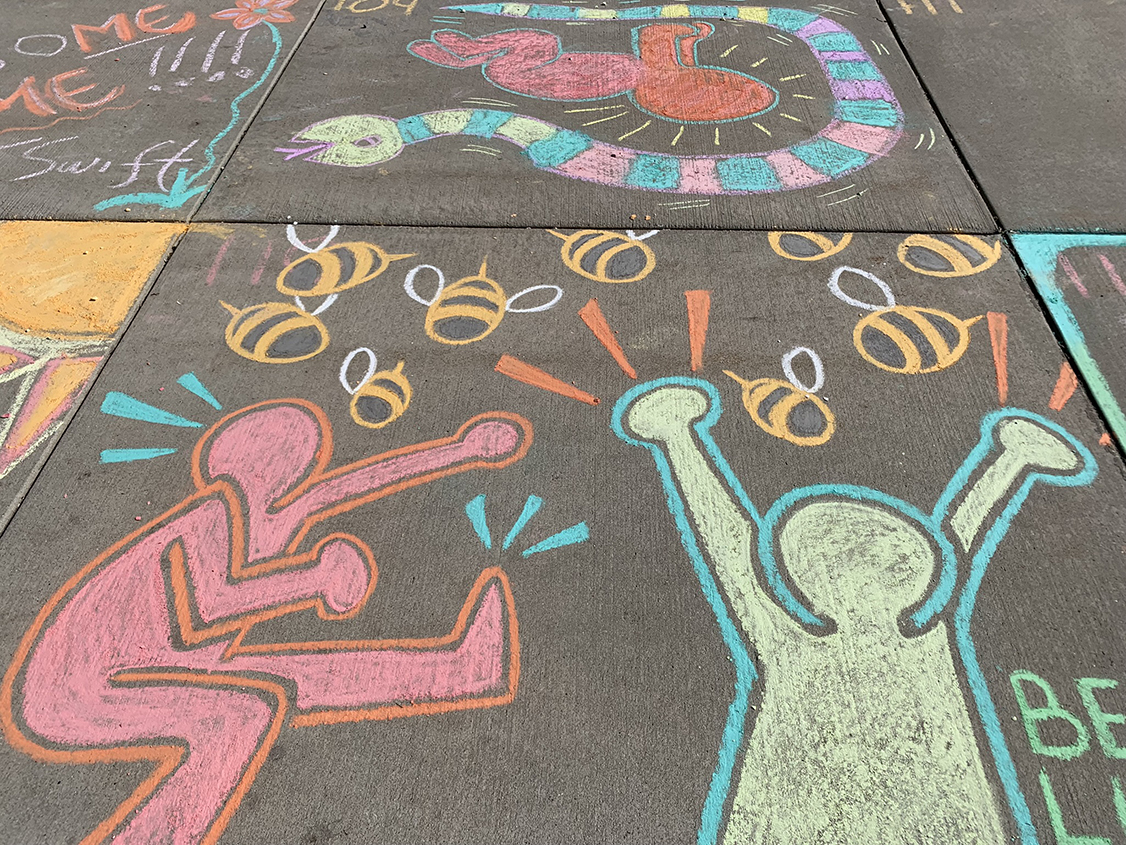
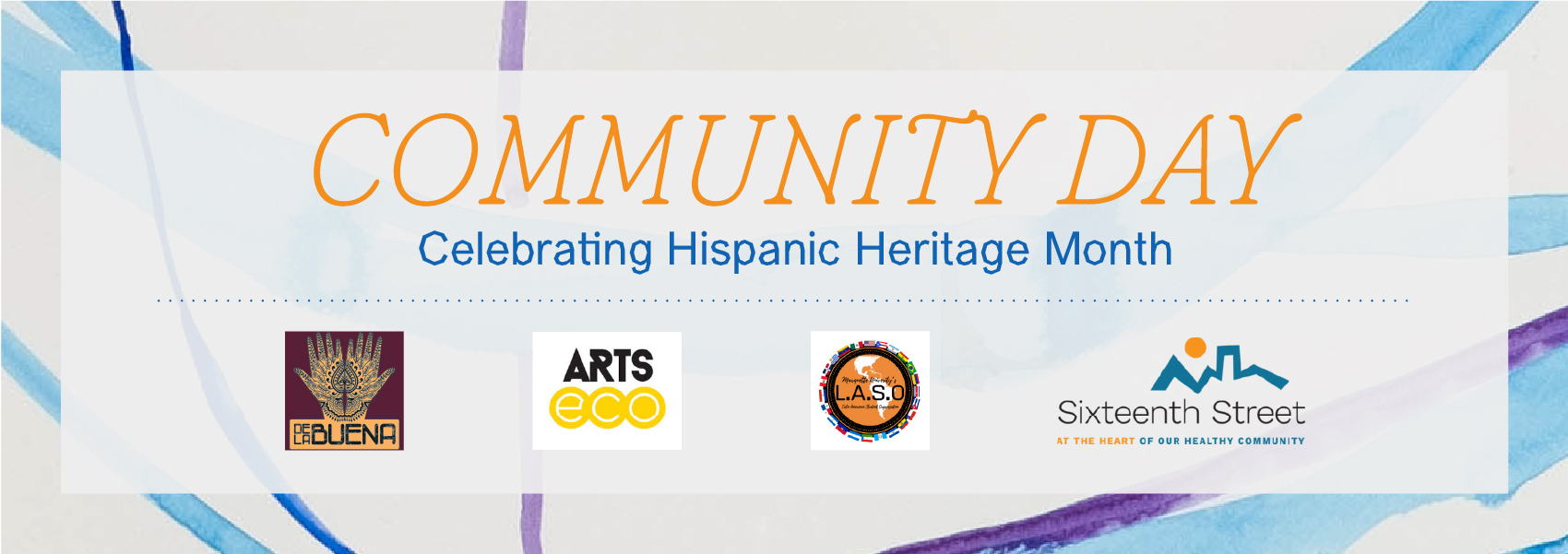
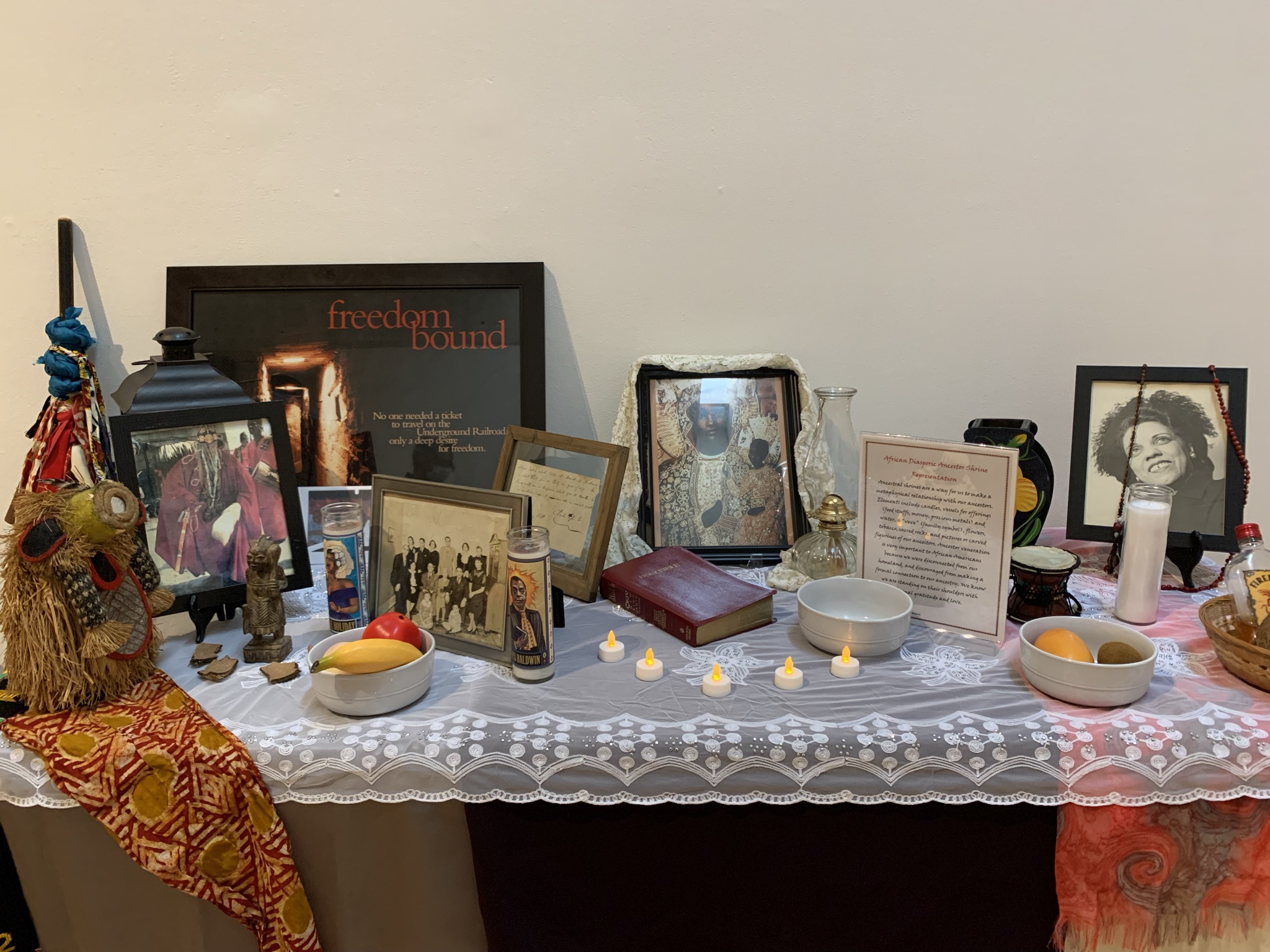
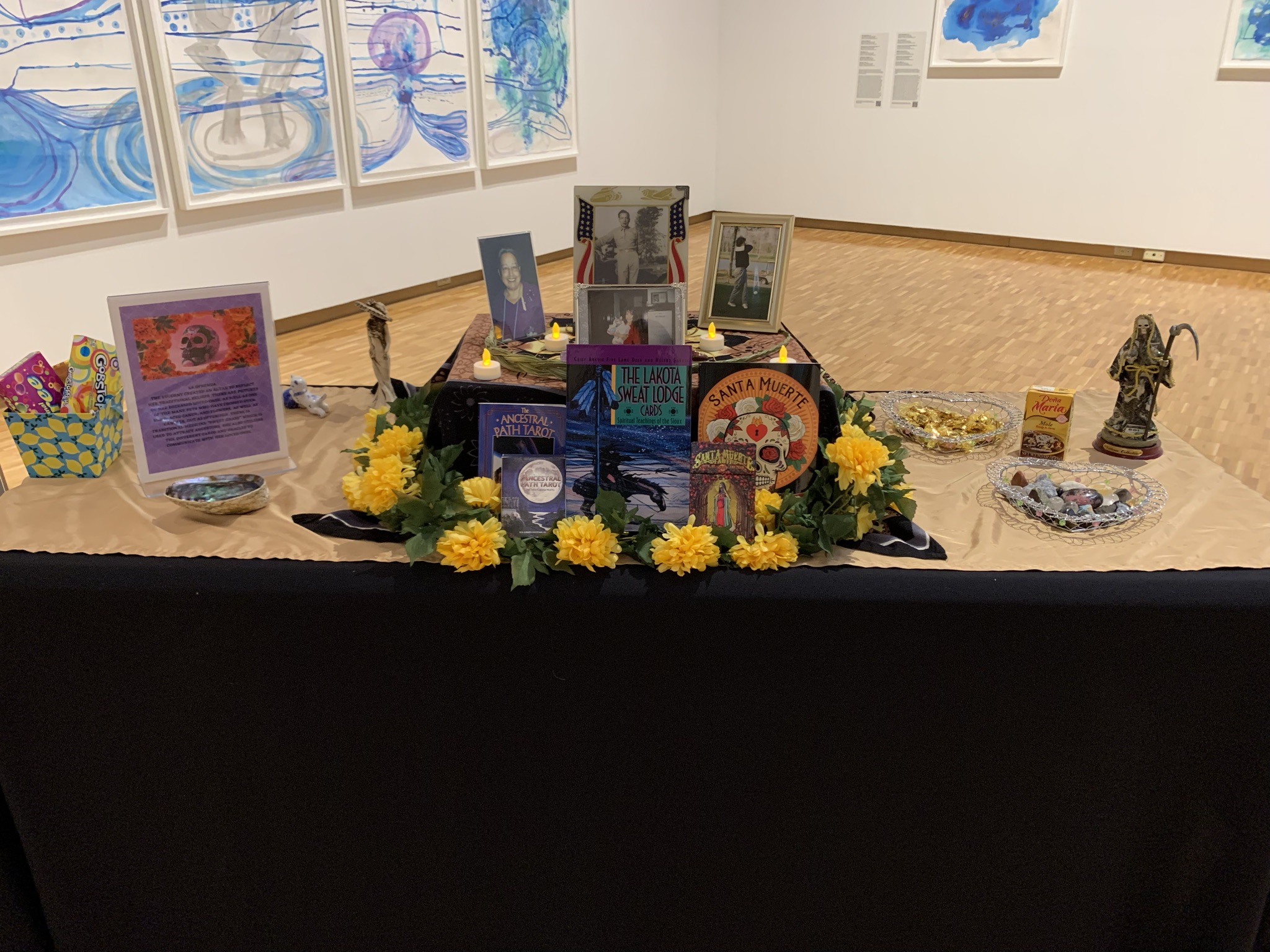
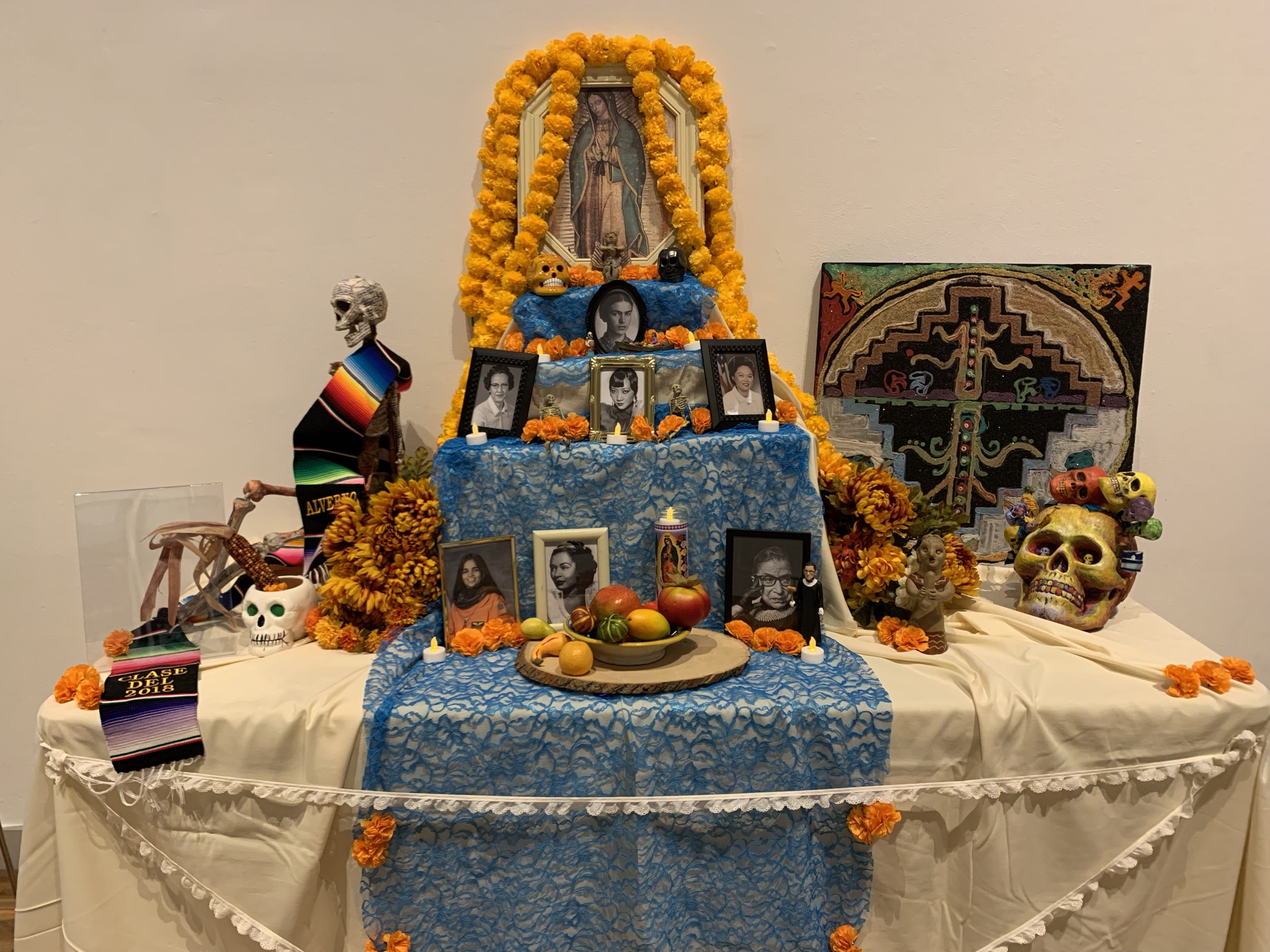
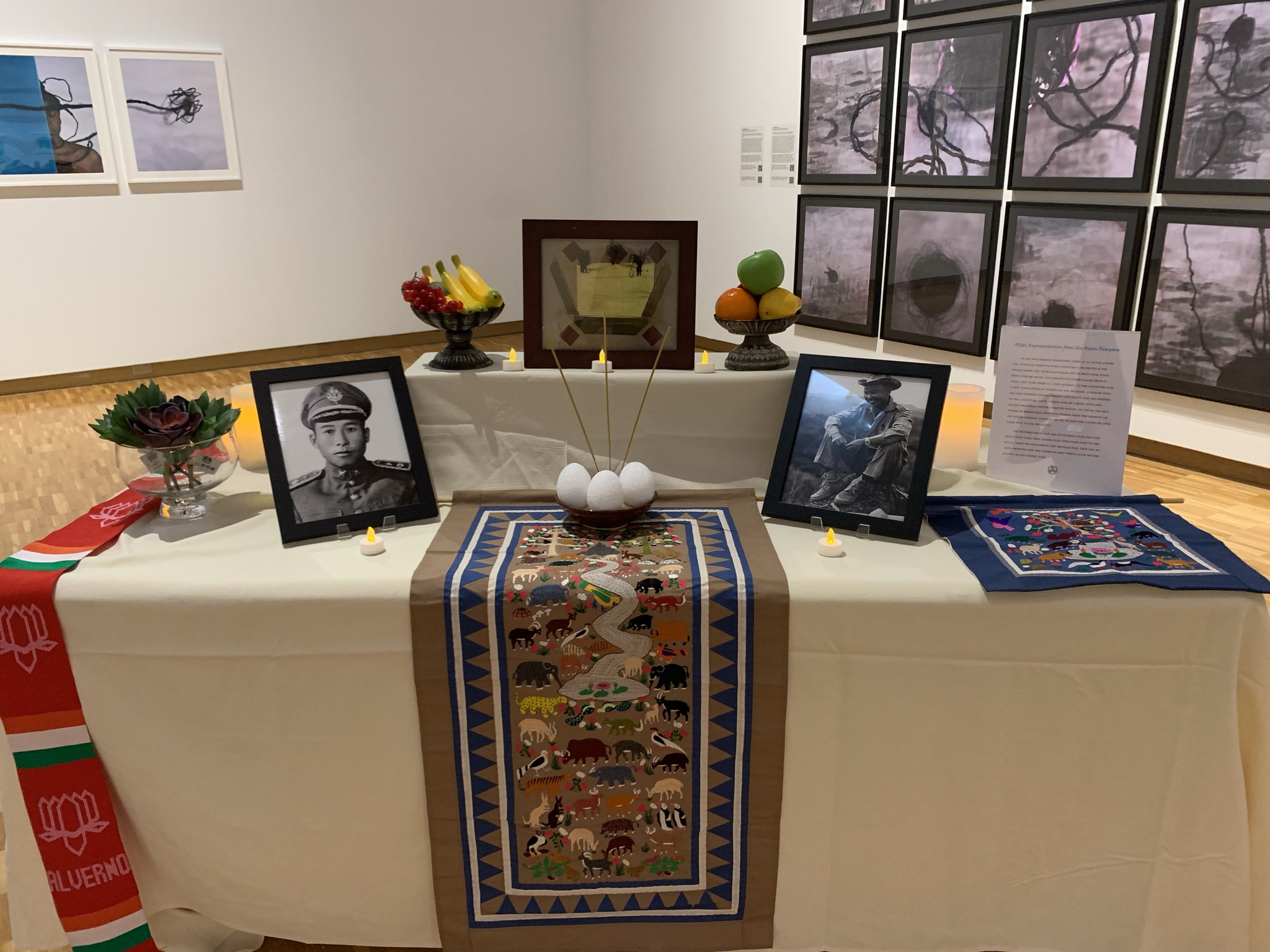
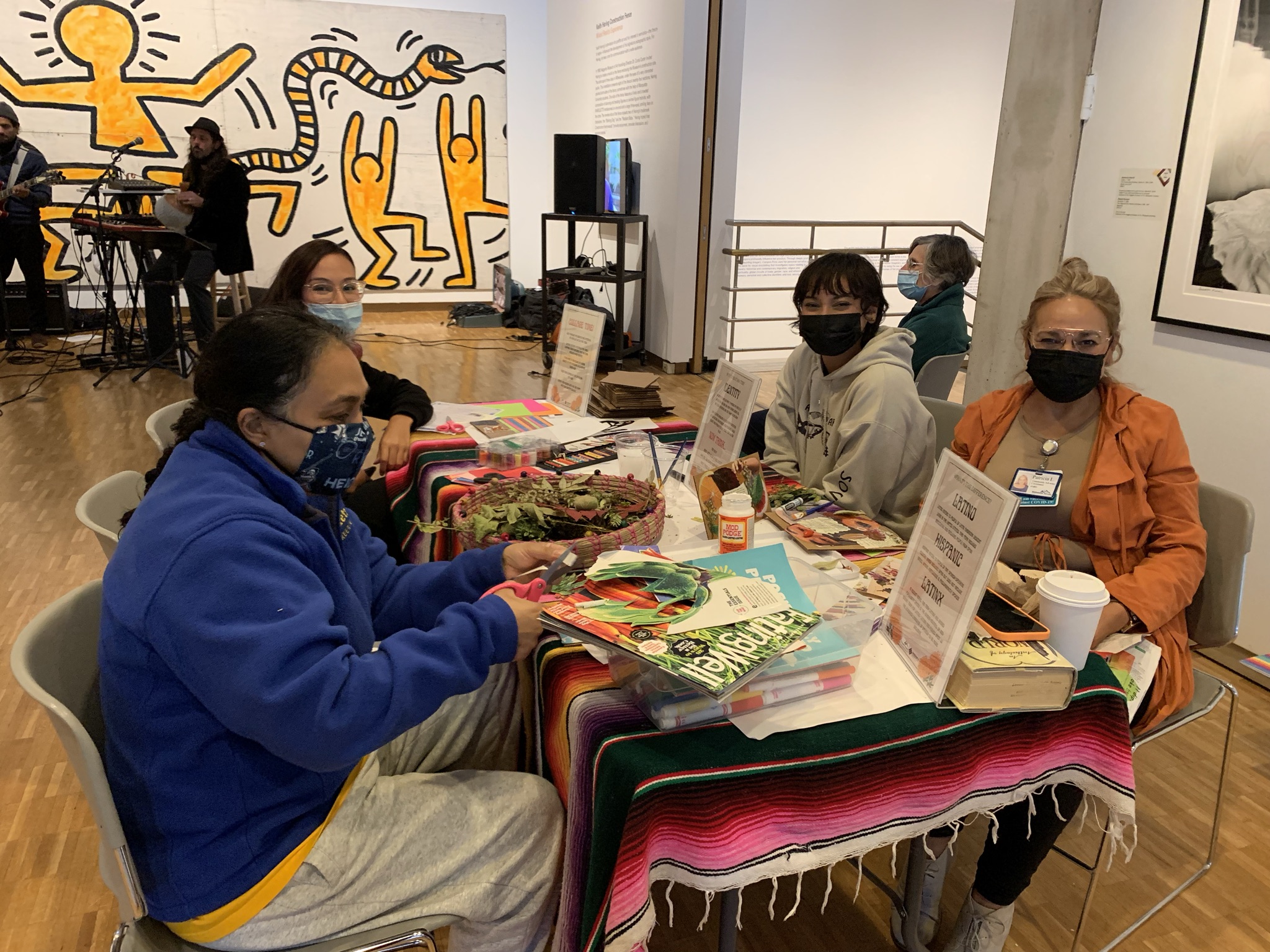
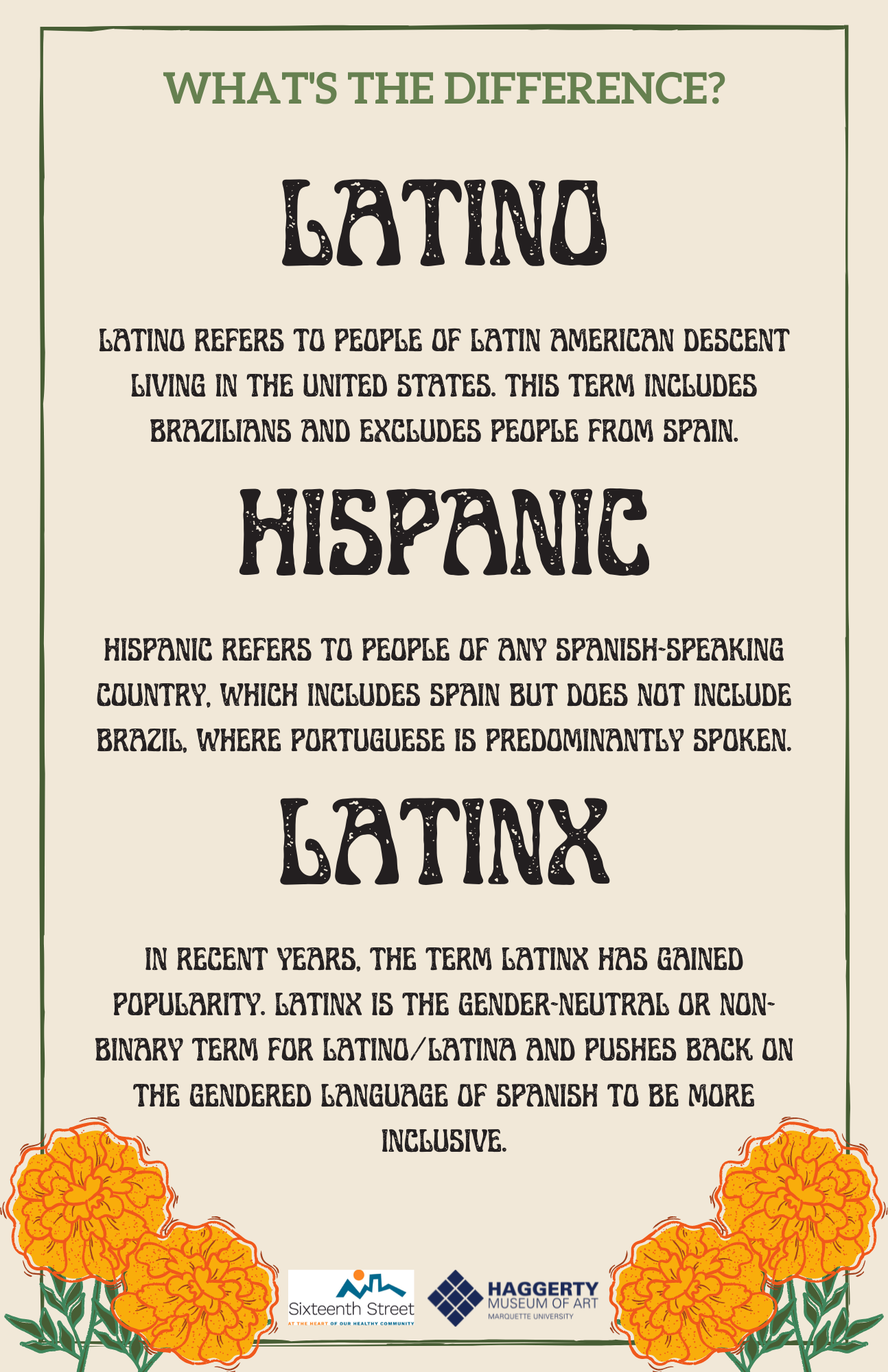
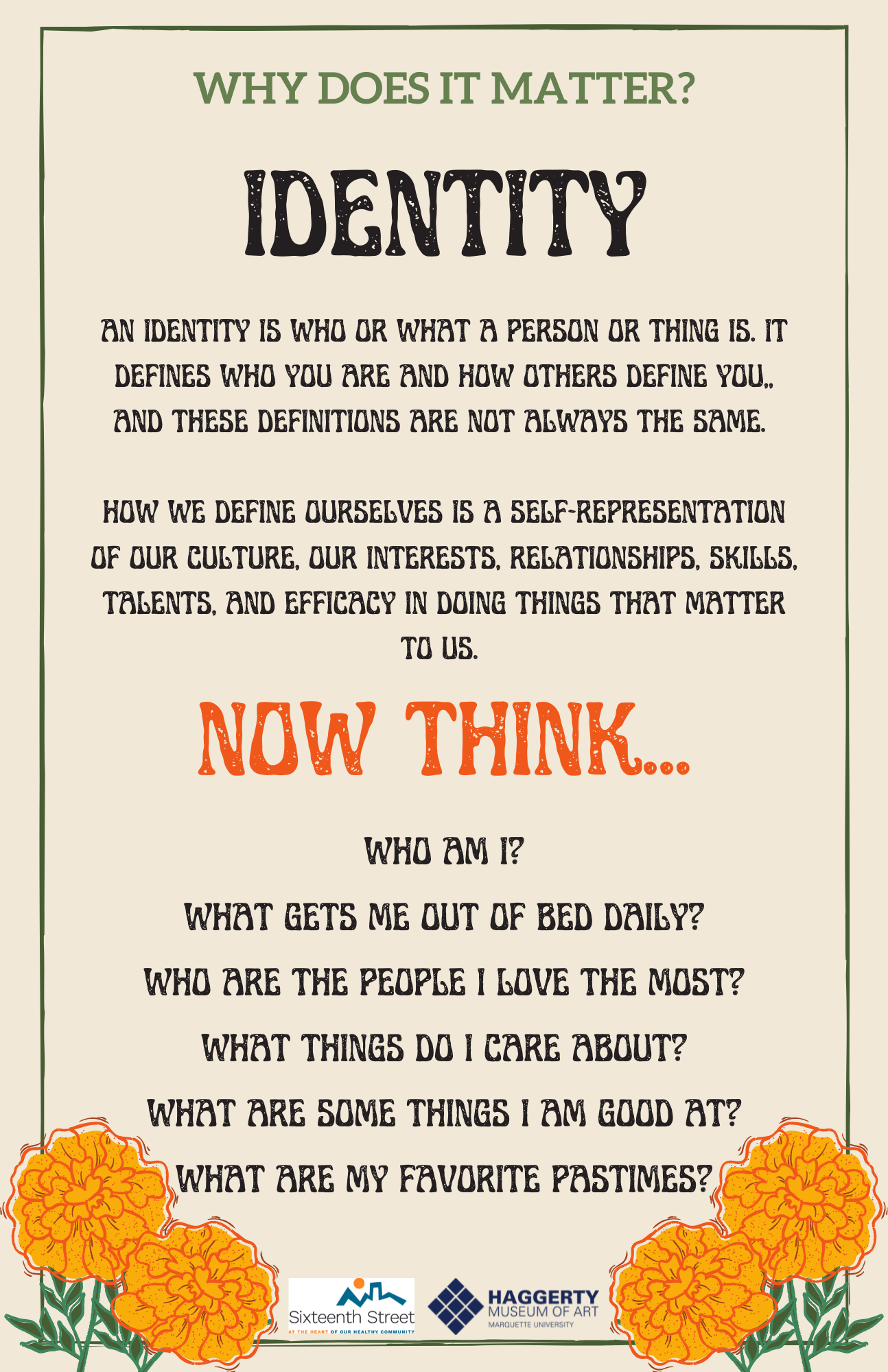
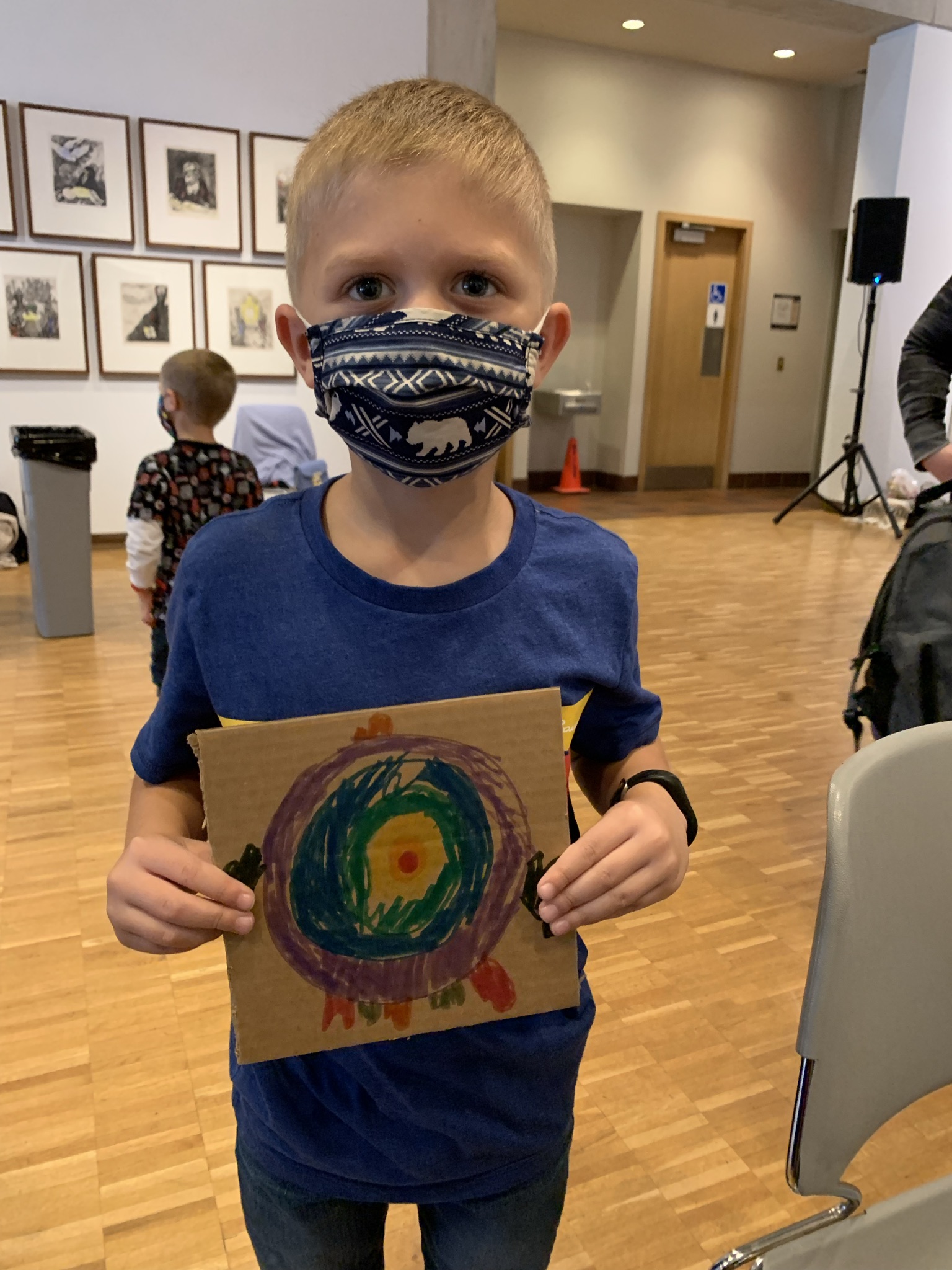
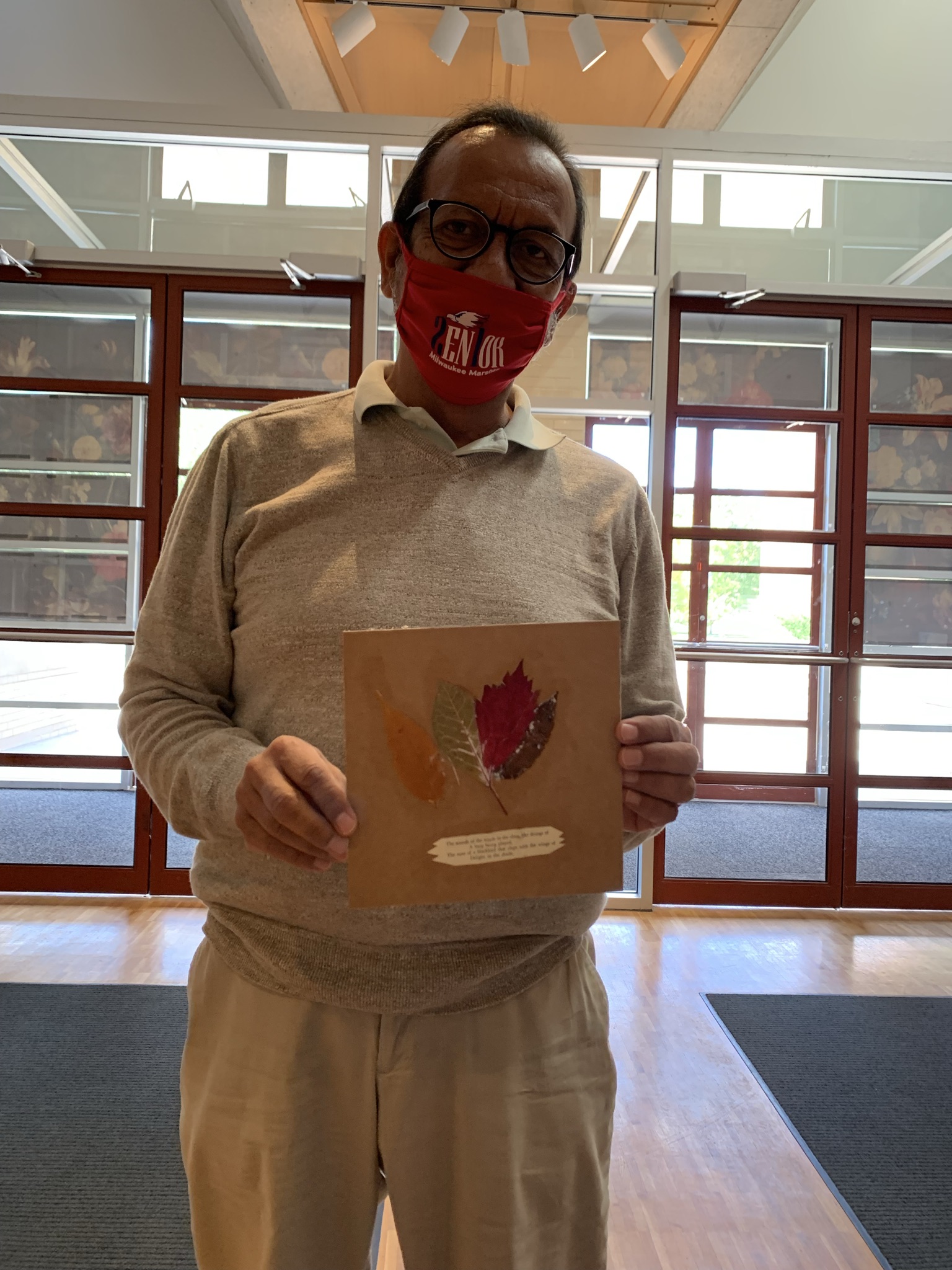
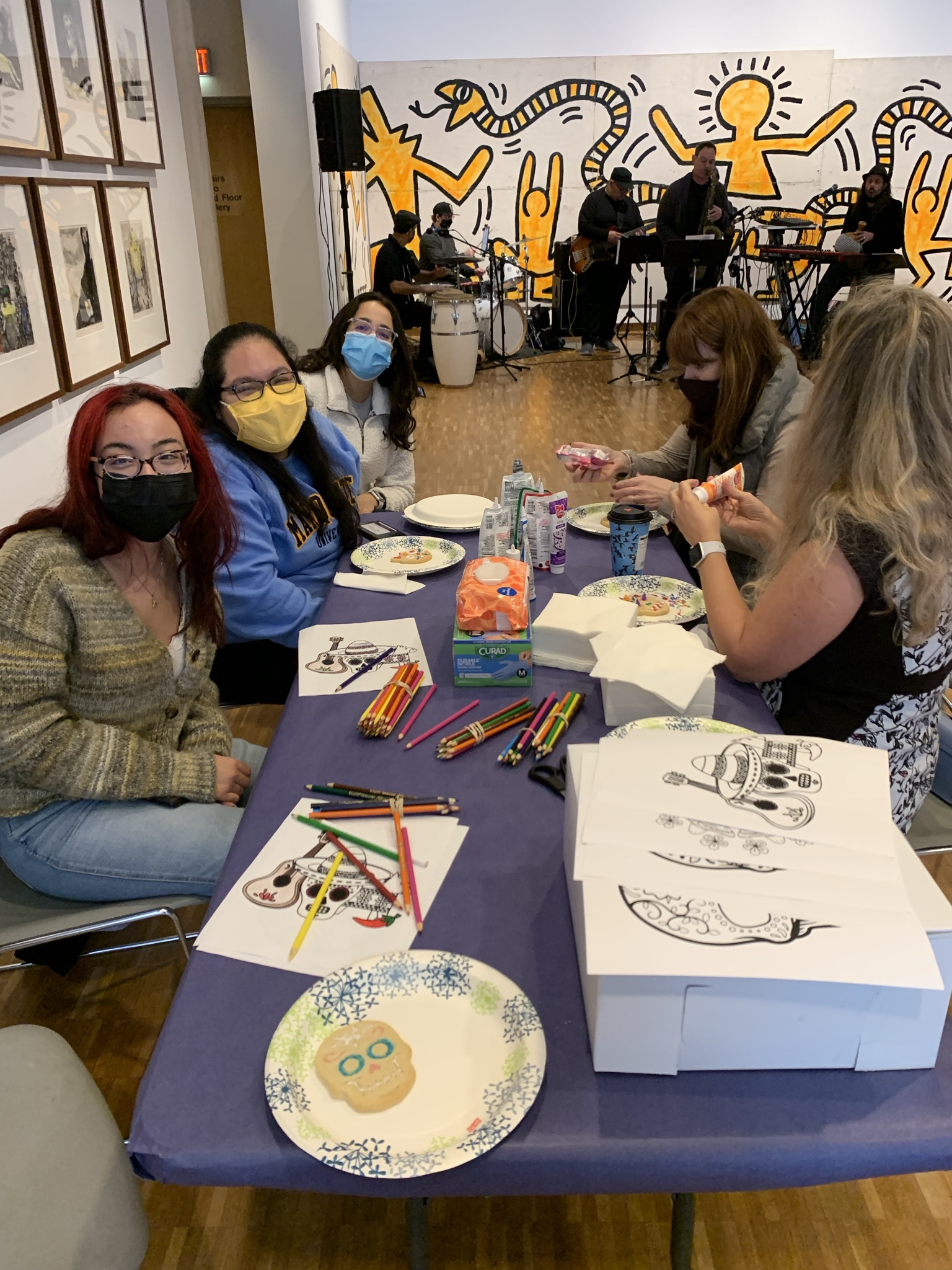
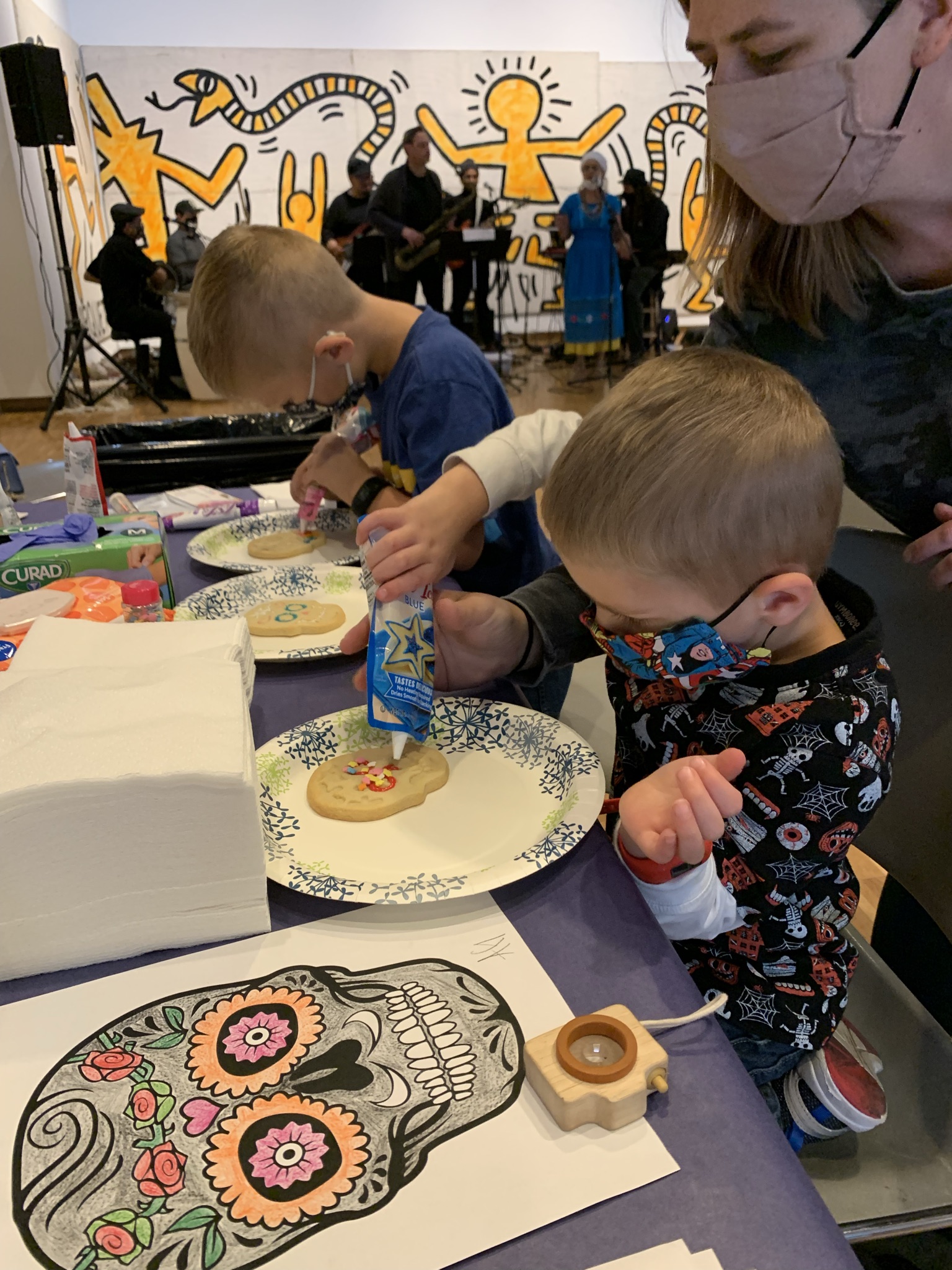
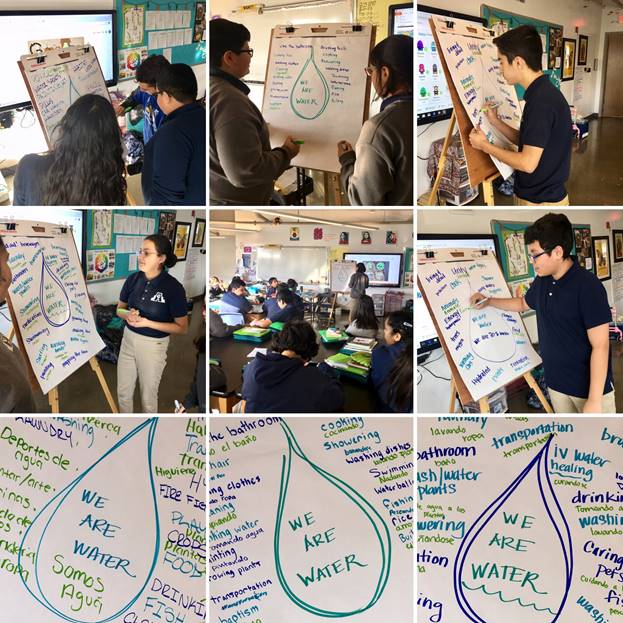
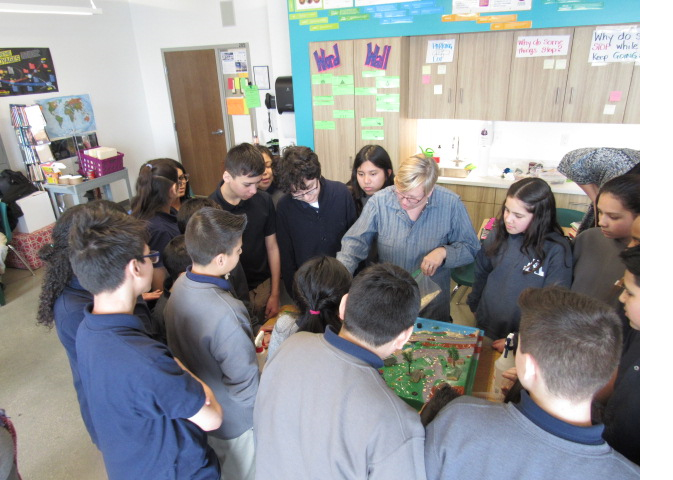 Following this walk, Melanie proposed a project to transform nine pillars located in front of the school—and beneath the 94-expressway, at the intersection of 6th
Following this walk, Melanie proposed a project to transform nine pillars located in front of the school—and beneath the 94-expressway, at the intersection of 6th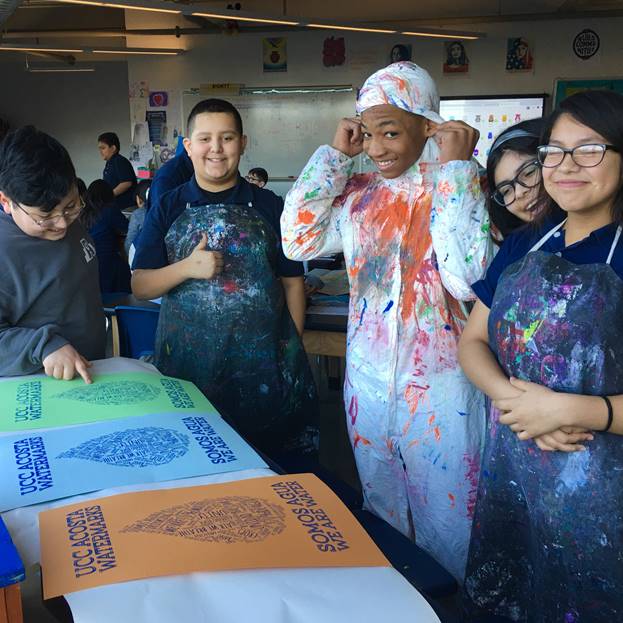 Melanie engaged students in all three of AMS’ grade levels through focused sessions that resulted in a co-created final mural design. In fact, Ariens’ initial proposal noted that elements of her plan would be subject to change based on the student input she received.
Melanie engaged students in all three of AMS’ grade levels through focused sessions that resulted in a co-created final mural design. In fact, Ariens’ initial proposal noted that elements of her plan would be subject to change based on the student input she received. 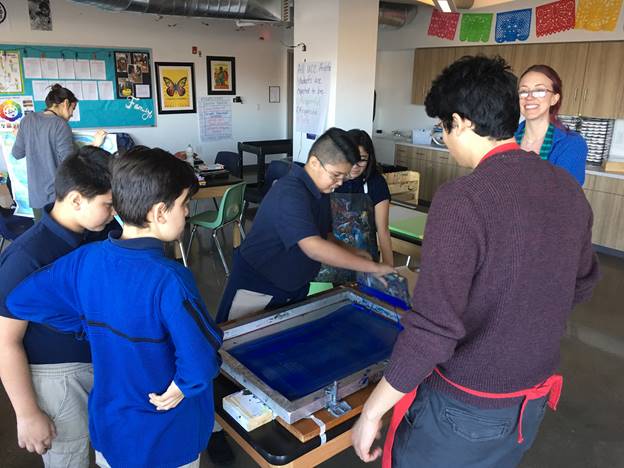 Melanie worked with AMS students from March through June 2019, in both science and art classrooms. Each activity was geared to inspire the students, as well lead towards the final mural design. The artist led the students in a mind-mapping activity exploring how water affects all aspects of their lives, incorporating both English and Spanish terms. During the next session students silkscreenedsilkscreened based on the mind-mapping project that were shaped like water droplets. Every student was able to take a print home, and prints were distributed to the UCC and the Haggerty Museum of Art. Next, students engaged with an interactive watershed model to learn what goes on the land, what goes in the lake, and how this affects both human and aquatic life. This was followed by making Papel PicadoPapeliPicado water critters. The last classroom activity was a photo shoot with students and assorted water-related props, including giant cut-outs of the Great Lakes. These activities were all aggregated into the final mural design. In fact, you just might recognize some of the AMS students pictured in the final murals!
Melanie worked with AMS students from March through June 2019, in both science and art classrooms. Each activity was geared to inspire the students, as well lead towards the final mural design. The artist led the students in a mind-mapping activity exploring how water affects all aspects of their lives, incorporating both English and Spanish terms. During the next session students silkscreenedsilkscreened based on the mind-mapping project that were shaped like water droplets. Every student was able to take a print home, and prints were distributed to the UCC and the Haggerty Museum of Art. Next, students engaged with an interactive watershed model to learn what goes on the land, what goes in the lake, and how this affects both human and aquatic life. This was followed by making Papel PicadoPapeliPicado water critters. The last classroom activity was a photo shoot with students and assorted water-related props, including giant cut-outs of the Great Lakes. These activities were all aggregated into the final mural design. In fact, you just might recognize some of the AMS students pictured in the final murals!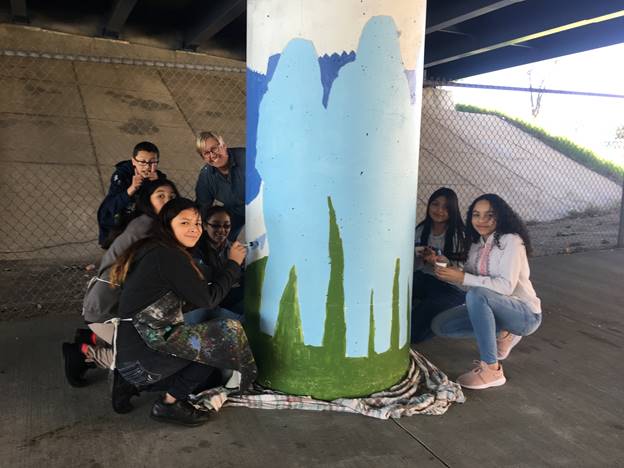
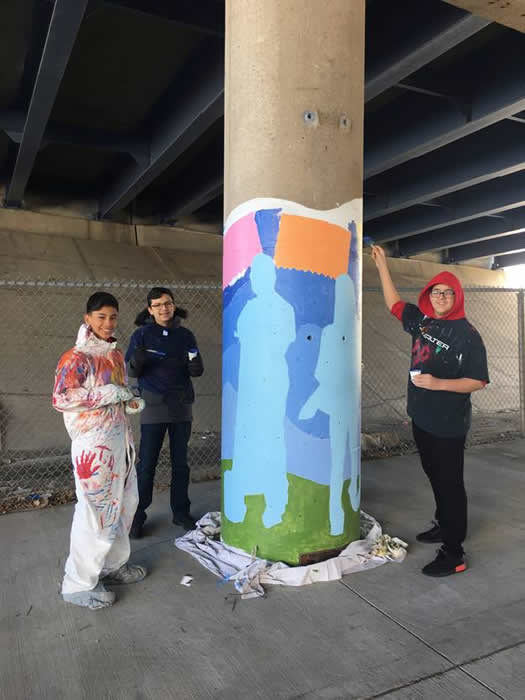
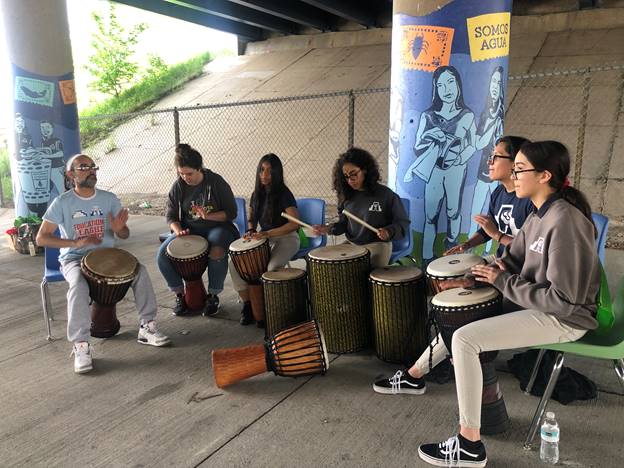
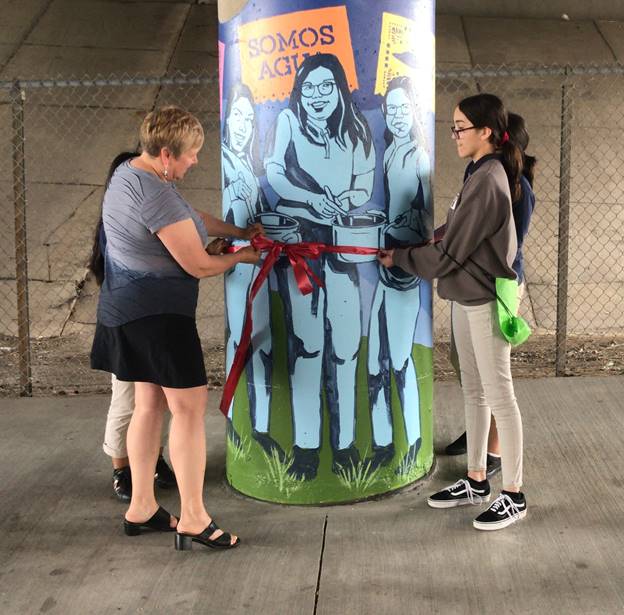
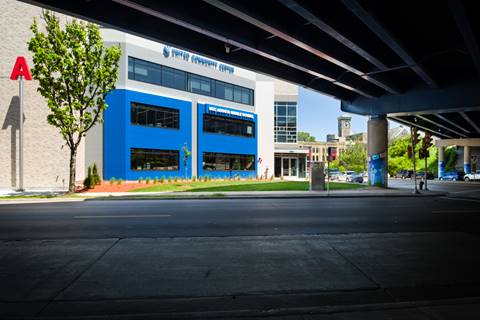
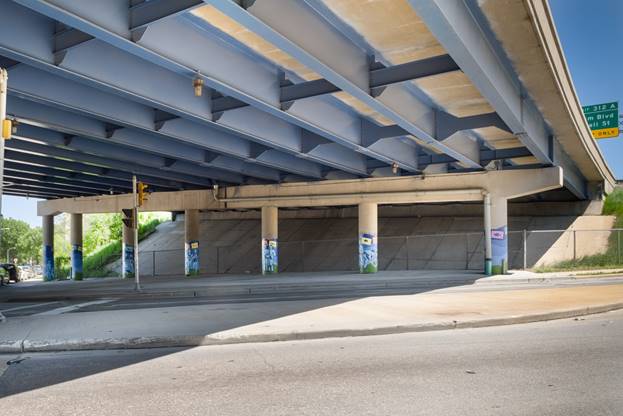















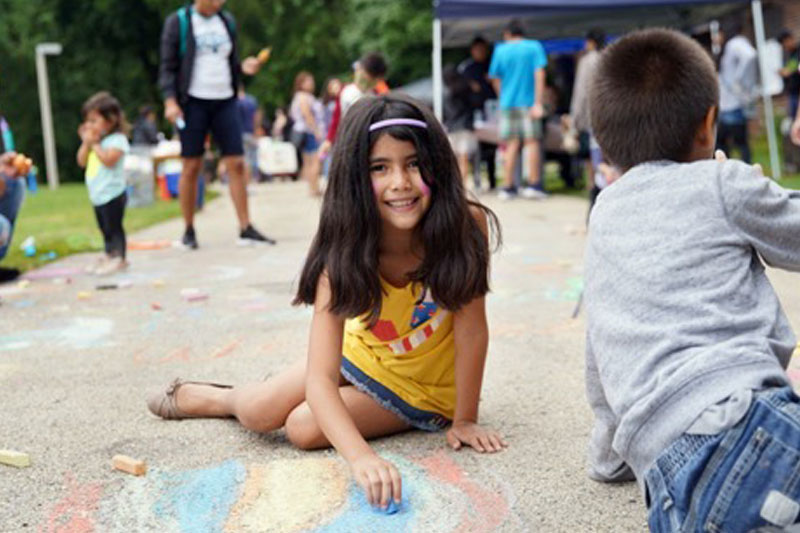
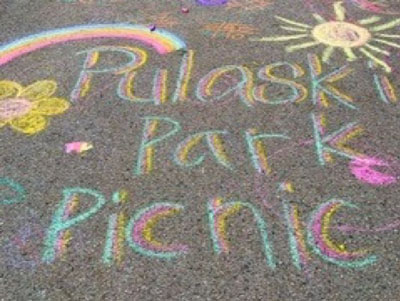 With our walk series at the KK River concluded, it was now time for residents to vote for their favorite artist proposal to be installed along the new river trail Sixteenth Street Community Health Center’s Environmental Health Department worked to transform. All three artists who led WaterMarks walks communicated with residents and spent lots of time and energy on proposals that reflected what community members expressed they wanted for the space.
With our walk series at the KK River concluded, it was now time for residents to vote for their favorite artist proposal to be installed along the new river trail Sixteenth Street Community Health Center’s Environmental Health Department worked to transform. All three artists who led WaterMarks walks communicated with residents and spent lots of time and energy on proposals that reflected what community members expressed they wanted for the space.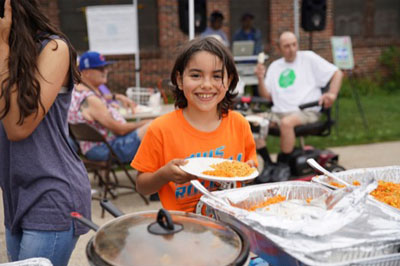 Everyone was excited for the picnic where the artists would reveal their final project proposals. When Saturday, July 21st rolled around, grey clouds were making their way across the sky. Rain was in the forecast, and at first this prospect dampened our spirits. Yet, this year’s art-themed Kinnickinnic River Neighbors in Action and Sixteenth Street Community Center Summer Picnic was destined to draw residents out to celebrate the beautiful natural environment and enjoy food, music, screen-printing, face painting, and last but not least, time for talking to the WaterMarks artists.
Everyone was excited for the picnic where the artists would reveal their final project proposals. When Saturday, July 21st rolled around, grey clouds were making their way across the sky. Rain was in the forecast, and at first this prospect dampened our spirits. Yet, this year’s art-themed Kinnickinnic River Neighbors in Action and Sixteenth Street Community Center Summer Picnic was destined to draw residents out to celebrate the beautiful natural environment and enjoy food, music, screen-printing, face painting, and last but not least, time for talking to the WaterMarks artists.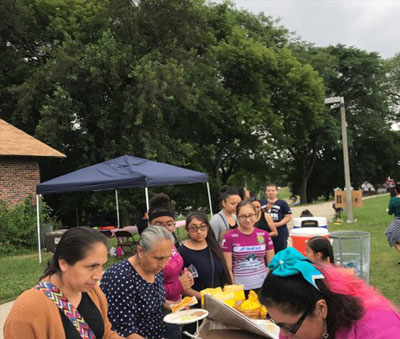 The event was a huge success, and it turned out to be a beautiful day with only a few small rain showers. Gabriella Riveros and Riveros Meuninck GanMeuninckyed speaking with people about the ideas for their projects and showing off the beautiful illustrations and proposal materials they brought along. 59 people cast their votes for an artist’s installation, including Alderman José Perez who said all three projects were so wonderful that we needed to find funding for all three! The picnic was a joyful occasion where a community came together to celebrate, enjoy the outdoors, and give voice to their vision for Pulaski Park.
The event was a huge success, and it turned out to be a beautiful day with only a few small rain showers. Gabriella Riveros and Riveros Meuninck GanMeuninckyed speaking with people about the ideas for their projects and showing off the beautiful illustrations and proposal materials they brought along. 59 people cast their votes for an artist’s installation, including Alderman José Perez who said all three projects were so wonderful that we needed to find funding for all three! The picnic was a joyful occasion where a community came together to celebrate, enjoy the outdoors, and give voice to their vision for Pulaski Park.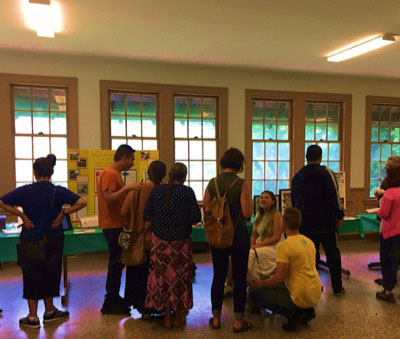
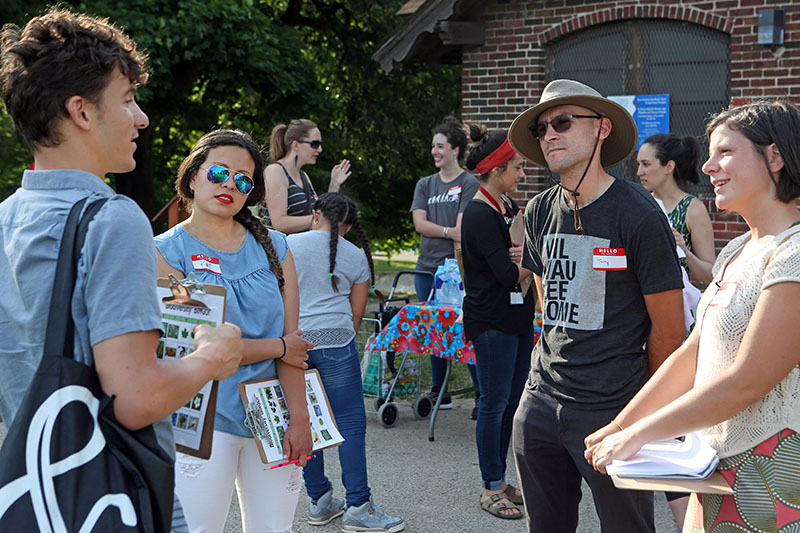
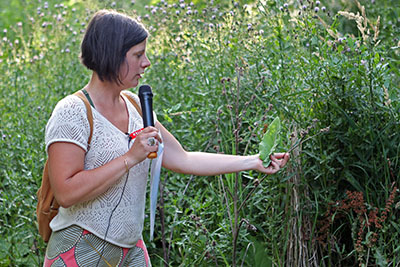 Joanna and Jessica explained the impact of the concrete riverbed on the wellness of the community and landscape, discussing the river’s current state and reputation since the 1960s as a “lost river.” Joanna discussed the goals of the revitalization project and explained how replanting native species in the restoration area would help to naturally control flooding and reduce erosion due to the stronger and larger root structures native plants can achieve. They shared images of the river before its channelization, and the group discussed the river’s relationship with the community in the past as a vibrant hub of recreation and wildlife.
Joanna and Jessica explained the impact of the concrete riverbed on the wellness of the community and landscape, discussing the river’s current state and reputation since the 1960s as a “lost river.” Joanna discussed the goals of the revitalization project and explained how replanting native species in the restoration area would help to naturally control flooding and reduce erosion due to the stronger and larger root structures native plants can achieve. They shared images of the river before its channelization, and the group discussed the river’s relationship with the community in the past as a vibrant hub of recreation and wildlife.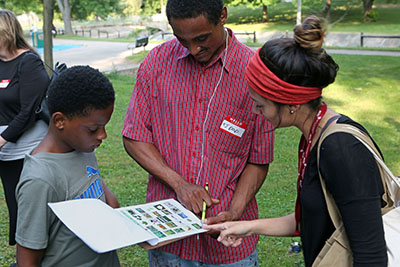 A fun feature of the walk was Biodiversity Bingo, and along the walk, participants asked questions about the trees and plants in the park -- their ages, types, health, and if they would be preserved. The kids especially enjoyed looking for plants and animal species as we walked, and three Bingo winners took home a packet of native plant seeds.
A fun feature of the walk was Biodiversity Bingo, and along the walk, participants asked questions about the trees and plants in the park -- their ages, types, health, and if they would be preserved. The kids especially enjoyed looking for plants and animal species as we walked, and three Bingo winners took home a packet of native plant seeds.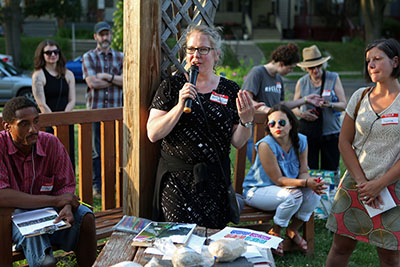 The final walk destination was “Victory Garden” where Jessica set up a demonstration with UWM’s Peck School of the Arts students, who cooked paper fibers from invasive plants removed from the hillside days prior to the event. Jessica’s research at UWM in sustainable practices involves transforming discarded invasive plant specimens as well as growing and harvesting native plants for papermaking papermakings.
The final walk destination was “Victory Garden” where Jessica set up a demonstration with UWM’s Peck School of the Arts students, who cooked paper fibers from invasive plants removed from the hillside days prior to the event. Jessica’s research at UWM in sustainable practices involves transforming discarded invasive plant specimens as well as growing and harvesting native plants for papermaking papermakings.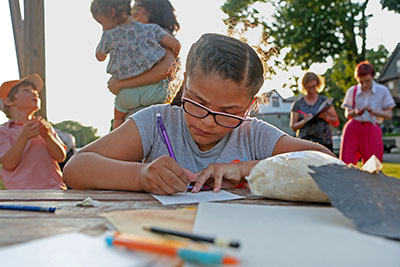 At the conclusion of the walk in the Victory Garden, residents expressed their hopes for the river restoration, and their faith in the project due to their previous relationships with project partners Stephanie of SSCHC and Travis of the KK Neighbors in Action Association. We are eager to see this project progress!
At the conclusion of the walk in the Victory Garden, residents expressed their hopes for the river restoration, and their faith in the project due to their previous relationships with project partners Stephanie of SSCHC and Travis of the KK Neighbors in Action Association. We are eager to see this project progress!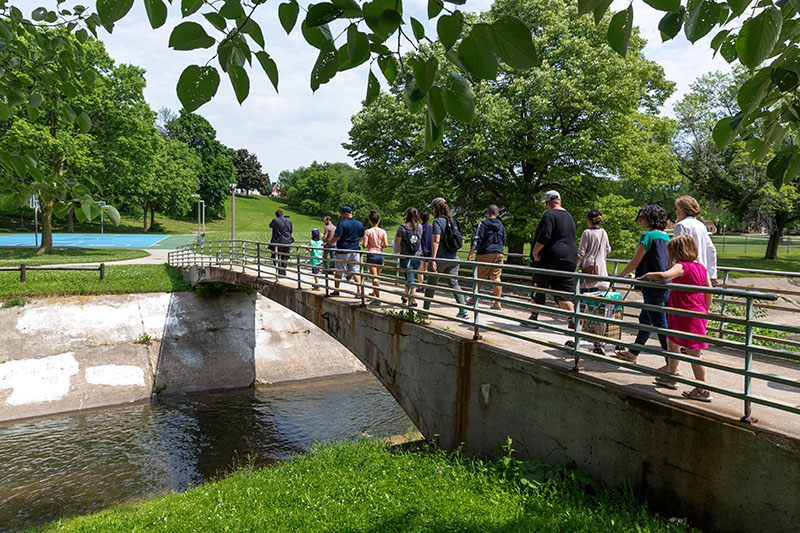
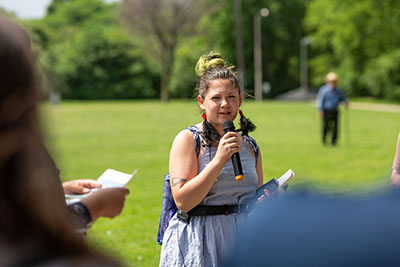 Patrick talked about the Kinnickinnic River in regards to engineering and development – he spoke of the previous attempts to manage flooding and control the river through design. He also provided a deeper look into the new proposal for the river restoration. Gabriela spoke about water deities from around the world, as examples of how people throughout history have understood the nature of the river, its importance, and the ways it served them. Gabriela began the walk by acknowledging that we are on indigenous land and telling the Ojibwe creation myth of Turtle Island, because it was the Ojibwe that named the KK River.
Patrick talked about the Kinnickinnic River in regards to engineering and development – he spoke of the previous attempts to manage flooding and control the river through design. He also provided a deeper look into the new proposal for the river restoration. Gabriela spoke about water deities from around the world, as examples of how people throughout history have understood the nature of the river, its importance, and the ways it served them. Gabriela began the walk by acknowledging that we are on indigenous land and telling the Ojibwe creation myth of Turtle Island, because it was the Ojibwe that named the KK River.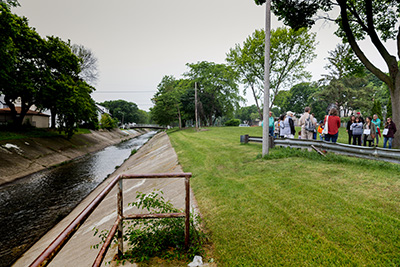 Patrick and Gabriela led the group down to a river bank that intersected the train tracks. Here, Patrick pointed out some invasive species, such as wild parsnip and talked about how the river restoration plan will include a sizeable area where native species will be replanted and used as a buffer zone to decrease erosion and flooding hazards. He also spoke of 100-year flood events, which describe an amount of rainfall that occurs, on average, once every 100 years. Patrick pointed out the railroad bridge, which stood about 10 feet above the water level, that was once flooded during one of these rare events.
Patrick and Gabriela led the group down to a river bank that intersected the train tracks. Here, Patrick pointed out some invasive species, such as wild parsnip and talked about how the river restoration plan will include a sizeable area where native species will be replanted and used as a buffer zone to decrease erosion and flooding hazards. He also spoke of 100-year flood events, which describe an amount of rainfall that occurs, on average, once every 100 years. Patrick pointed out the railroad bridge, which stood about 10 feet above the water level, that was once flooded during one of these rare events. 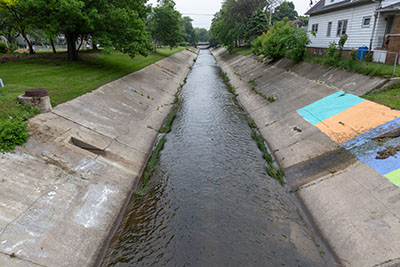 Here, Gabriela paused and asked us to engage in a brief, silent mediation. She asked the group to pay close attention to the sounds of the river, and we all were transported from a dense urban city to a natural oasis for those brief moments in time. We ended the walk by crossing 16th street, where we stood in the area which was cleared of homes to make room for the restoration.
Here, Gabriela paused and asked us to engage in a brief, silent mediation. She asked the group to pay close attention to the sounds of the river, and we all were transported from a dense urban city to a natural oasis for those brief moments in time. We ended the walk by crossing 16th street, where we stood in the area which was cleared of homes to make room for the restoration.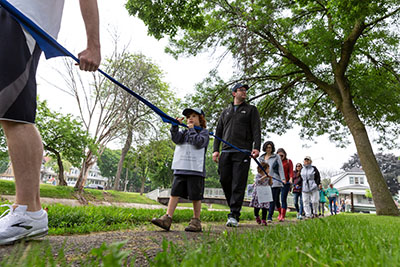 The walk was a fascinating way to reflect on the different perspectives Patrick and Gabriela brought regarding the ways in which people from different cultures and time periods understand and work with rivers. Water can both take life and give life, and when we try to control the river, it reminds us of its power and finds ways to push back.
The walk was a fascinating way to reflect on the different perspectives Patrick and Gabriela brought regarding the ways in which people from different cultures and time periods understand and work with rivers. Water can both take life and give life, and when we try to control the river, it reminds us of its power and finds ways to push back.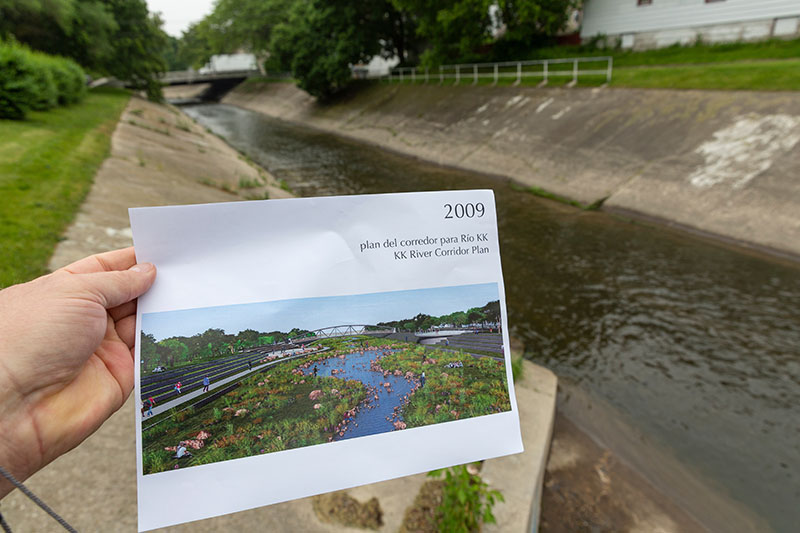
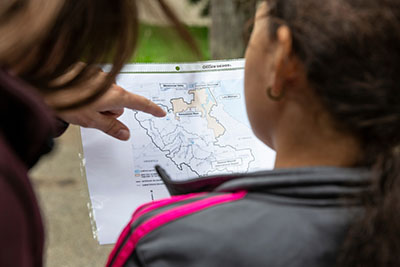
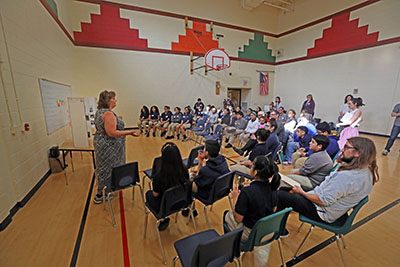 The WaterMarks walk series with United Community Center’s Acosta Middle School culminated in the May 8th Workshop, where we gathered at UCC AMS to celebrate what students, teachers, and community members learned through exploring water in their neighborhood. Students also voted on the letter to sit atop the first WaterMarks marker, which will be installed outside of the new UCC AMS building in August 2018.
The WaterMarks walk series with United Community Center’s Acosta Middle School culminated in the May 8th Workshop, where we gathered at UCC AMS to celebrate what students, teachers, and community members learned through exploring water in their neighborhood. Students also voted on the letter to sit atop the first WaterMarks marker, which will be installed outside of the new UCC AMS building in August 2018.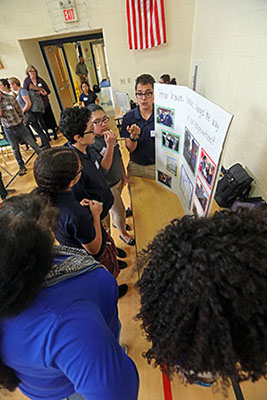 Three teams of students served as "captains," sharing their new knowledge with peers in a poster-board session and were accompanied by the walk facilitators. We then broke out into three groups, led by the artist and scientist co-facilitators. Here, students were invited to share ideas about improving water management in their neighborhood, based on what they had learned during the walks. Students shared creative and innovative ideas and discussed how painting rain barrels, organizing their own neighborhood cleanup walk, and marking storm grates with aquatic animals could help call attention to the connection between water and the larger ecosystem. We re-convened as a large group where both students and parents shared stories about what water means to them and how it plays a role in recreation, cooking, and special celebrations.
Three teams of students served as "captains," sharing their new knowledge with peers in a poster-board session and were accompanied by the walk facilitators. We then broke out into three groups, led by the artist and scientist co-facilitators. Here, students were invited to share ideas about improving water management in their neighborhood, based on what they had learned during the walks. Students shared creative and innovative ideas and discussed how painting rain barrels, organizing their own neighborhood cleanup walk, and marking storm grates with aquatic animals could help call attention to the connection between water and the larger ecosystem. We re-convened as a large group where both students and parents shared stories about what water means to them and how it plays a role in recreation, cooking, and special celebrations.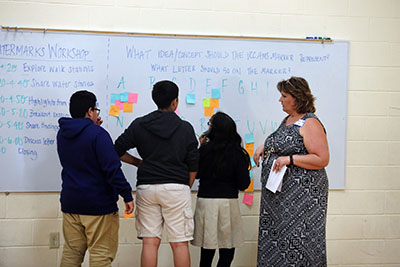 Finally, it was time to count the votes for the letter and concept to represent the role of water in the neighborhood! The group selected the letter “A” for several reasons; A is for Agua, Acosta, and Art, and it represents the highest grade that a student can receive. The first letter of the alphabet also seemed like an appropriate choice for the inaugural marker at this new pioneering school. We look forward to seeing the marker installed later this year!
Finally, it was time to count the votes for the letter and concept to represent the role of water in the neighborhood! The group selected the letter “A” for several reasons; A is for Agua, Acosta, and Art, and it represents the highest grade that a student can receive. The first letter of the alphabet also seemed like an appropriate choice for the inaugural marker at this new pioneering school. We look forward to seeing the marker installed later this year!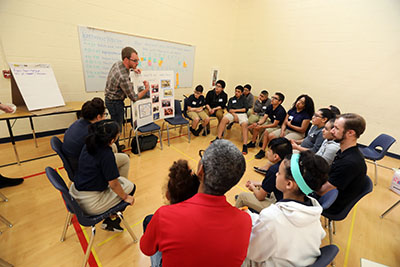
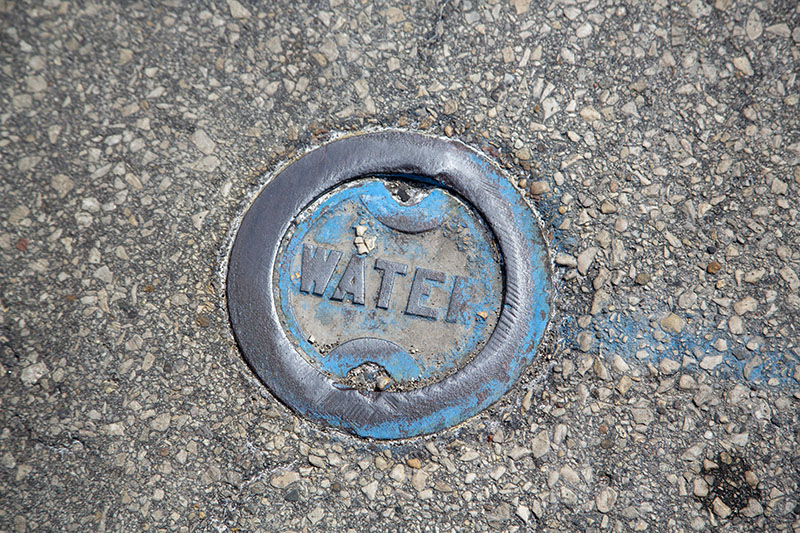
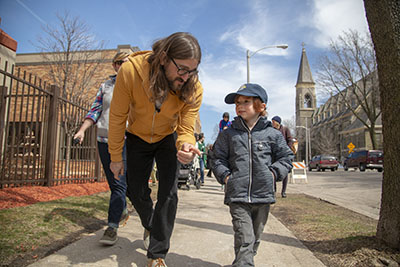 A scavenger hunt encouraged kids to identify stormwater infrastructure along the route, including manholes, storm grates, downspouts, and pavement types. Walking north toward National Avenue, Colin and Paige stopped to discuss the fish markings on a manhole cover. The fish was accompanied by a sign reading, “Dump No Waste,” alluding to how stormwater travels from the streets through the sewer system and eventually into a fish’s habitat in Lake Michigan.
A scavenger hunt encouraged kids to identify stormwater infrastructure along the route, including manholes, storm grates, downspouts, and pavement types. Walking north toward National Avenue, Colin and Paige stopped to discuss the fish markings on a manhole cover. The fish was accompanied by a sign reading, “Dump No Waste,” alluding to how stormwater travels from the streets through the sewer system and eventually into a fish’s habitat in Lake Michigan.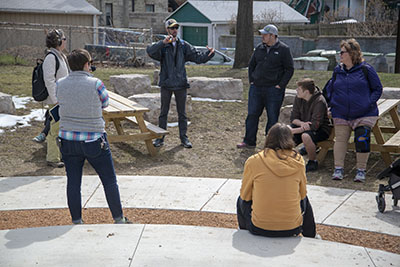 In making this connection, the kids on the walk became energized to pick up litter from the streets, making a timely Earth Day contribution to cleaner, healthier rivers and lake! The group stopped on National and 7th to discuss a new development that includes designs for green infrastructure such as rain gardens, green space, and, as one of the participants pointed out, possibly a green roof. Participants learned about the importance of integration of water management and green infrastructure in urban development. At an empty lot, the group envisaged means for homeowners to contribute to a healthier water system by adding landscape features such as vegetation, intentional landscaping, and rain barrels to capture rainwater where it falls. Paige discussed how rain barrels help to reduce stress on the combined sewer system during periods of heavy rainfall.
In making this connection, the kids on the walk became energized to pick up litter from the streets, making a timely Earth Day contribution to cleaner, healthier rivers and lake! The group stopped on National and 7th to discuss a new development that includes designs for green infrastructure such as rain gardens, green space, and, as one of the participants pointed out, possibly a green roof. Participants learned about the importance of integration of water management and green infrastructure in urban development. At an empty lot, the group envisaged means for homeowners to contribute to a healthier water system by adding landscape features such as vegetation, intentional landscaping, and rain barrels to capture rainwater where it falls. Paige discussed how rain barrels help to reduce stress on the combined sewer system during periods of heavy rainfall. 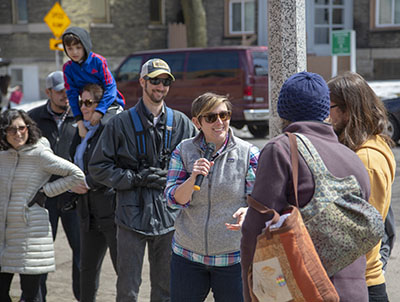 The day ended at Paliafito EcPaliafitork on 3rd and Walker where the group witnessed the epitome of innovative, green infrastructure right in their neighborhood. We concluded the walk with an energizing open discussion on visioning the future of green infrastructure in Milwaukee and how communities can contribute to a sustainable future.
The day ended at Paliafito EcPaliafitork on 3rd and Walker where the group witnessed the epitome of innovative, green infrastructure right in their neighborhood. We concluded the walk with an energizing open discussion on visioning the future of green infrastructure in Milwaukee and how communities can contribute to a sustainable future.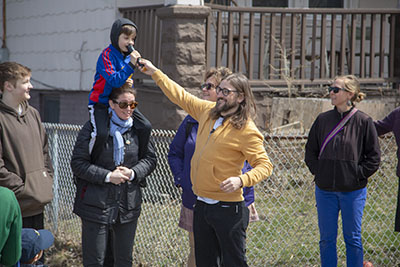
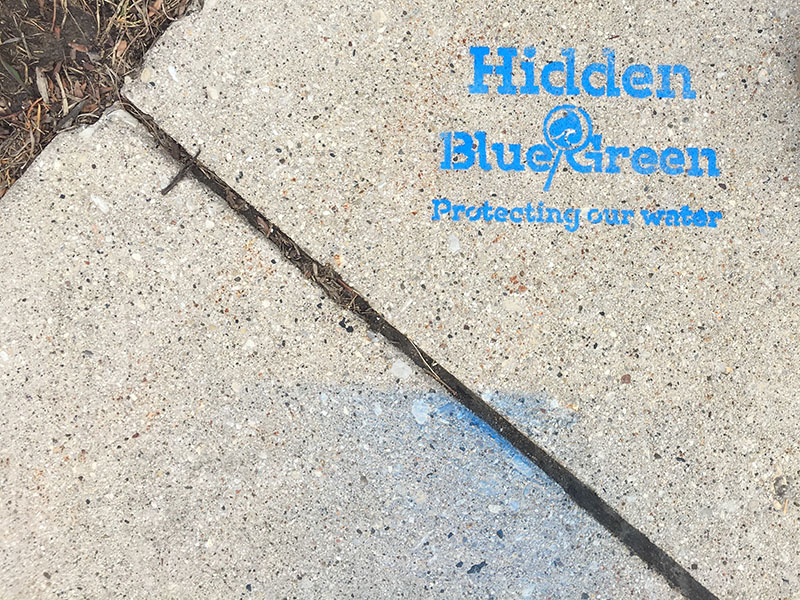
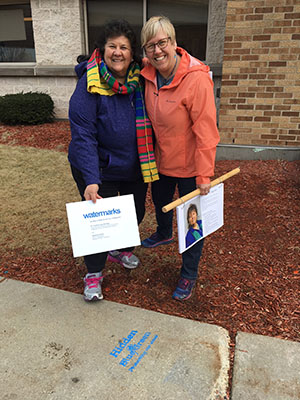 On March 28th, 2018, 44 UCC Acosta Middle School students, teachers and community members met for the second installment of WaterMarks neighborhood walks. Melanie Ariens, artiAriensresidence for Water Commons, and Dr. Carmen Aguilar, Associate Scientist at UWM School of Freshwater Sciences, teamed up to facilitate a multifaceted exploration of green infrastructure in the neighborhood and its impact on water systems management.
On March 28th, 2018, 44 UCC Acosta Middle School students, teachers and community members met for the second installment of WaterMarks neighborhood walks. Melanie Ariens, artiAriensresidence for Water Commons, and Dr. Carmen Aguilar, Associate Scientist at UWM School of Freshwater Sciences, teamed up to facilitate a multifaceted exploration of green infrastructure in the neighborhood and its impact on water systems management.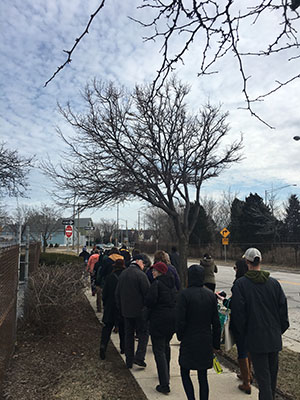 The walk titled, "Hidden Green/Blue," led students from UCC Acosta Middle School to the School of Freshwater Sciences by way of Washington Street, South Polycn StreePolycn Greenfield Avenue. Melanie Ariens stencAriensHidden Blue/Green" logos along the route, which students enjoyed pointing out at each stop along the way. The scientist/artist team pointed out the green roofs at UCC, Bruce Guadalupe, Braise restaurant, 88.9 Radio Milwaukee, the Clock Shadow Building, and the School of Freshwater Sciences as well as raingardens,raingardensls, pervious pavement, and water reclamation systems. Carmen Aguilar was excited "to see students using their knowledge about the water cycle and how that relates to the effects of rain." She started working with rain in North Carolina, looking at the effects on Chesapeake Bay, coastal areas, and open ocean in the Atlantic, and now continues her research in Milwaukee with Lake Michigan.
The walk titled, "Hidden Green/Blue," led students from UCC Acosta Middle School to the School of Freshwater Sciences by way of Washington Street, South Polycn StreePolycn Greenfield Avenue. Melanie Ariens stencAriensHidden Blue/Green" logos along the route, which students enjoyed pointing out at each stop along the way. The scientist/artist team pointed out the green roofs at UCC, Bruce Guadalupe, Braise restaurant, 88.9 Radio Milwaukee, the Clock Shadow Building, and the School of Freshwater Sciences as well as raingardens,raingardensls, pervious pavement, and water reclamation systems. Carmen Aguilar was excited "to see students using their knowledge about the water cycle and how that relates to the effects of rain." She started working with rain in North Carolina, looking at the effects on Chesapeake Bay, coastal areas, and open ocean in the Atlantic, and now continues her research in Milwaukee with Lake Michigan.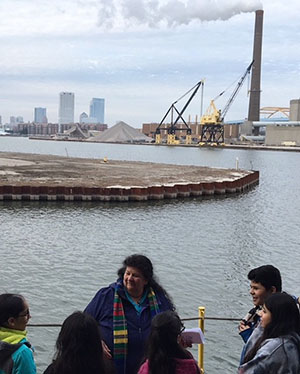 The walk culminated at the School of Freshwater Sciences where participants viewed a classroom laboratory aquaponics saquaponicsobserved a quagga mussels science experiment that demonstrated the impact of invasive species on Lake Michigan. Melanie then lead a hands-on activity where students used origami to create a pamphlet about the Great Lakes. At the end of the day, everyone received a blue marble which represented the importance of water and put the "earth" in the palm of their hand.
The walk culminated at the School of Freshwater Sciences where participants viewed a classroom laboratory aquaponics saquaponicsobserved a quagga mussels science experiment that demonstrated the impact of invasive species on Lake Michigan. Melanie then lead a hands-on activity where students used origami to create a pamphlet about the Great Lakes. At the end of the day, everyone received a blue marble which represented the importance of water and put the "earth" in the palm of their hand.